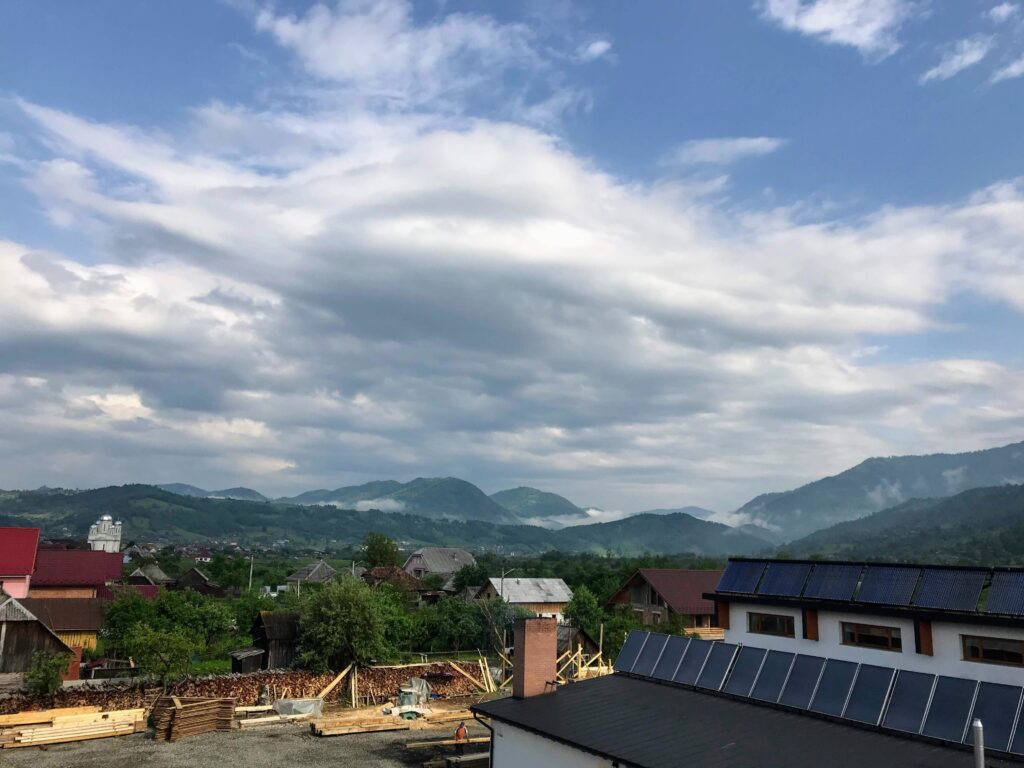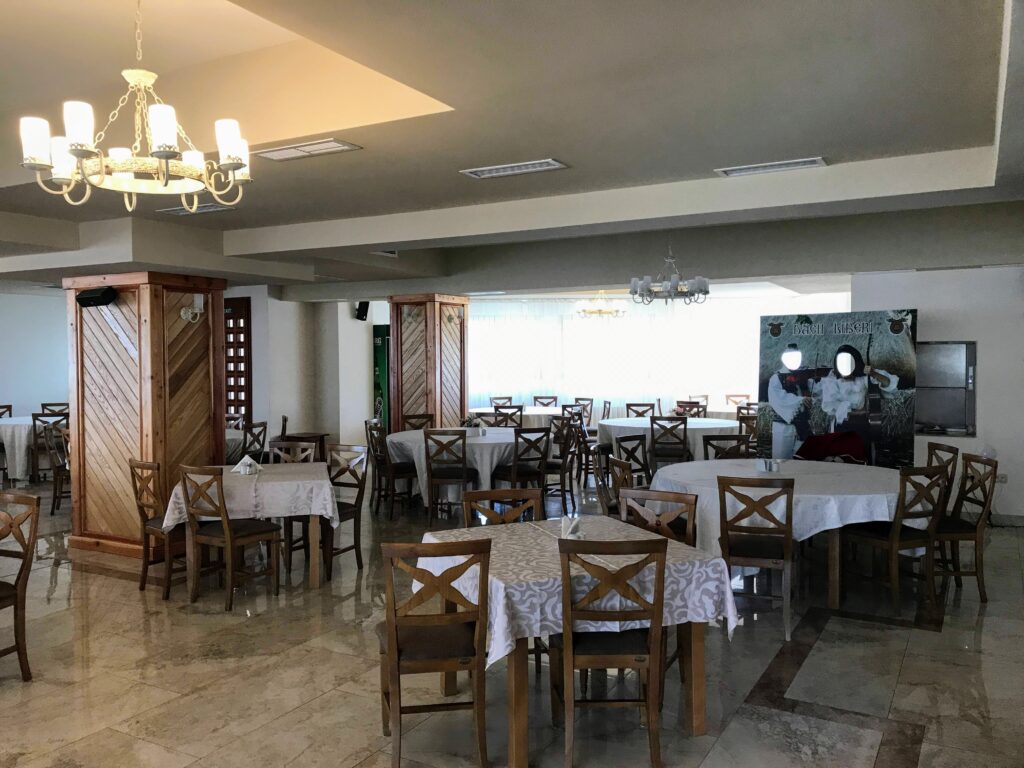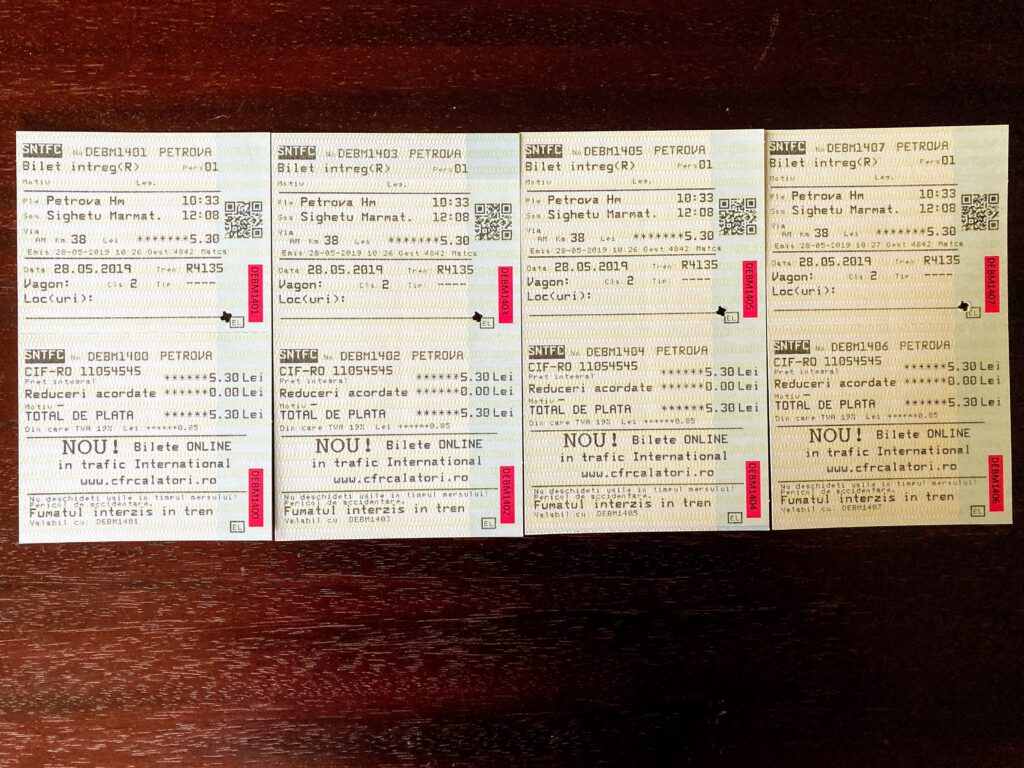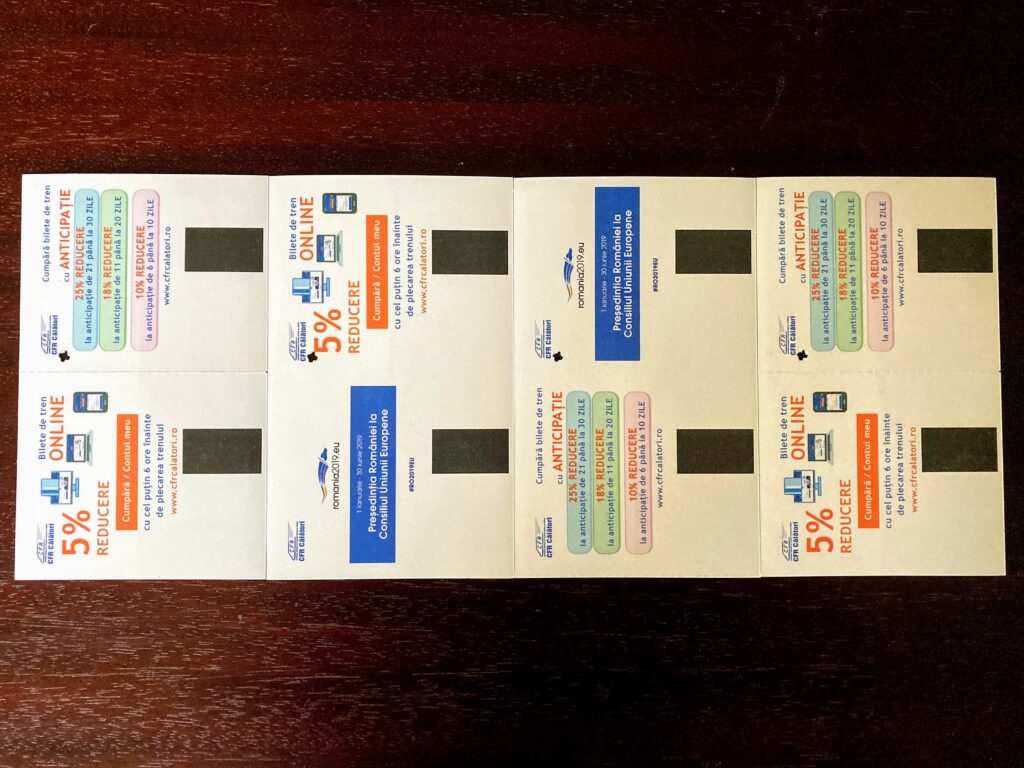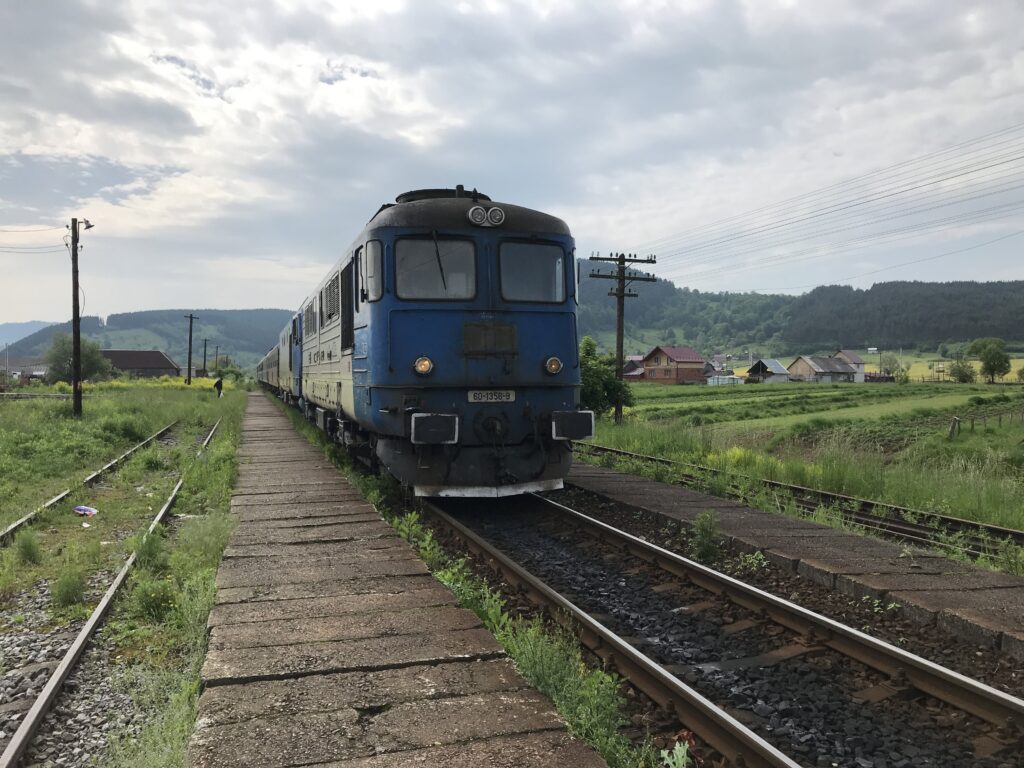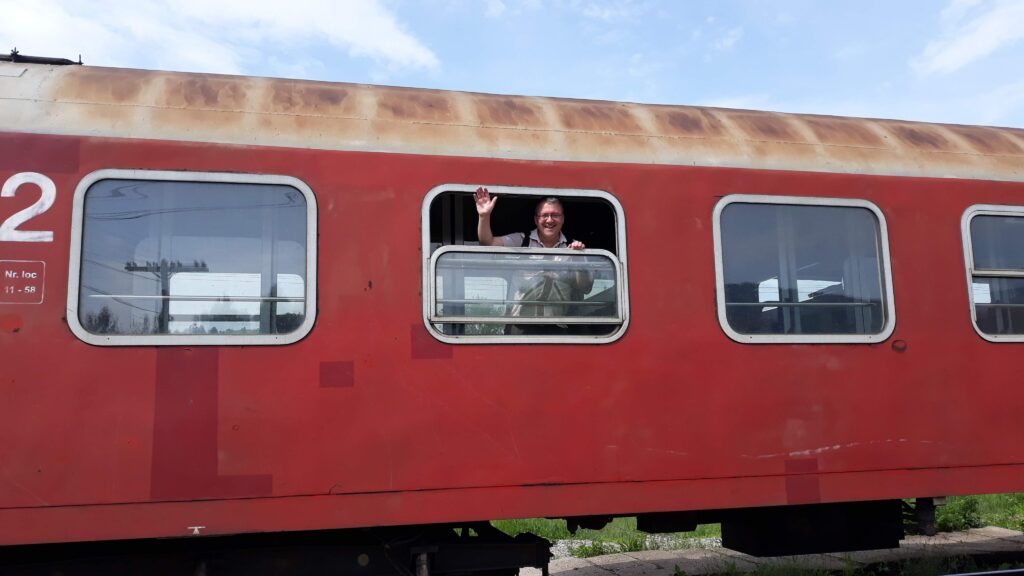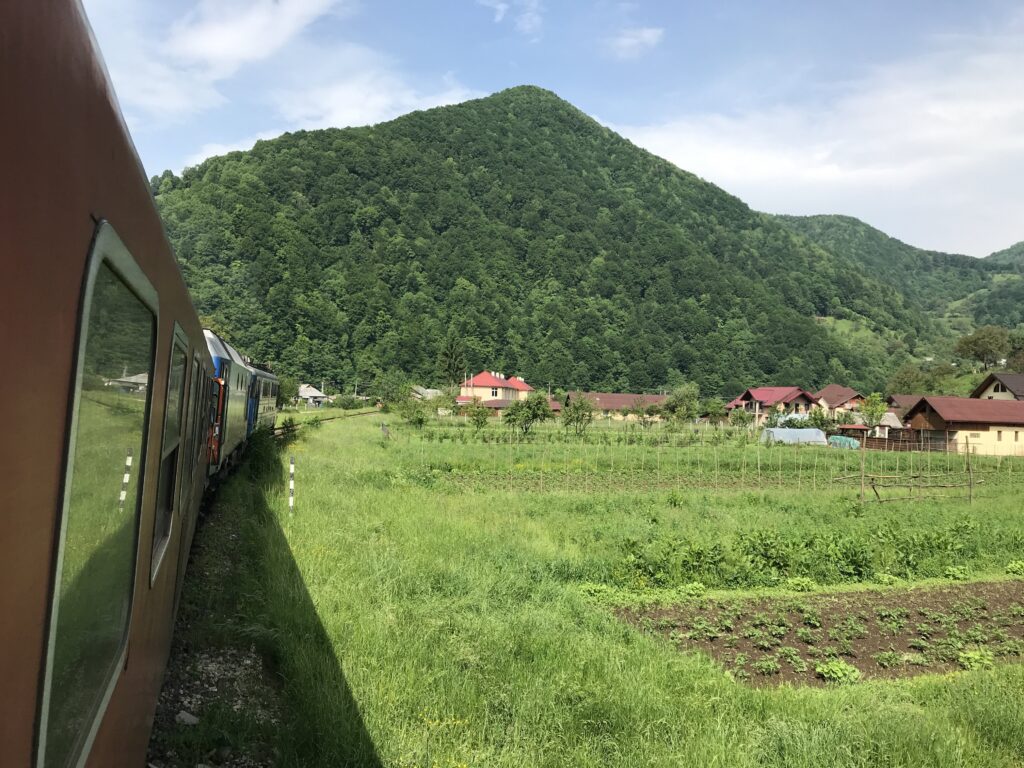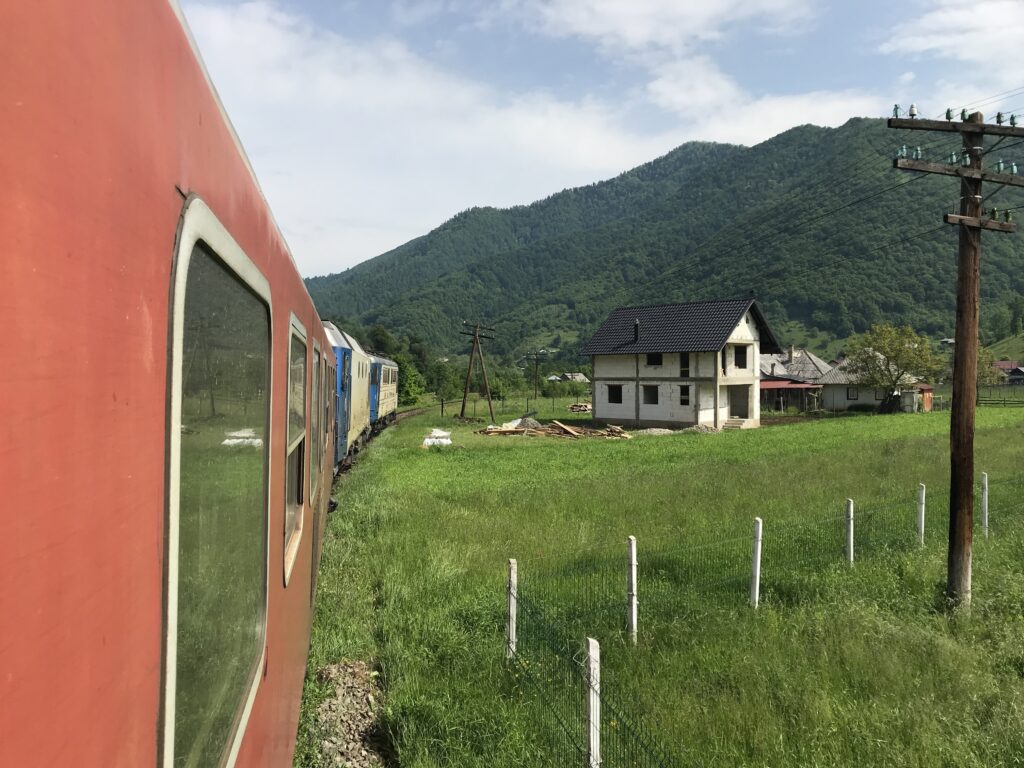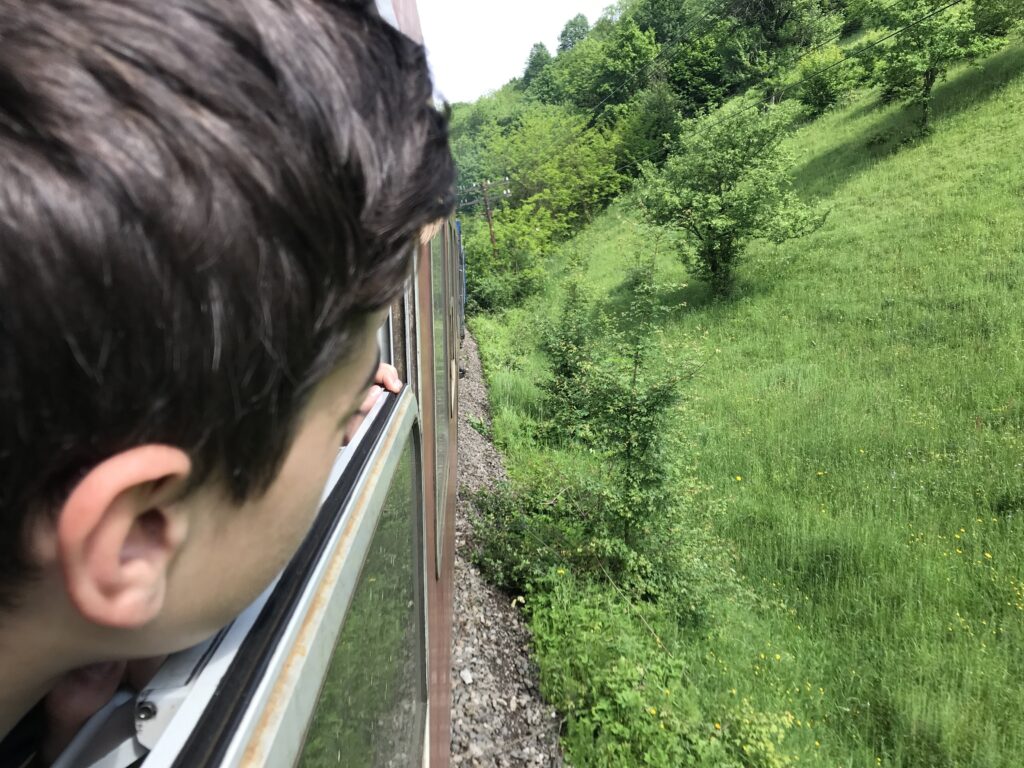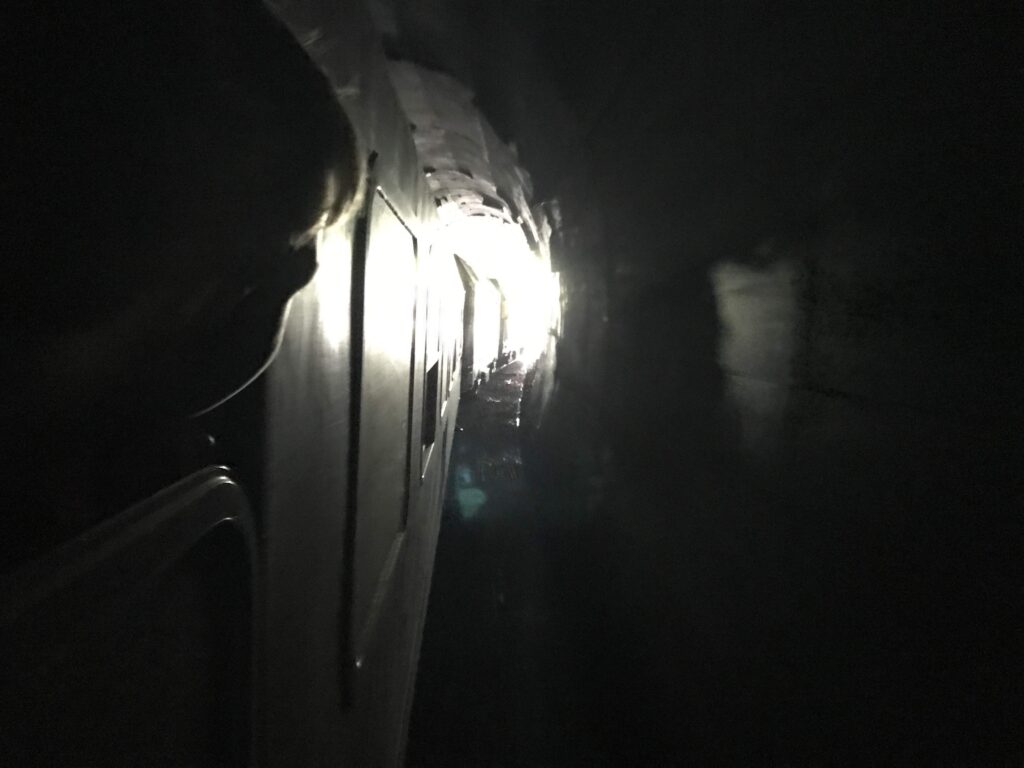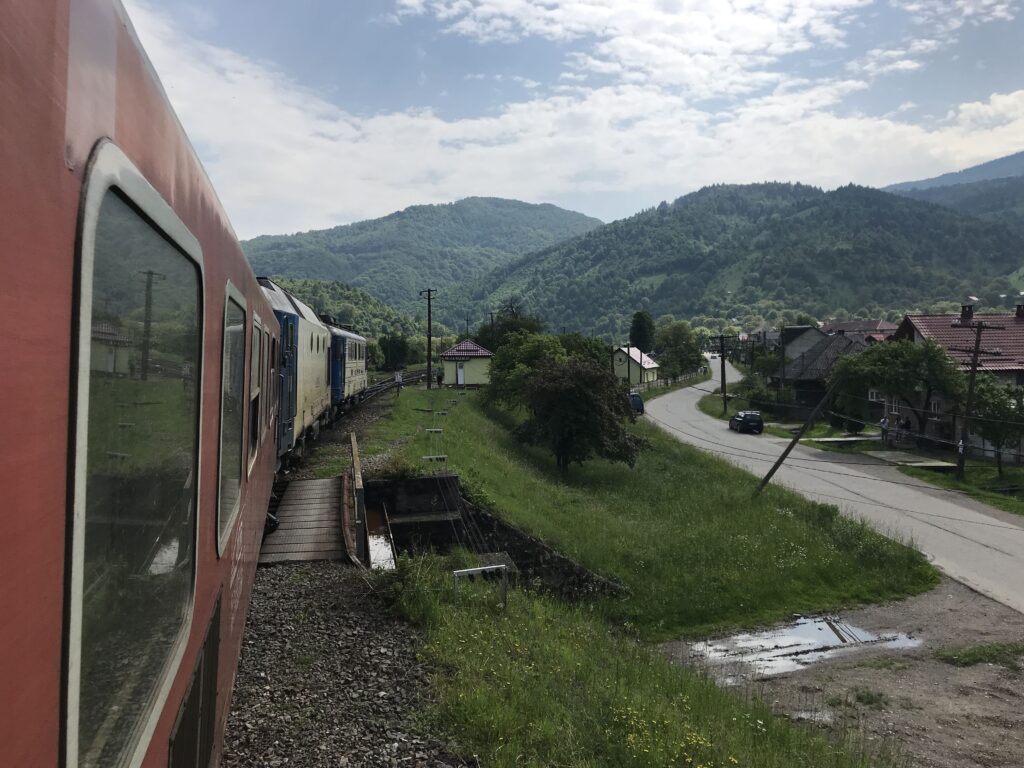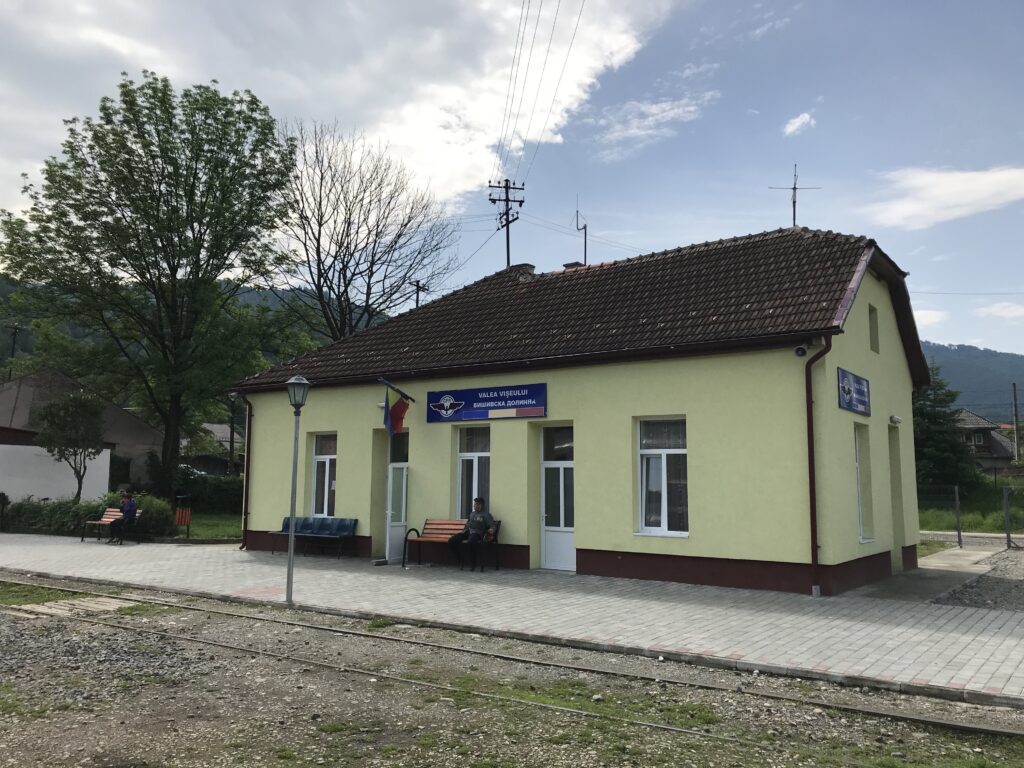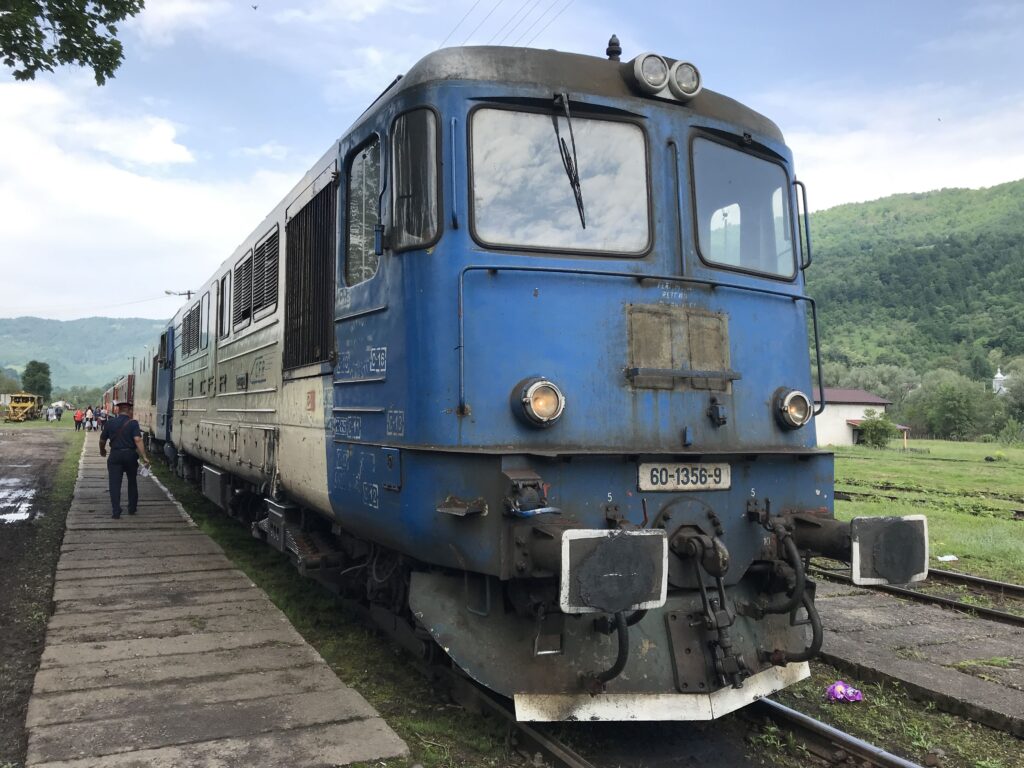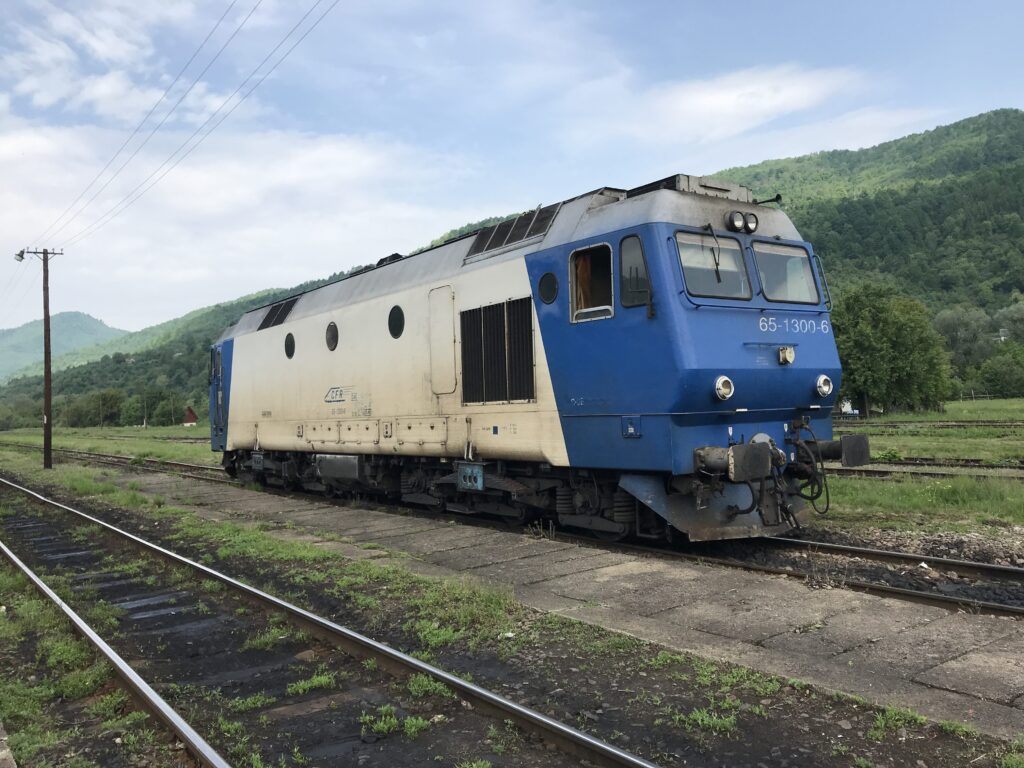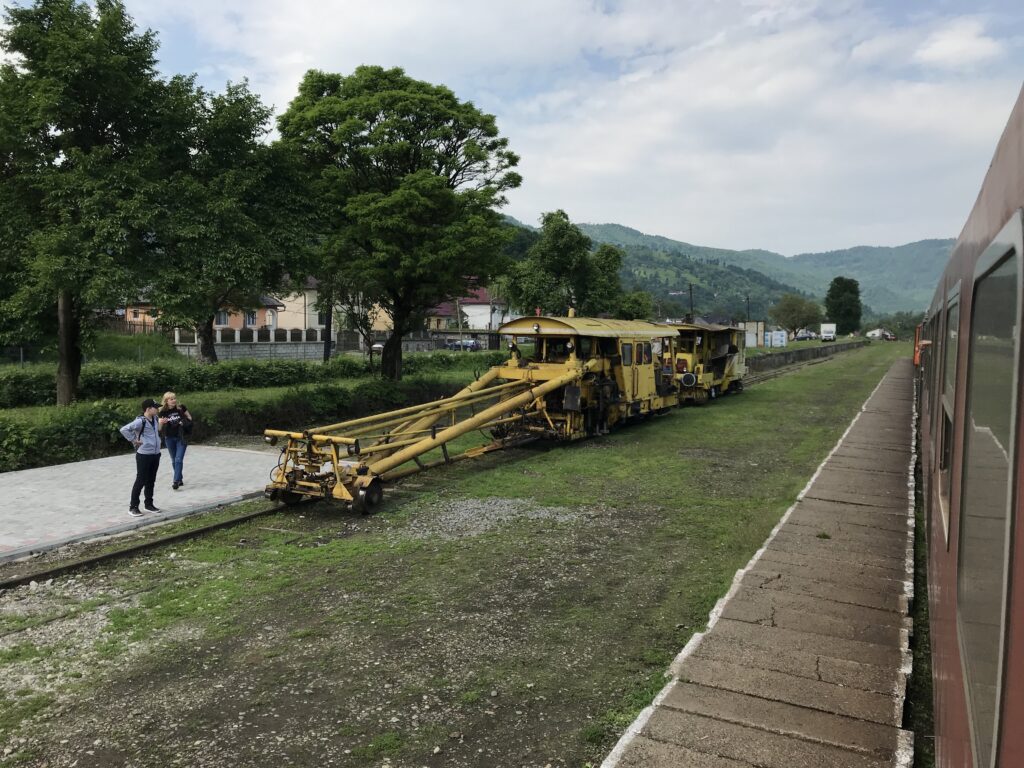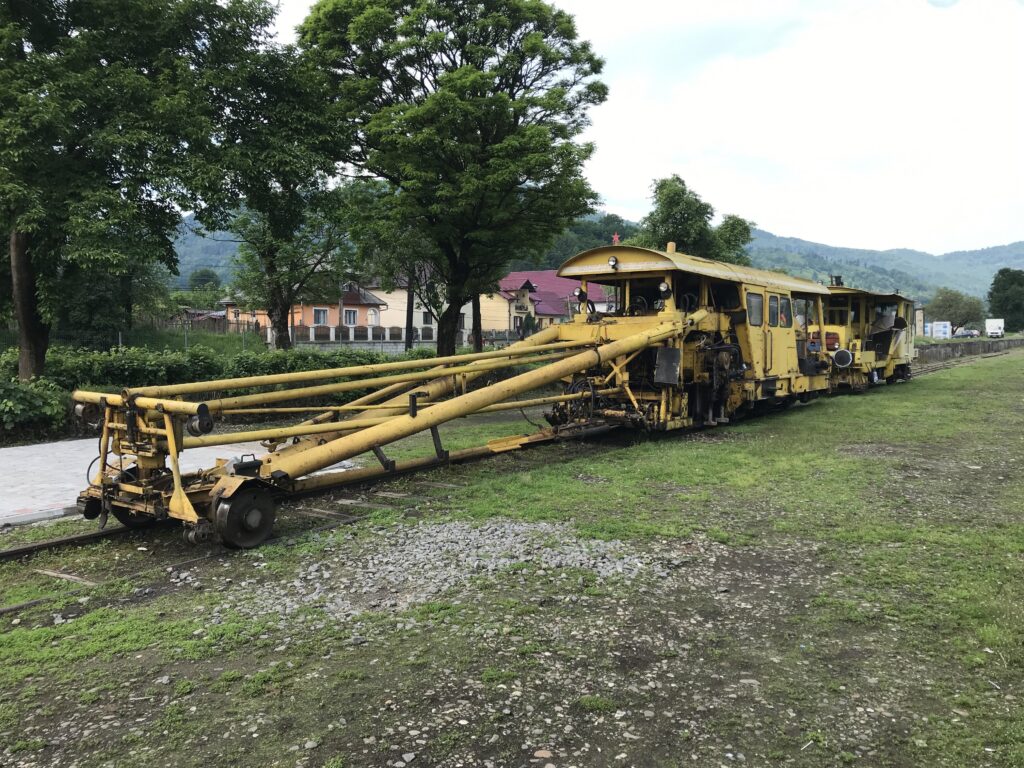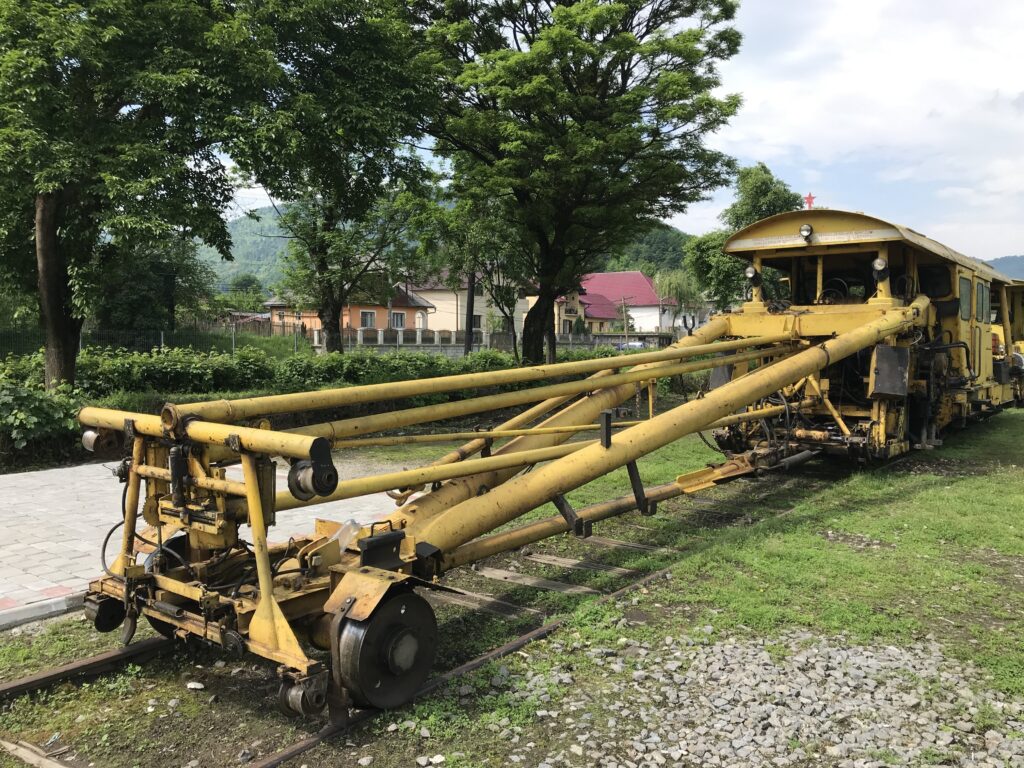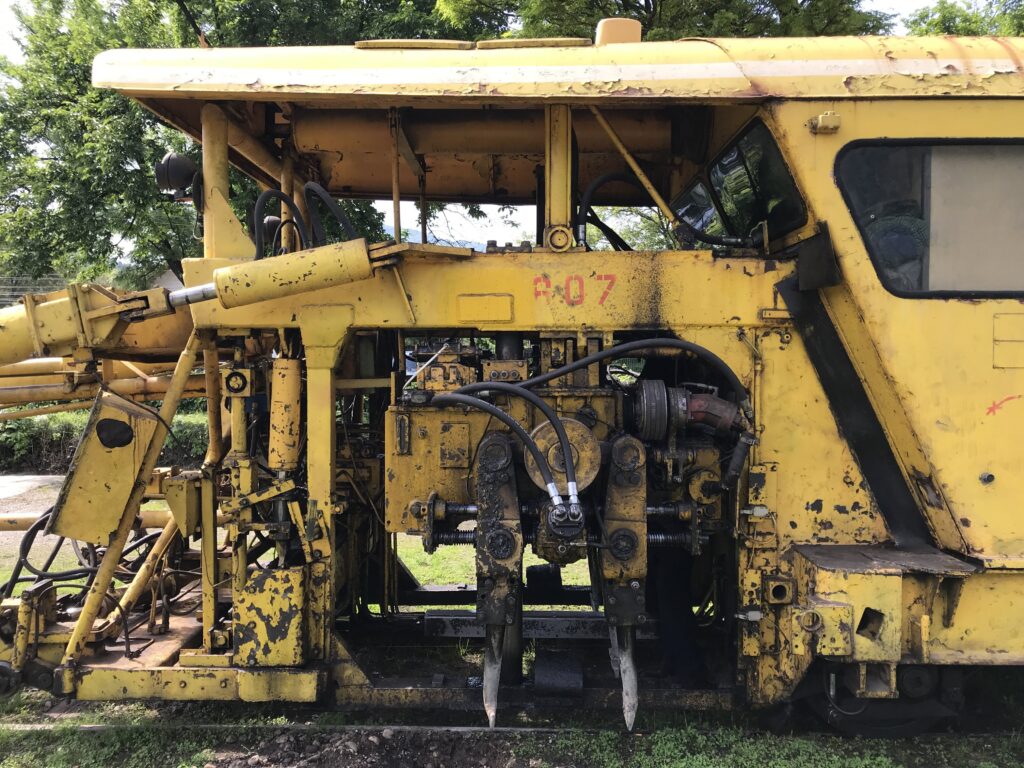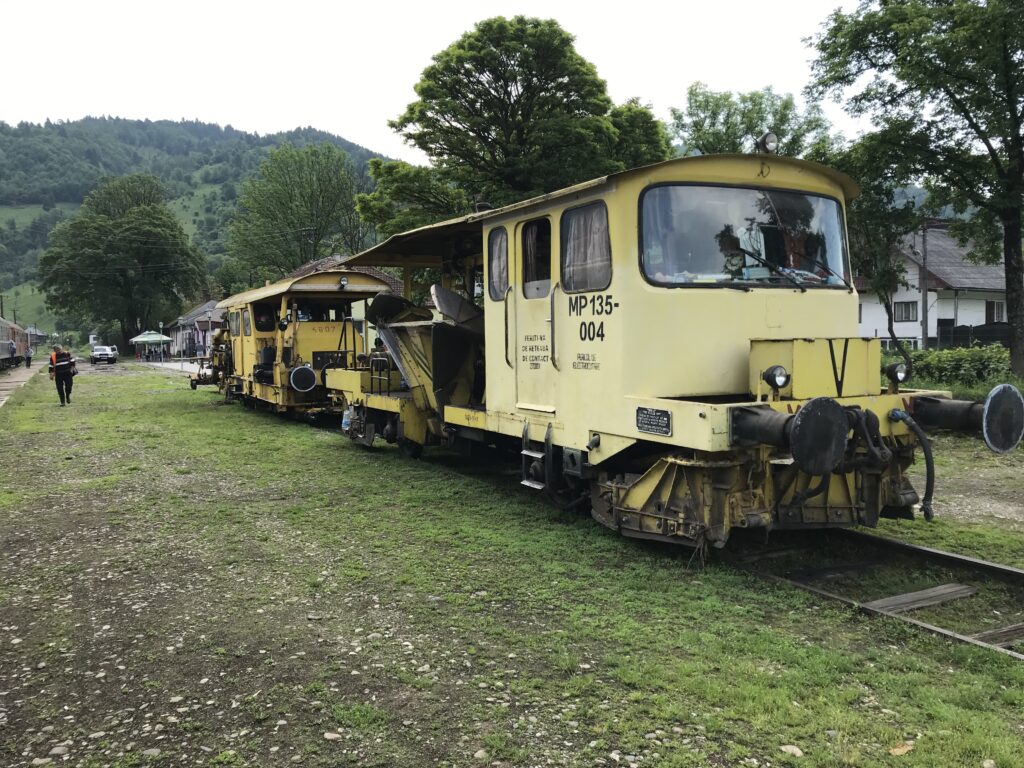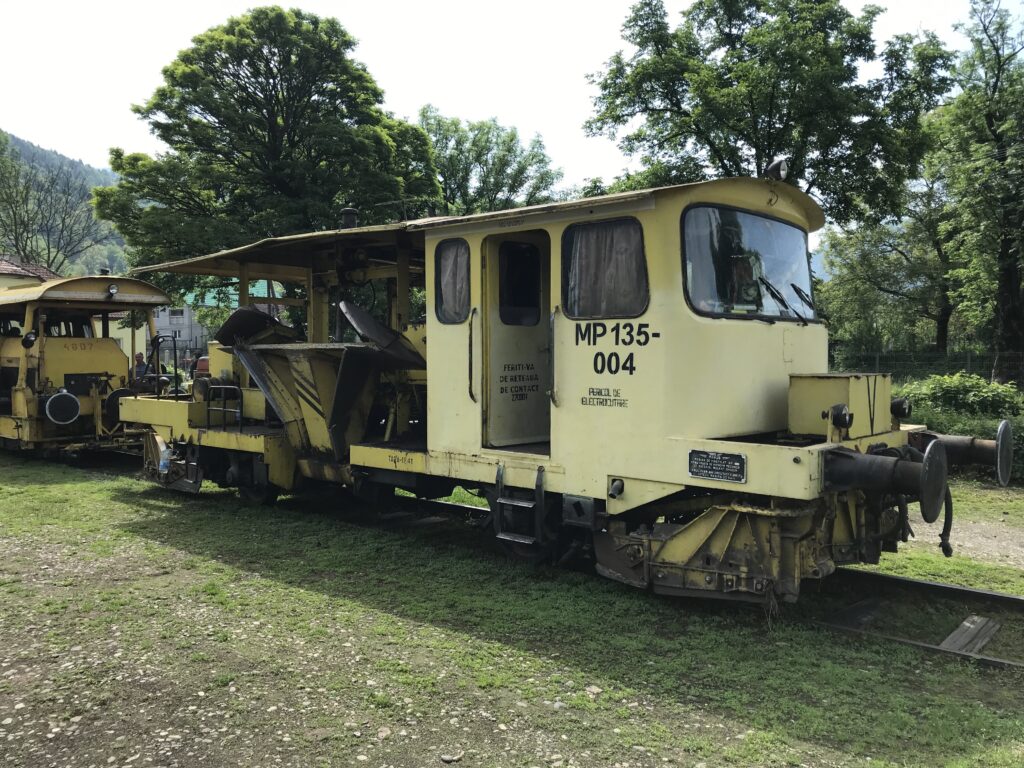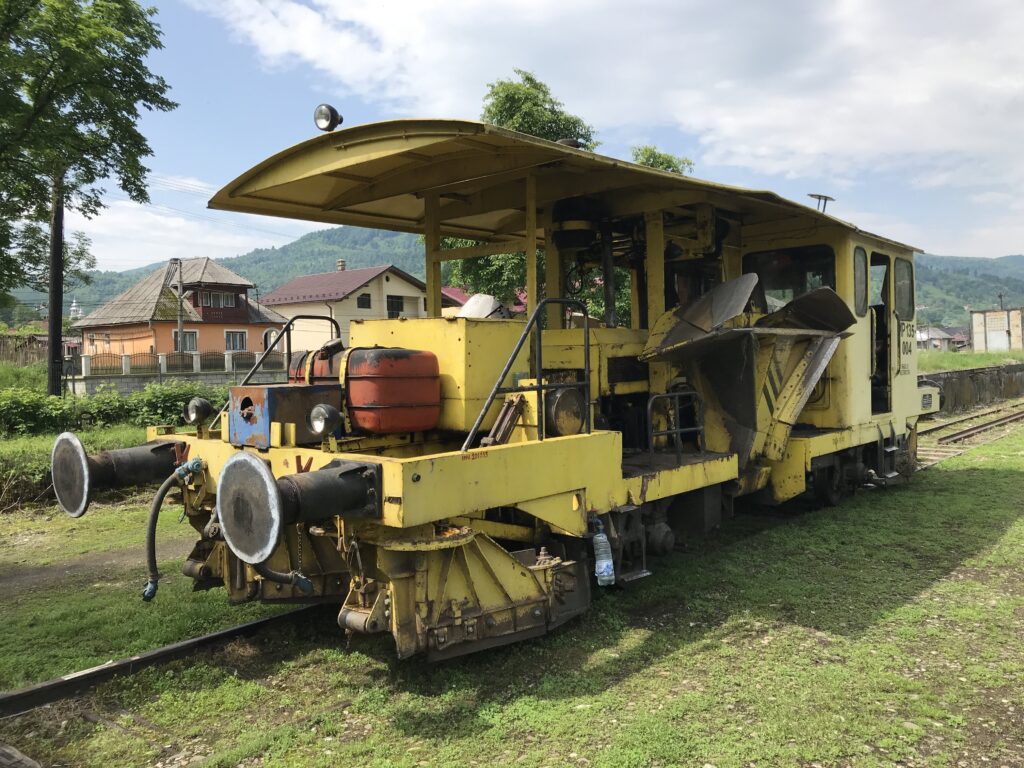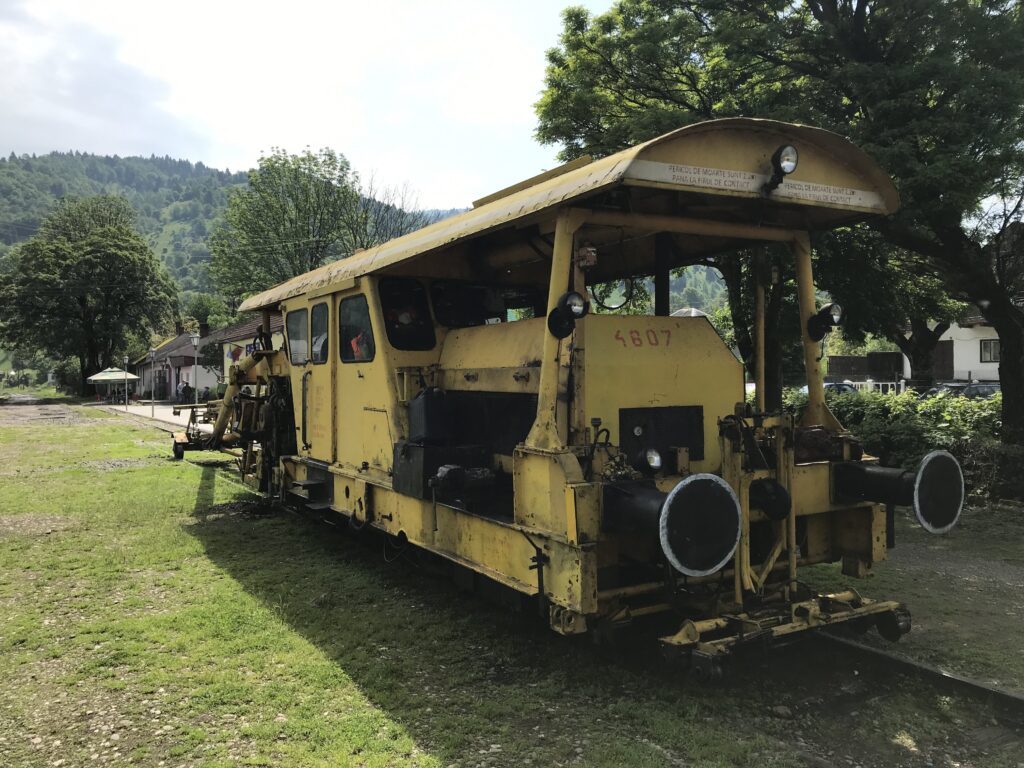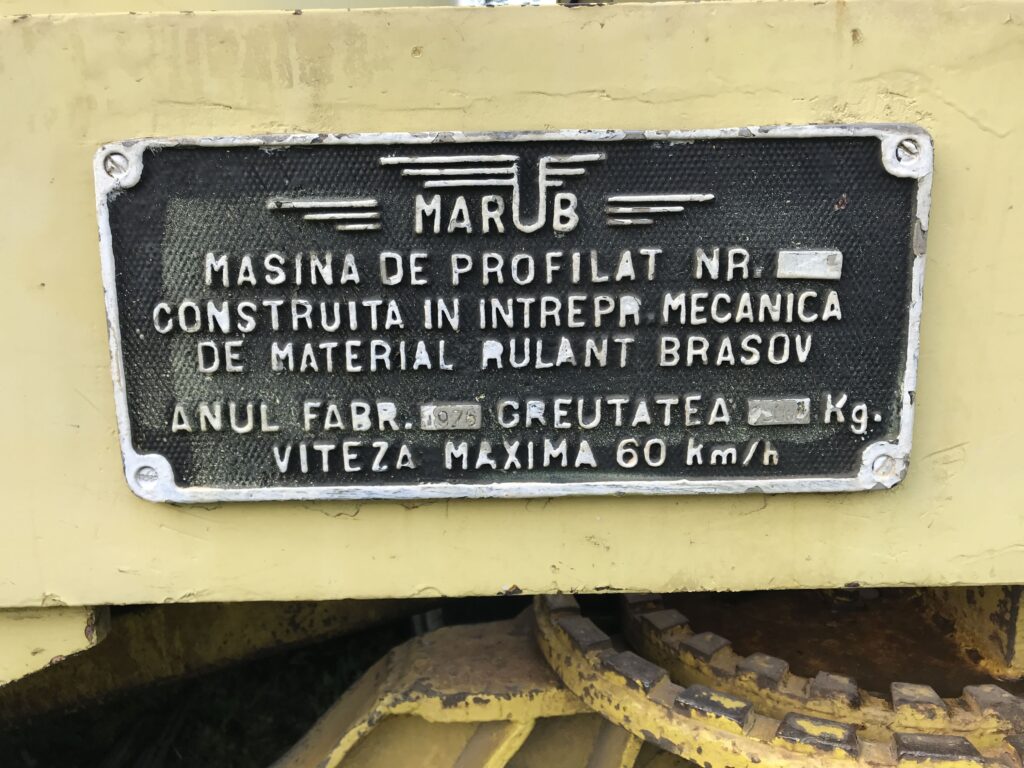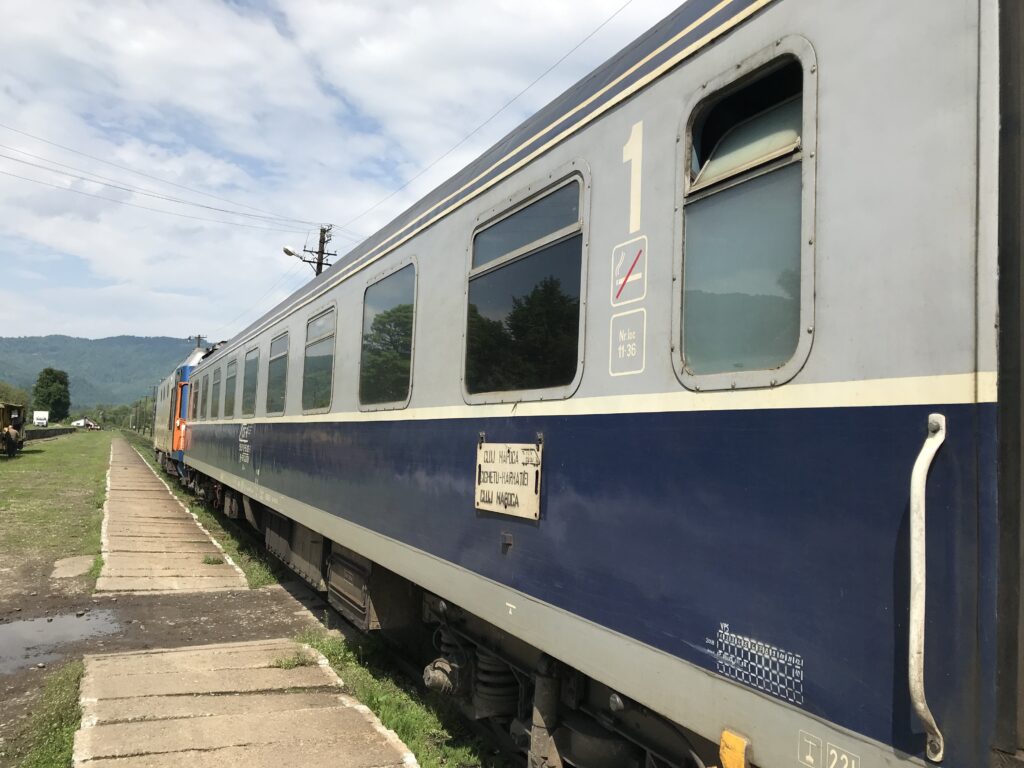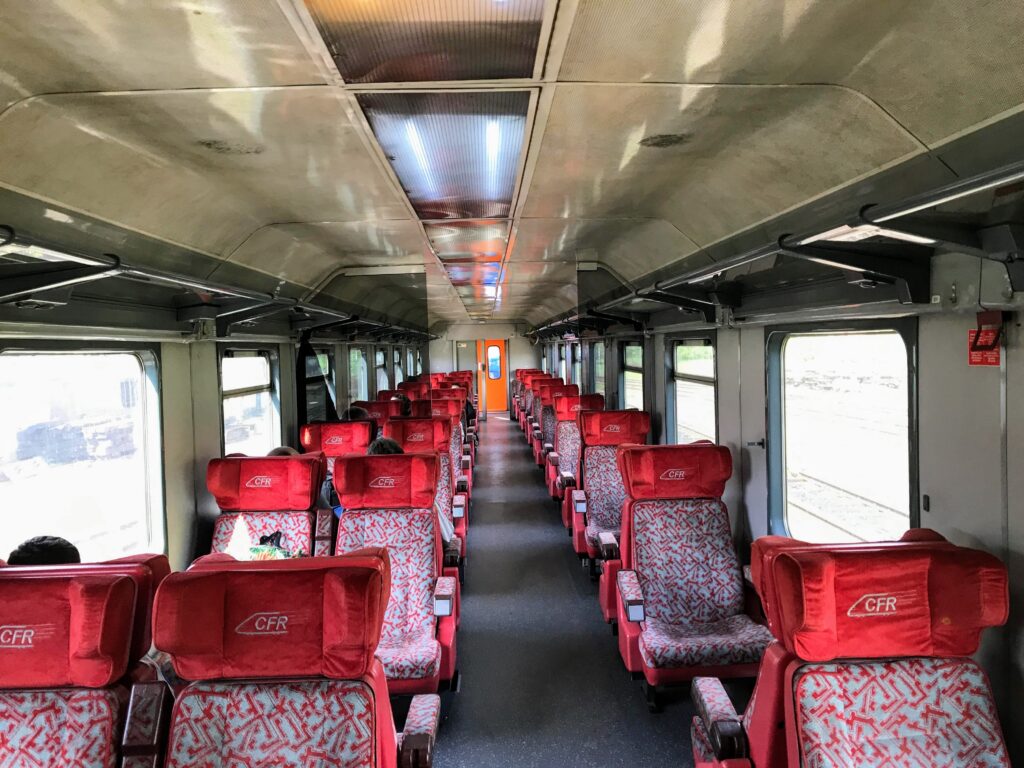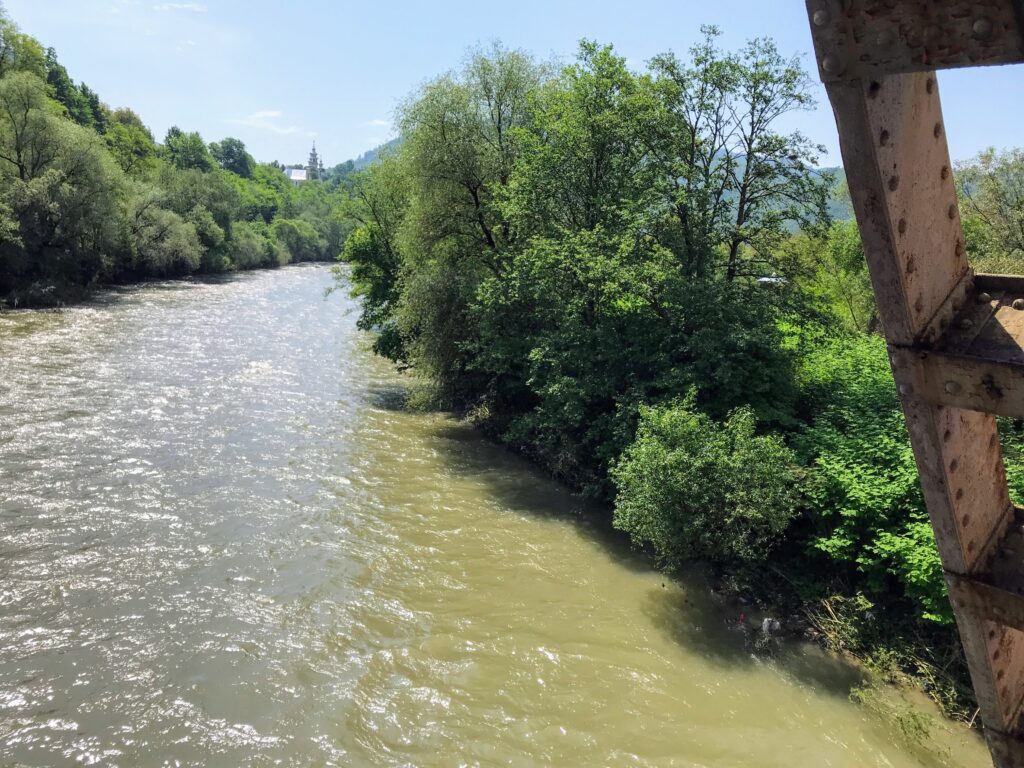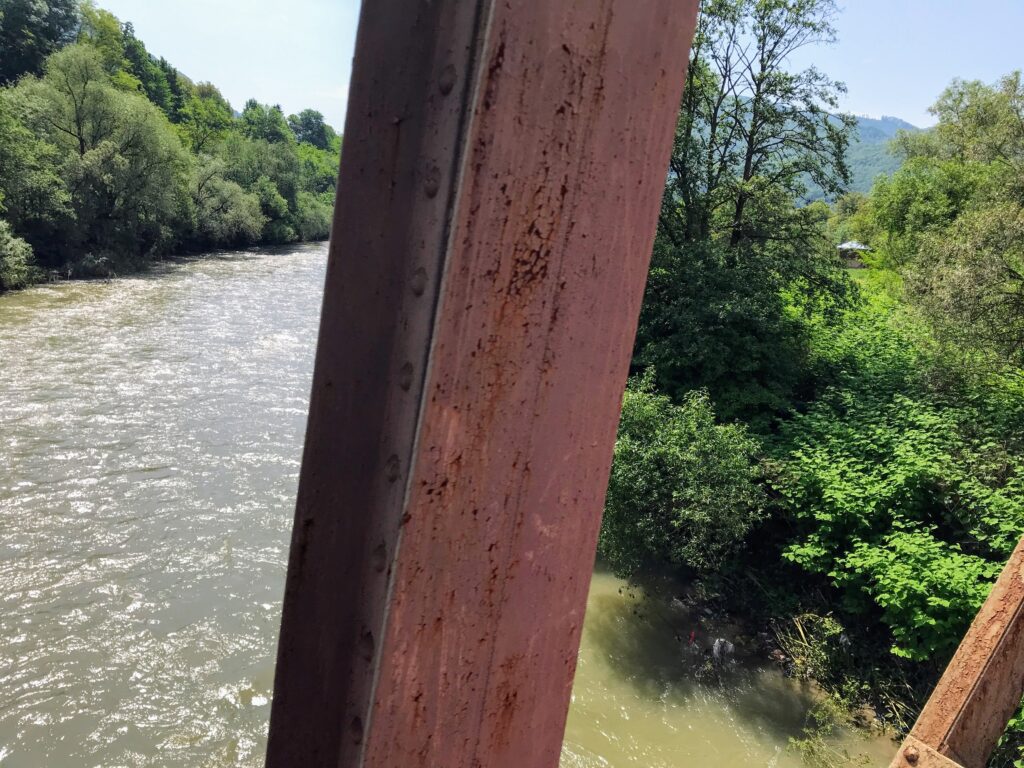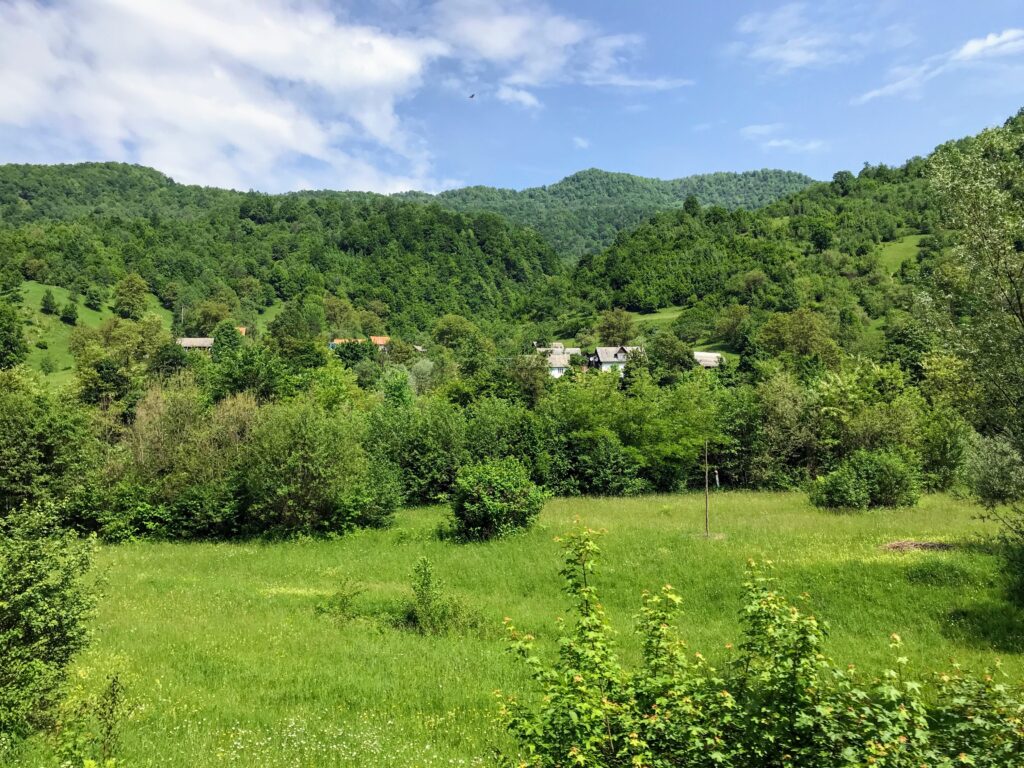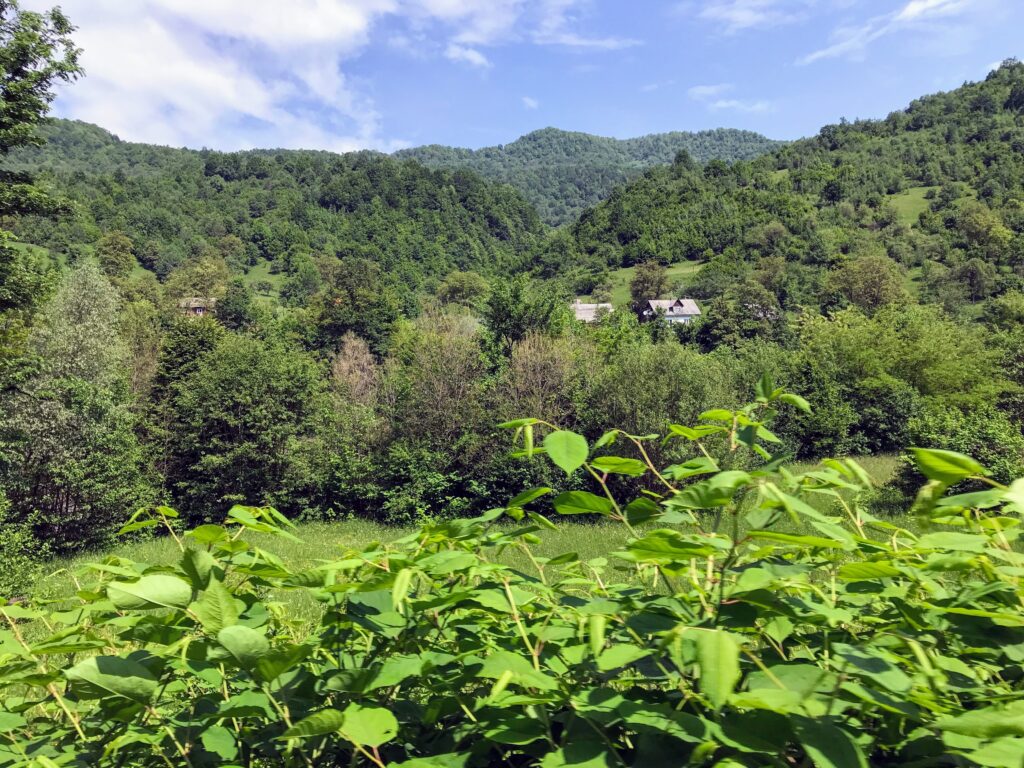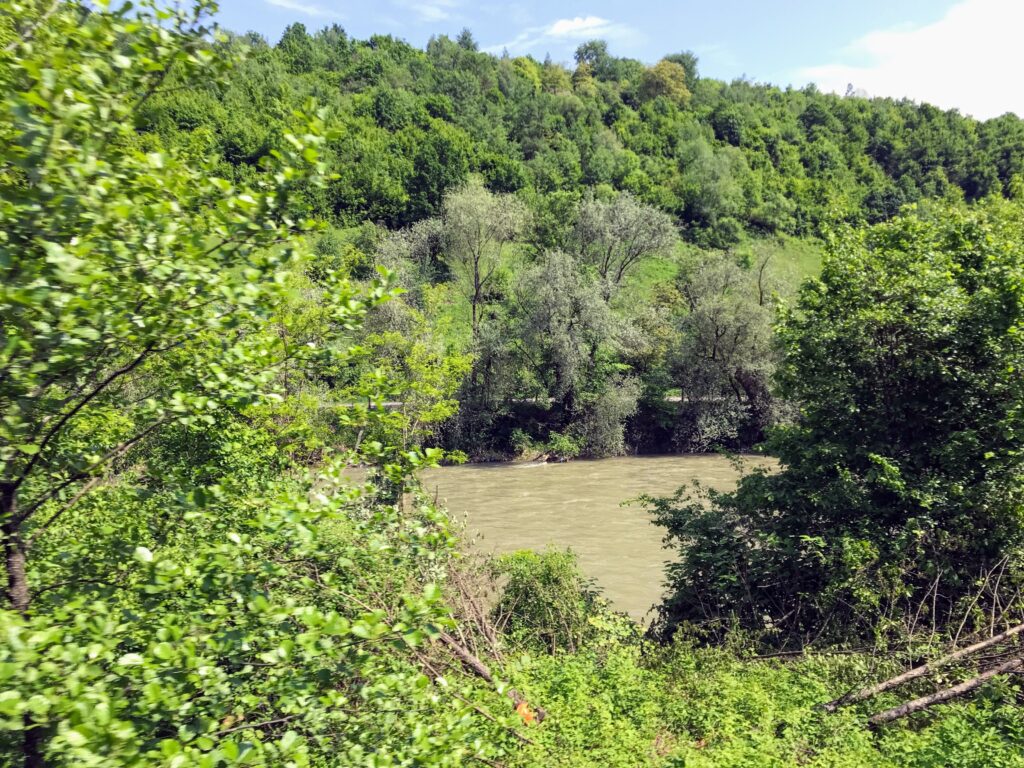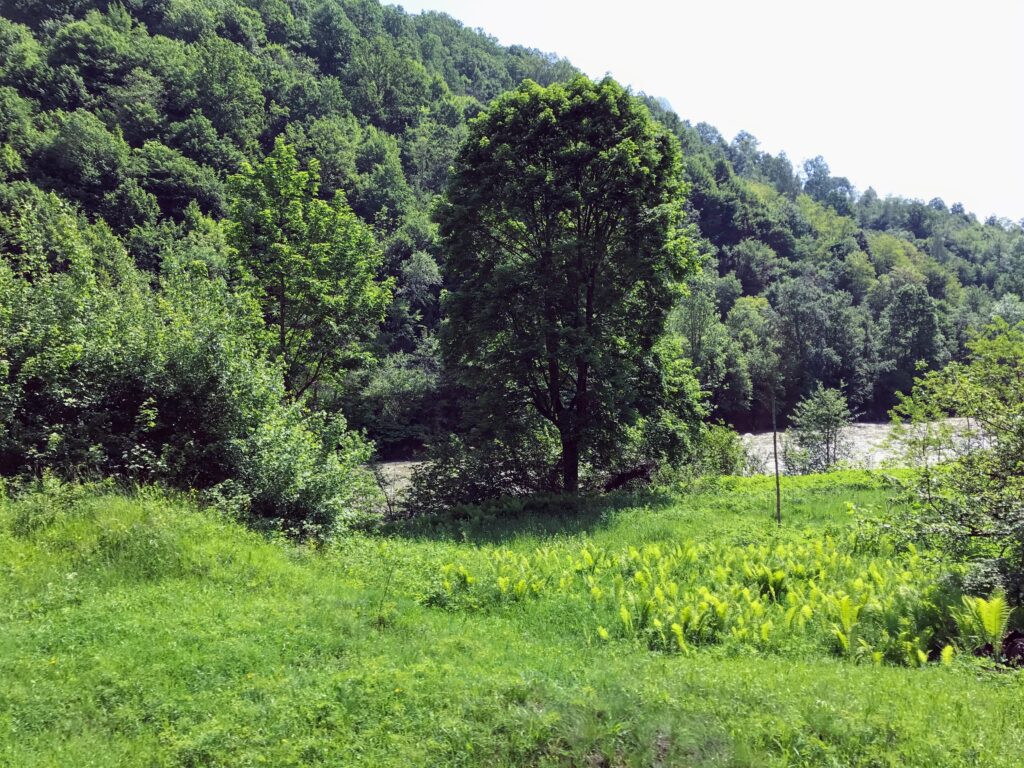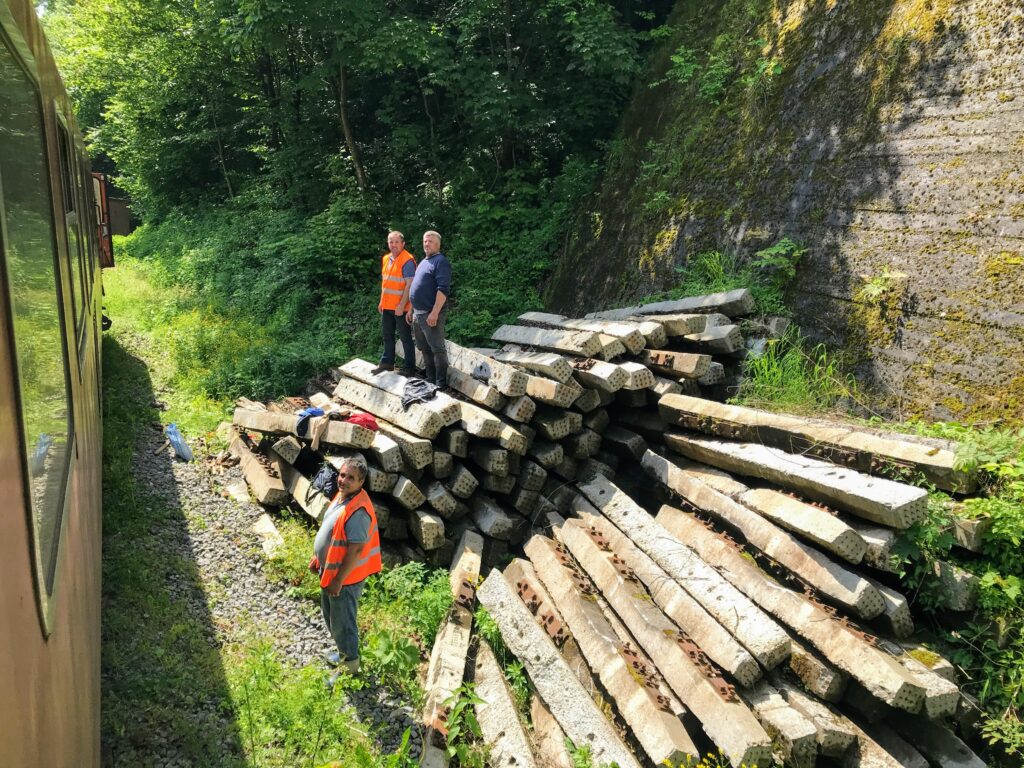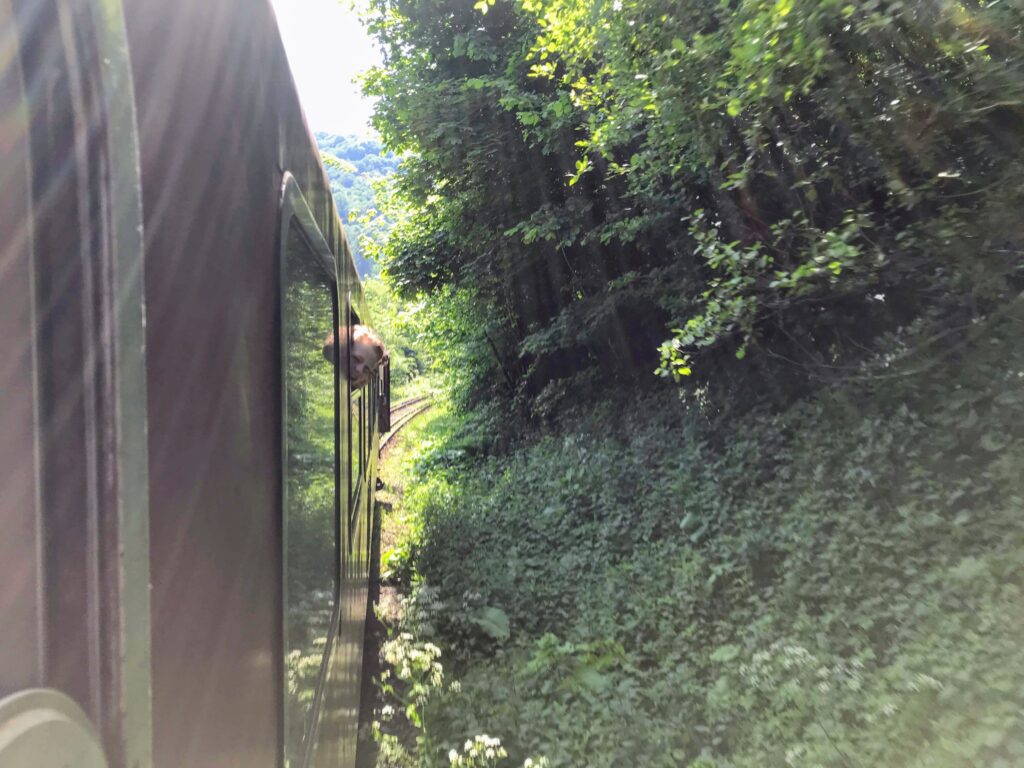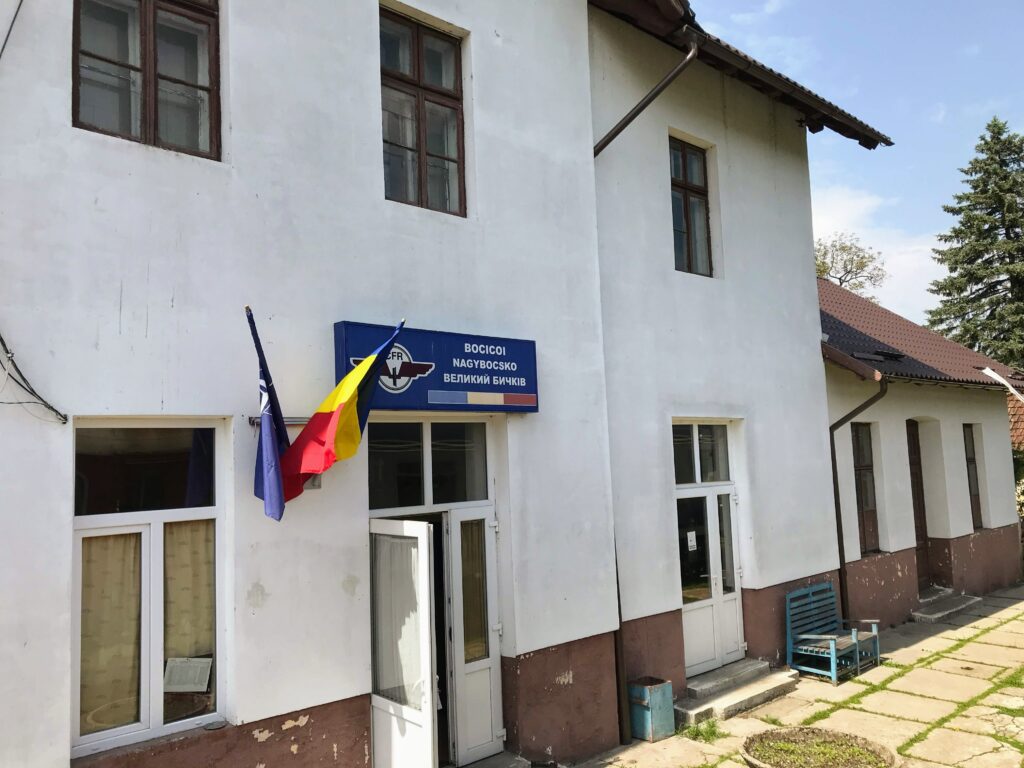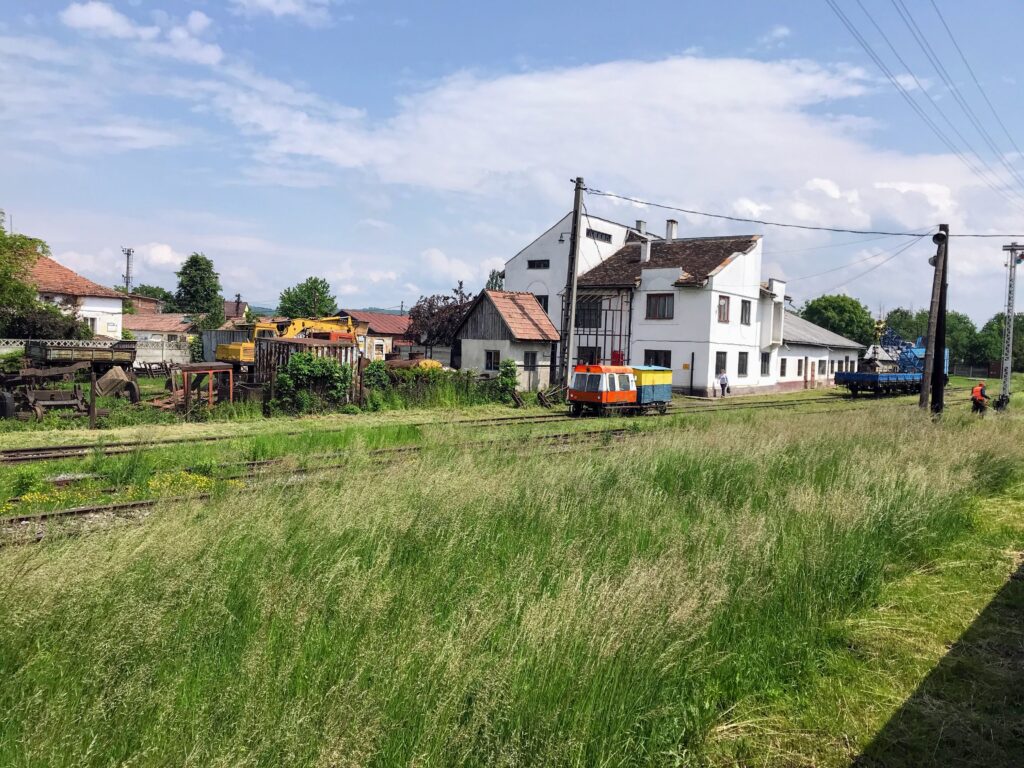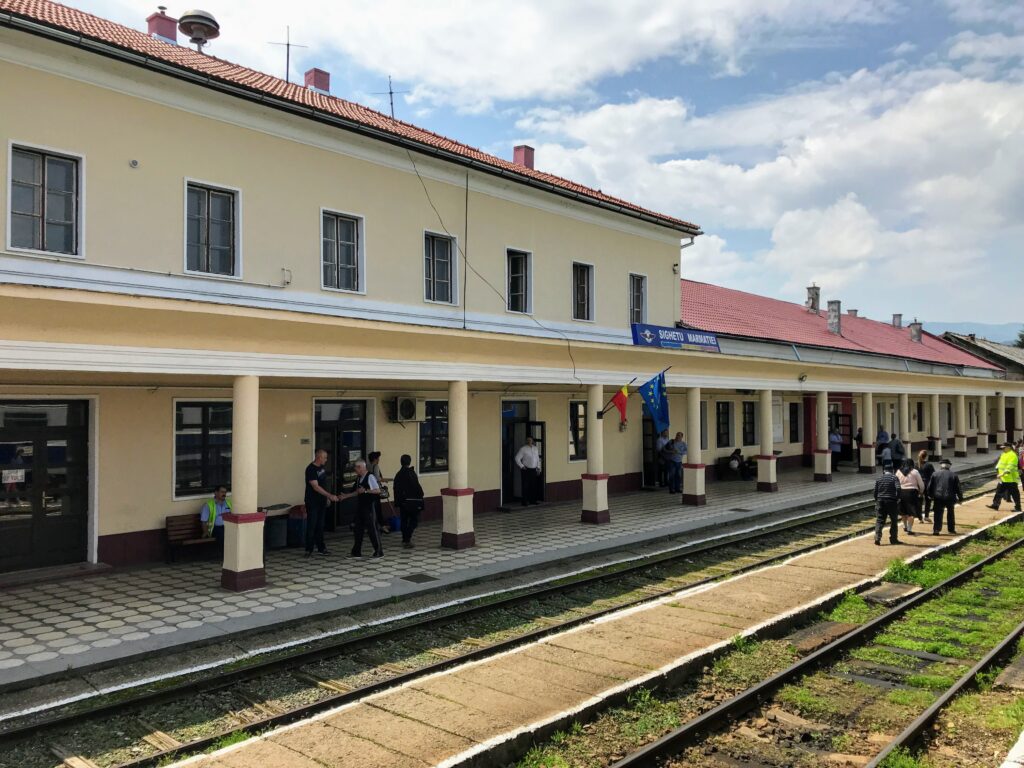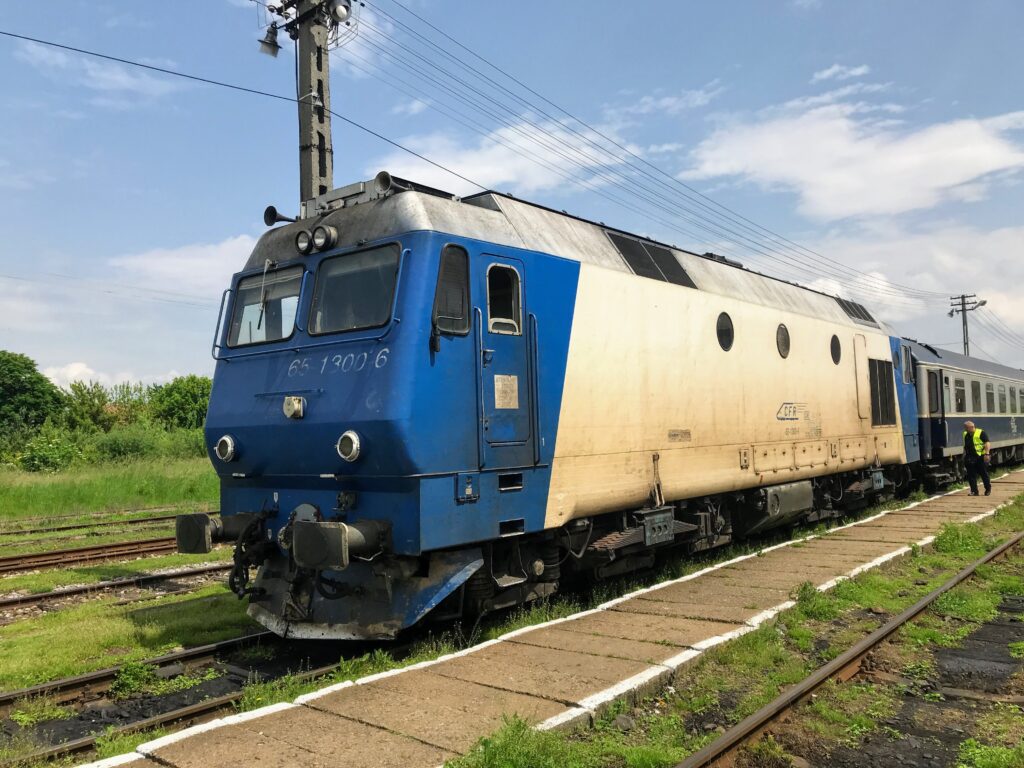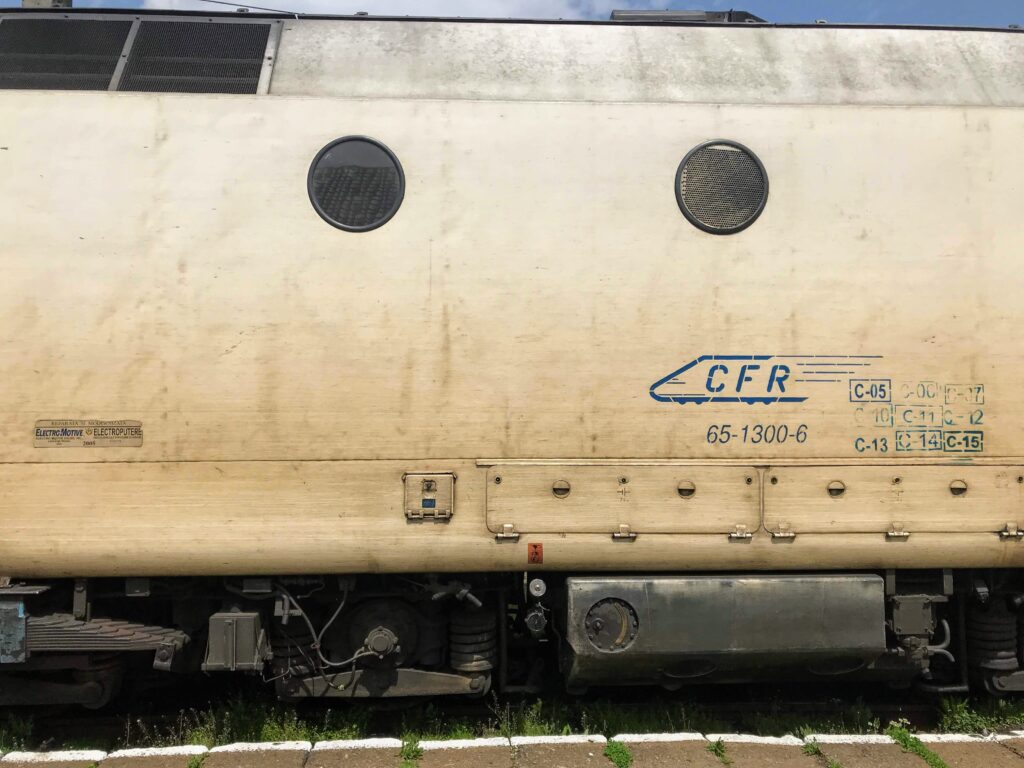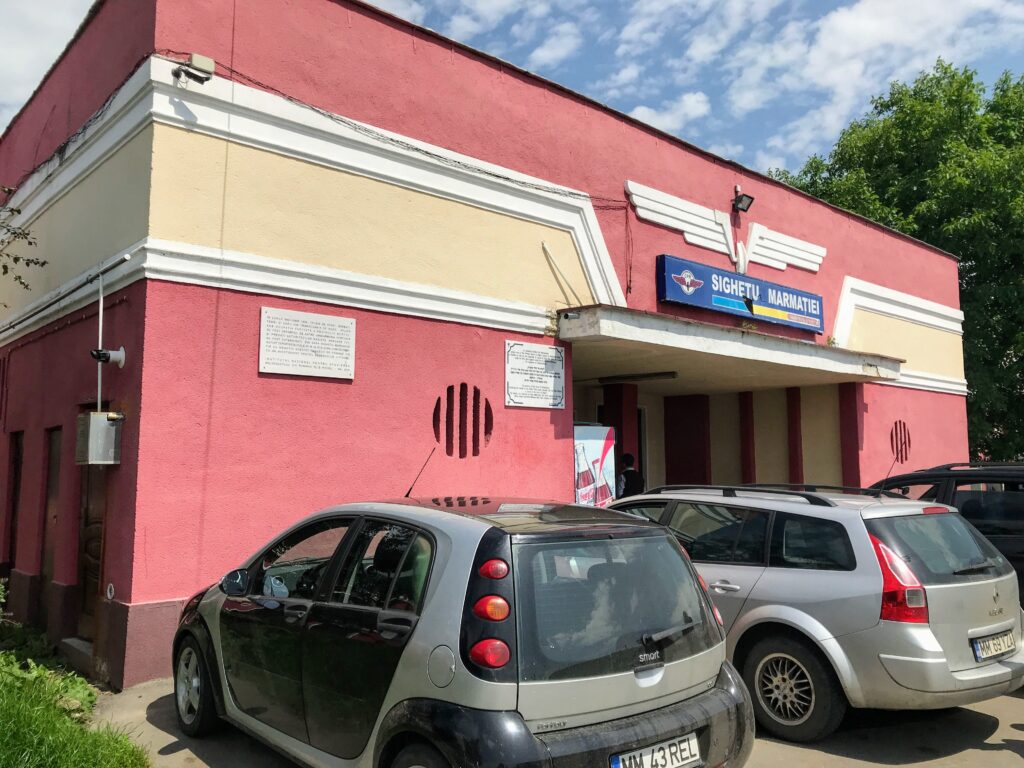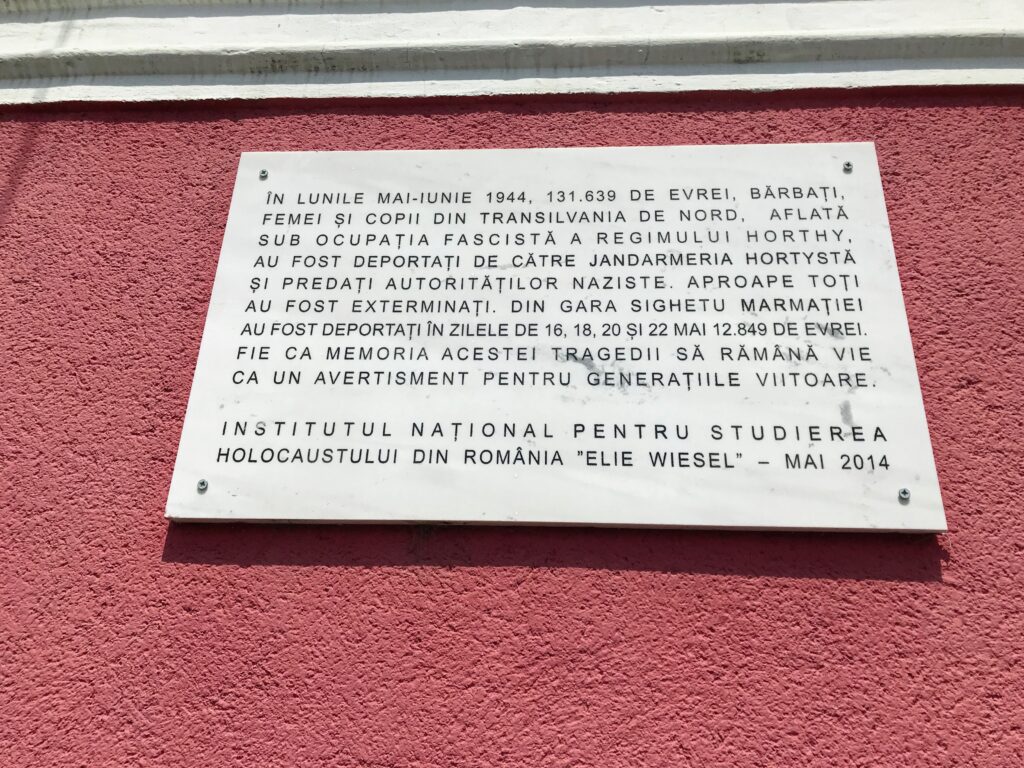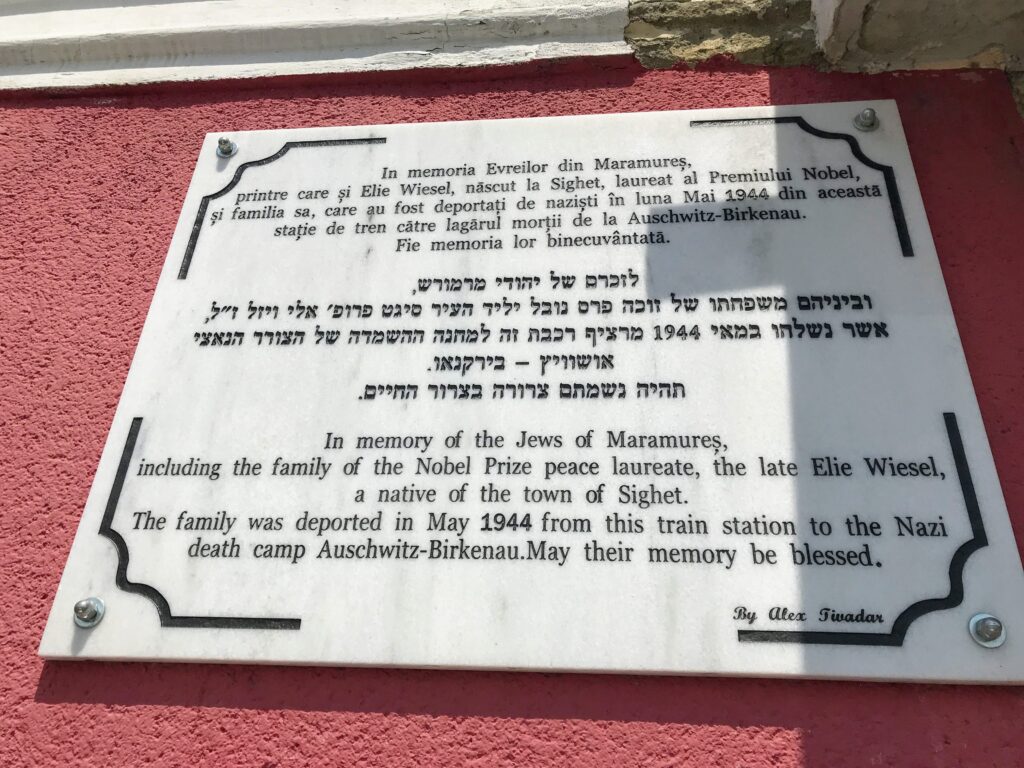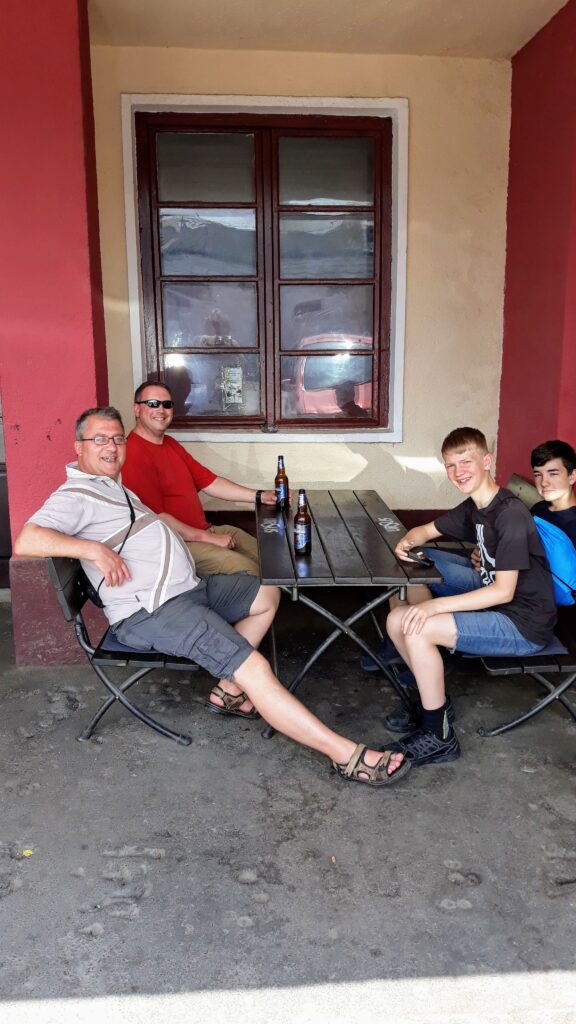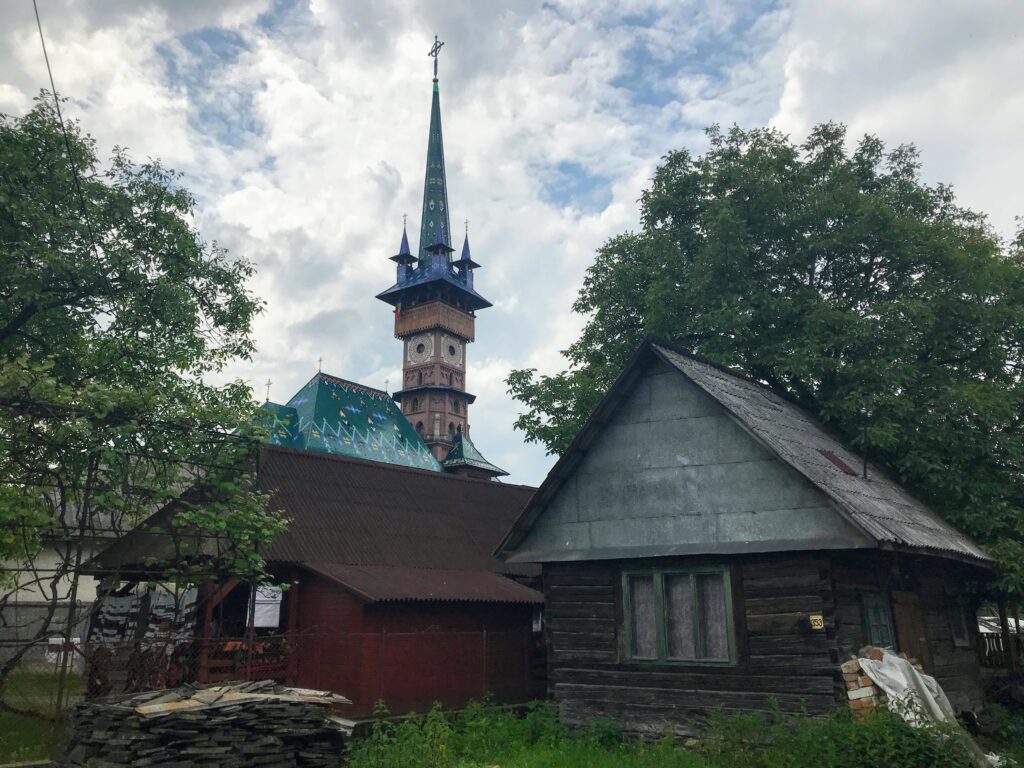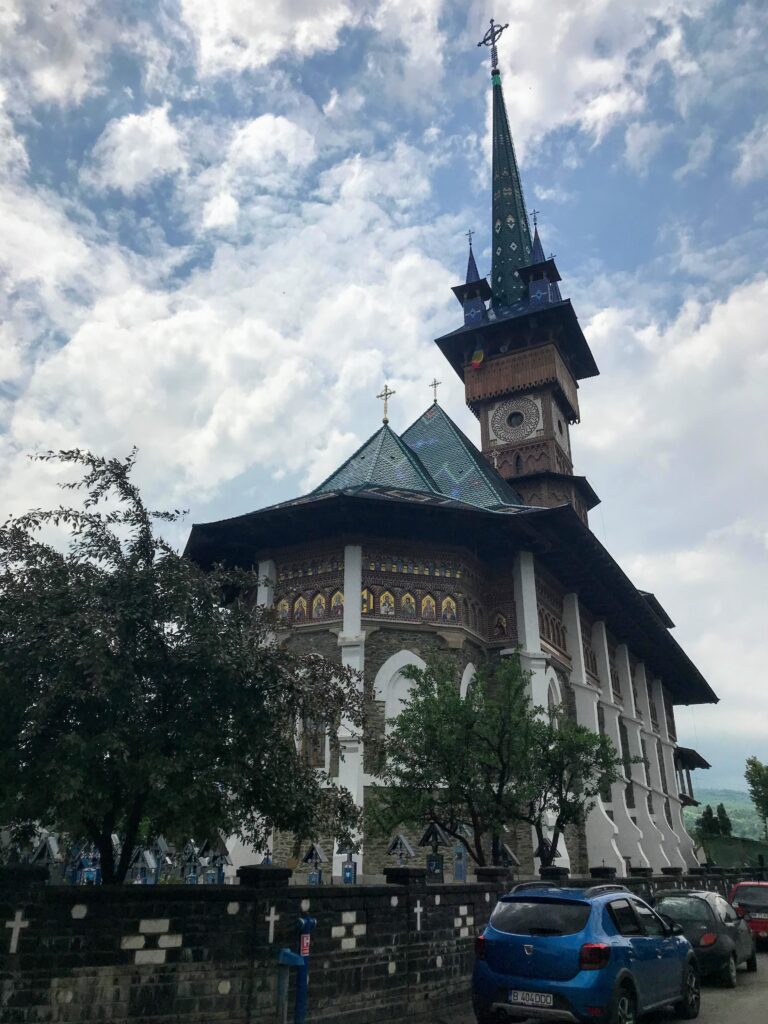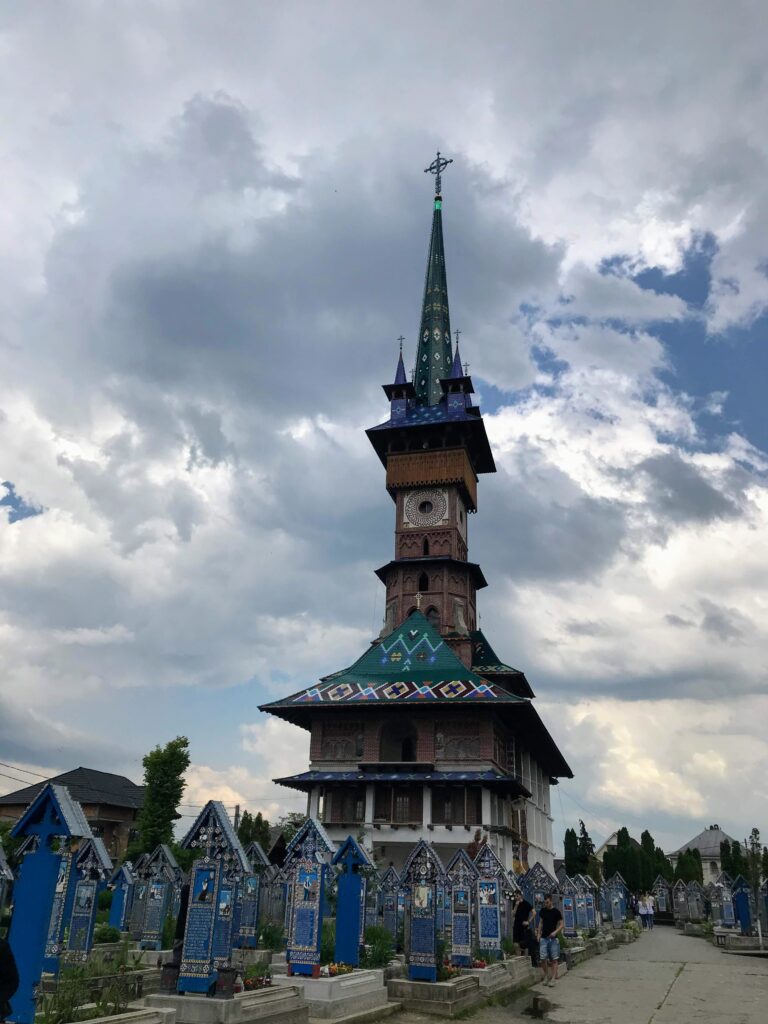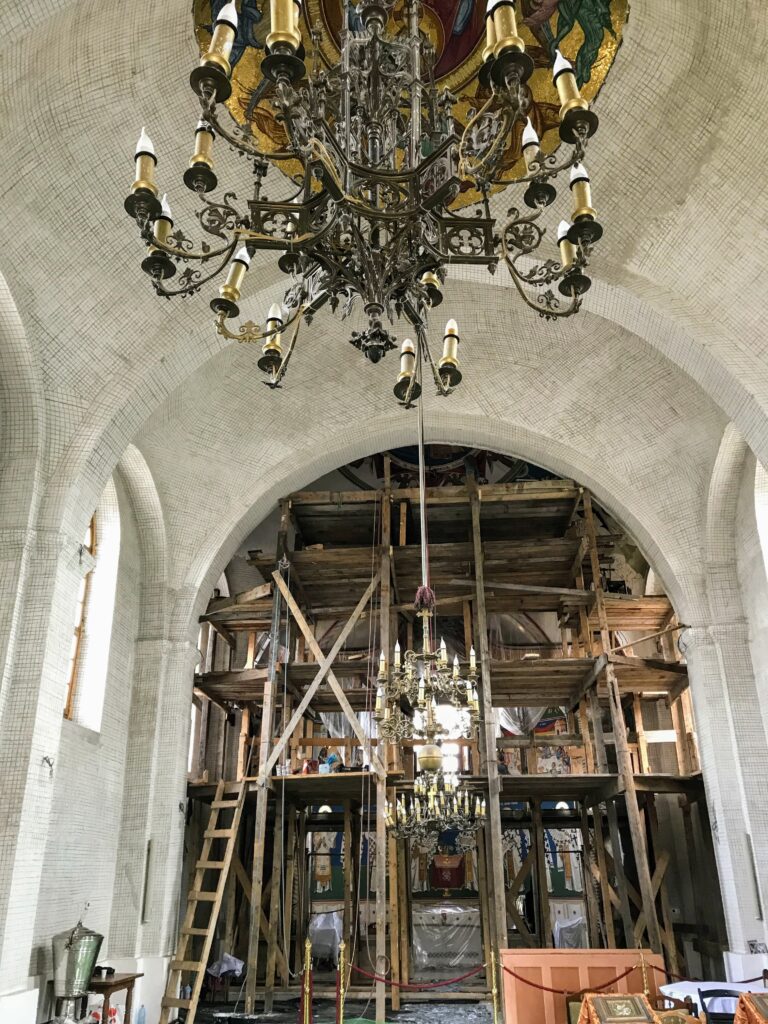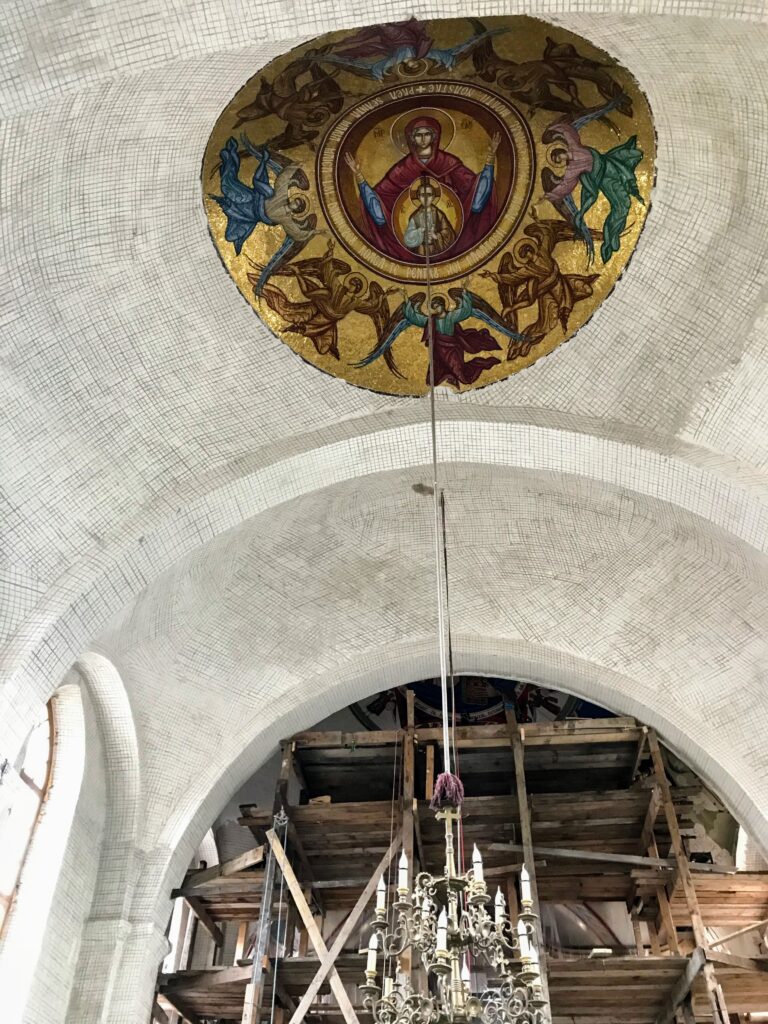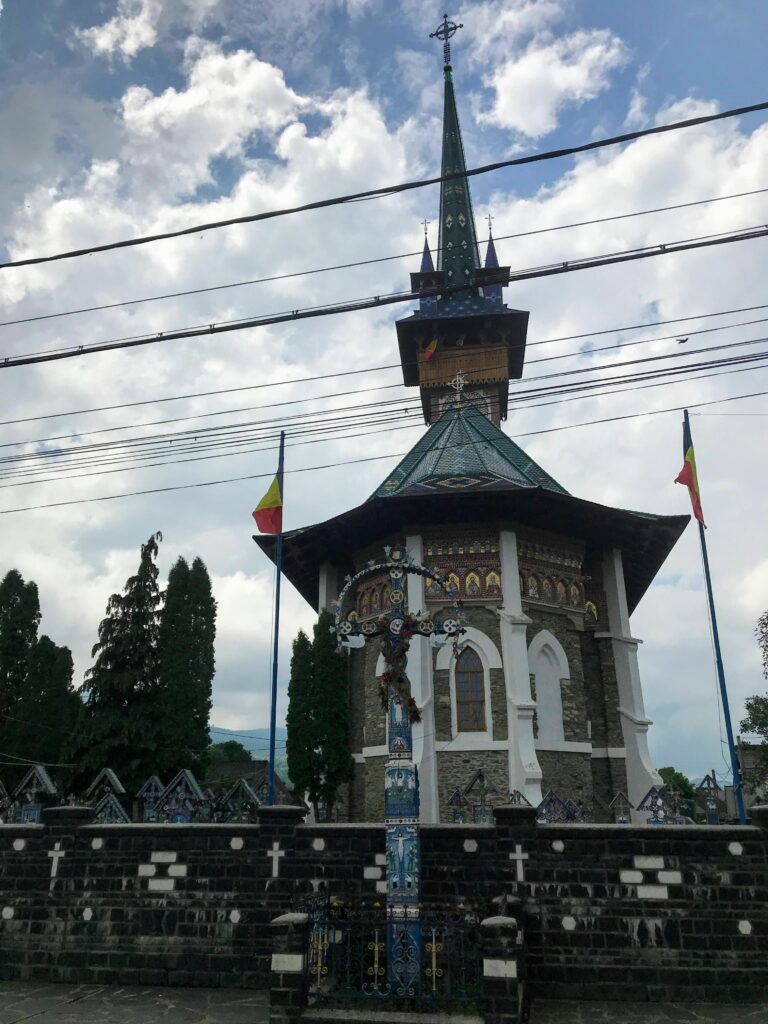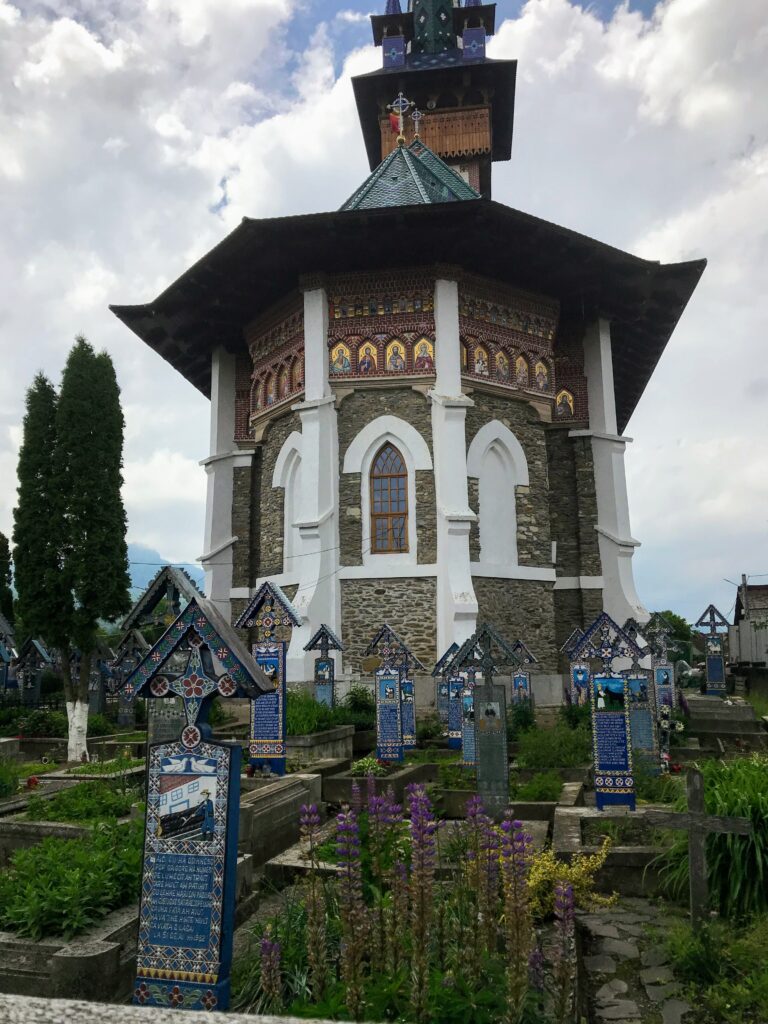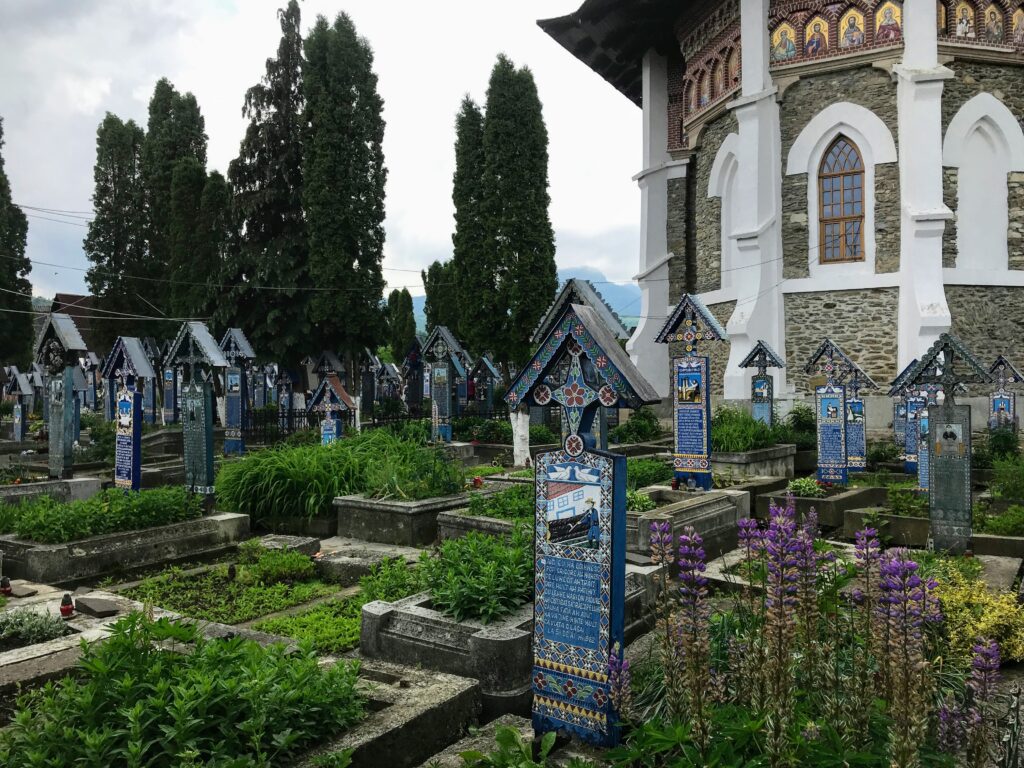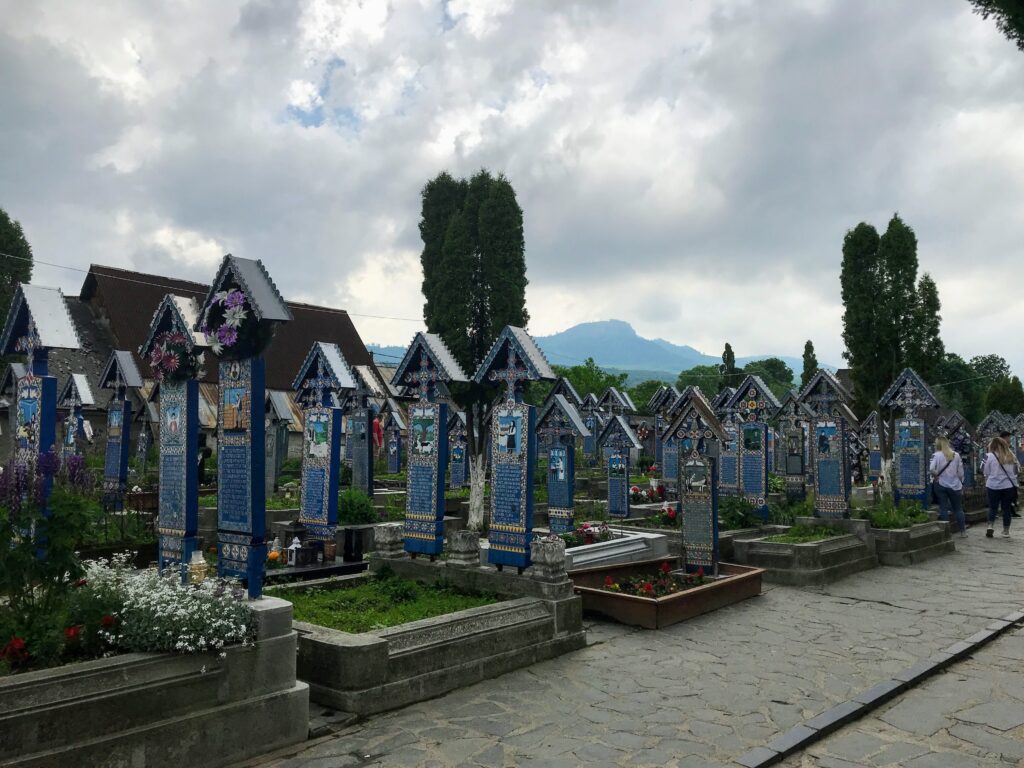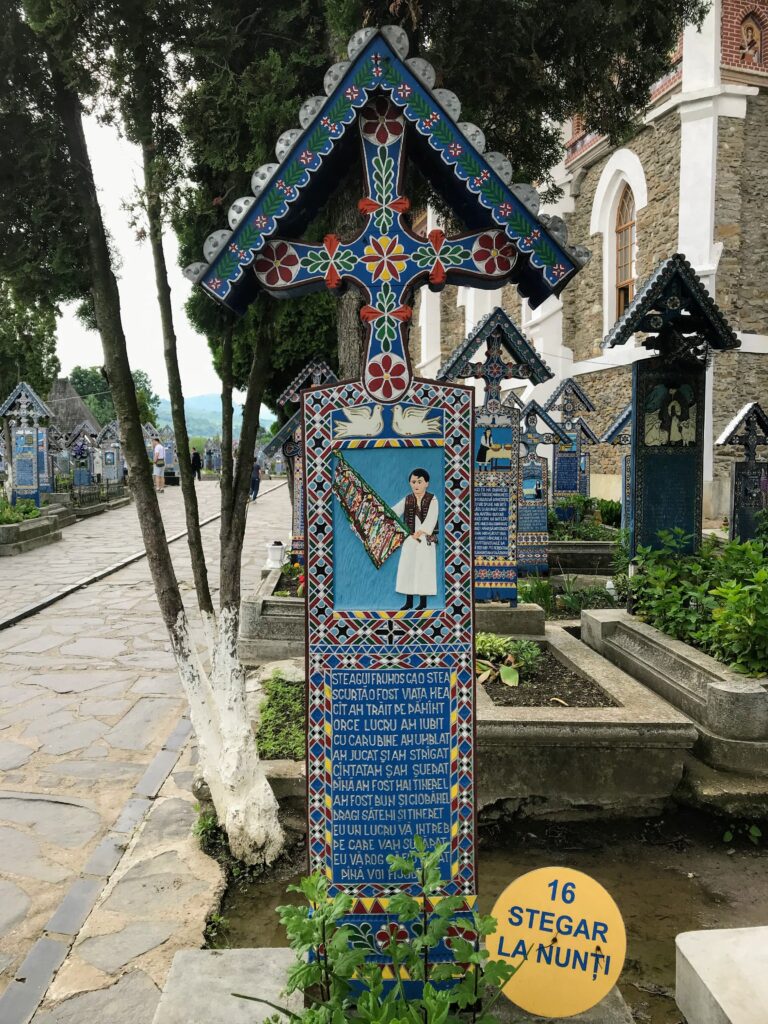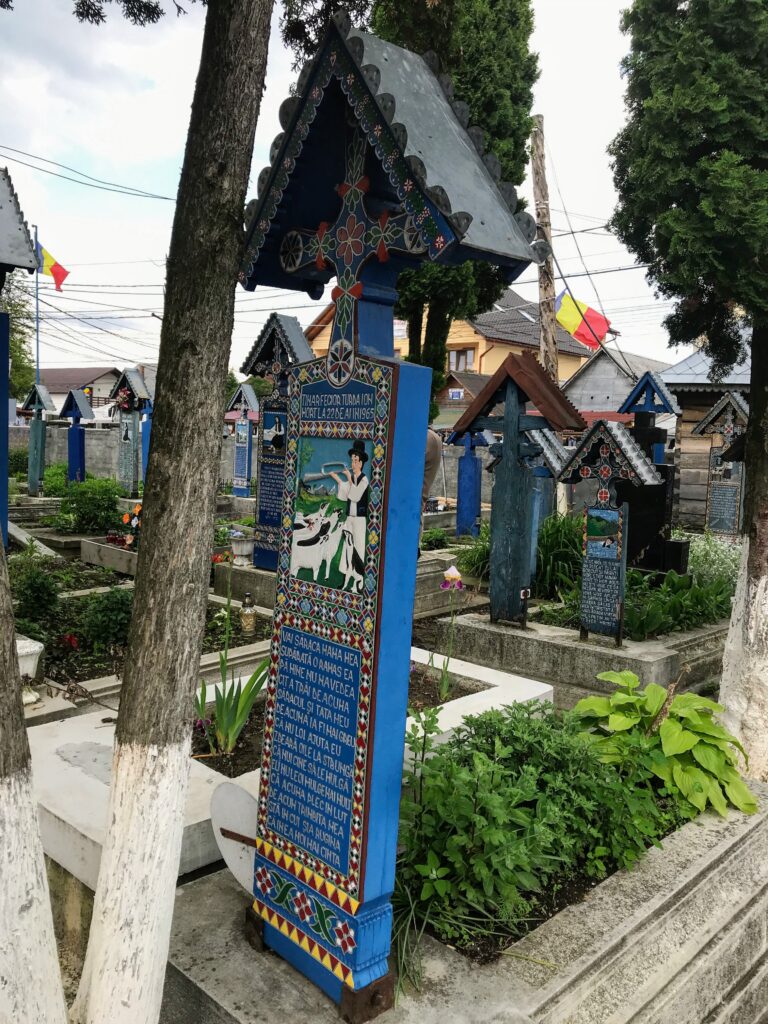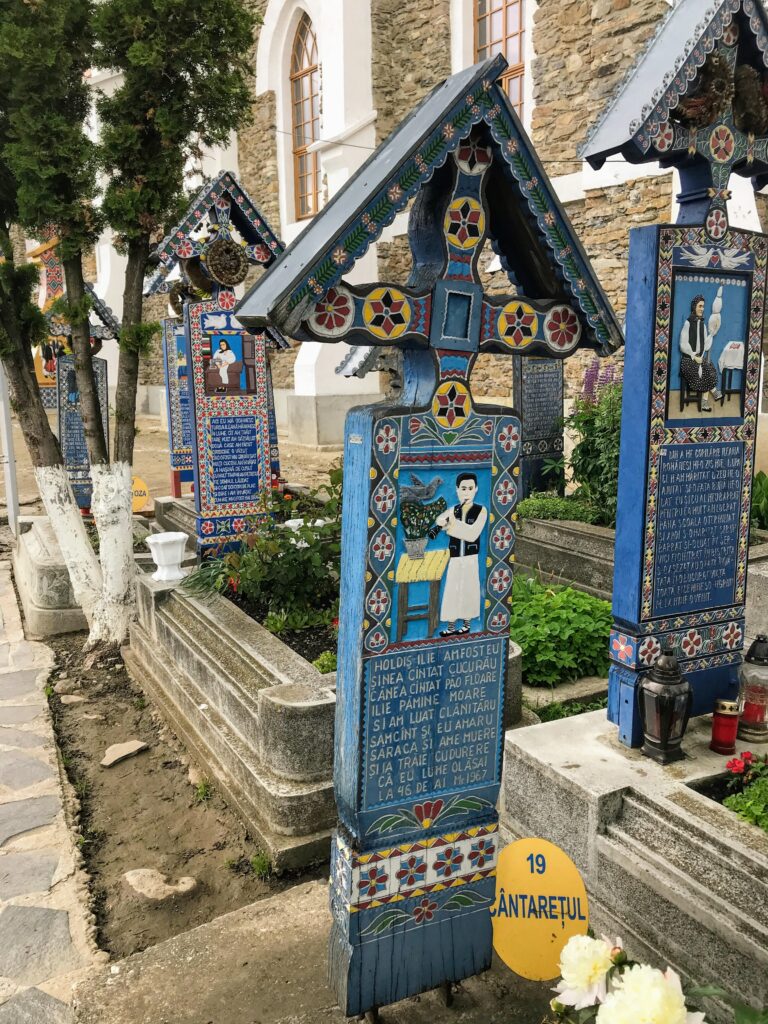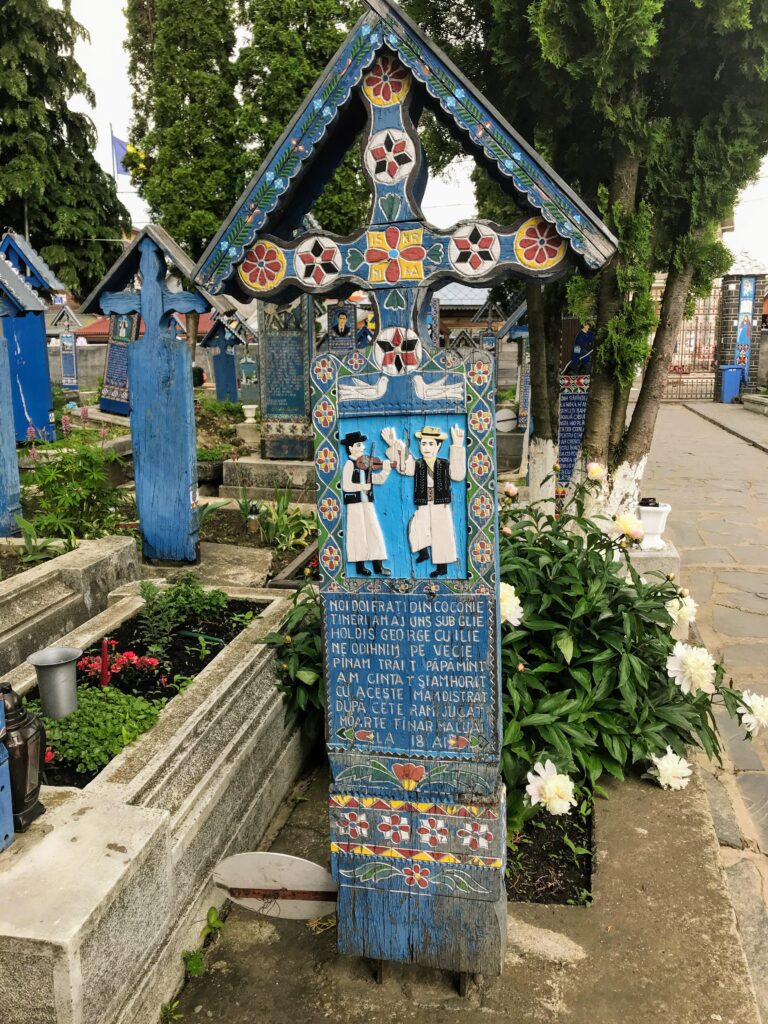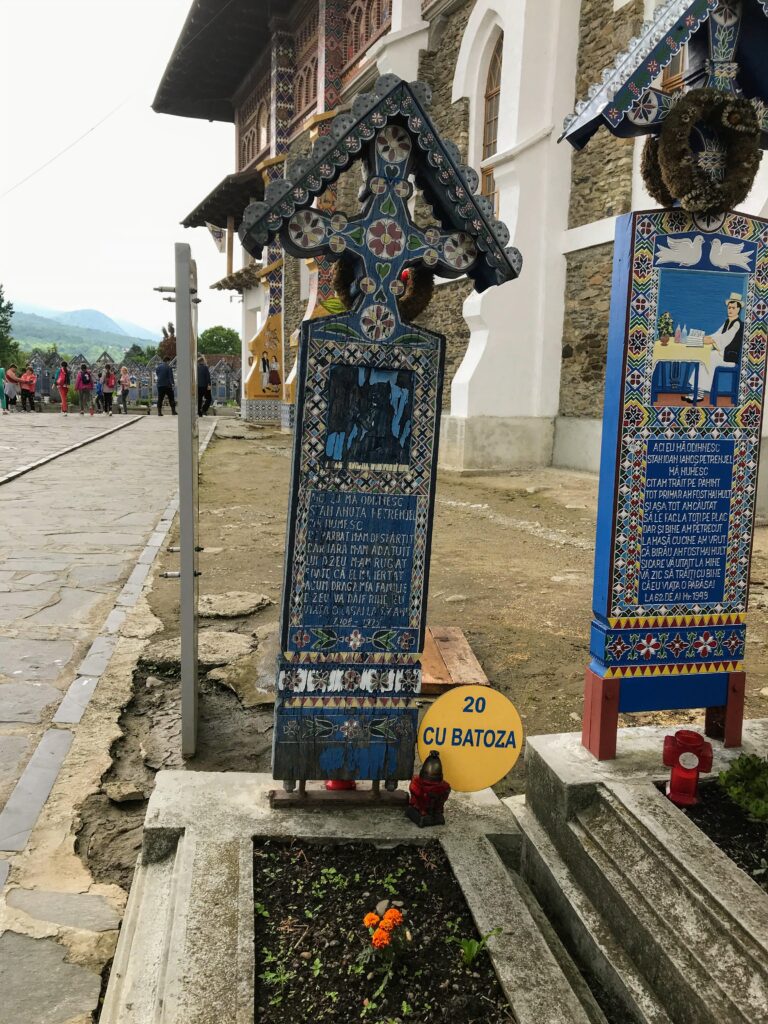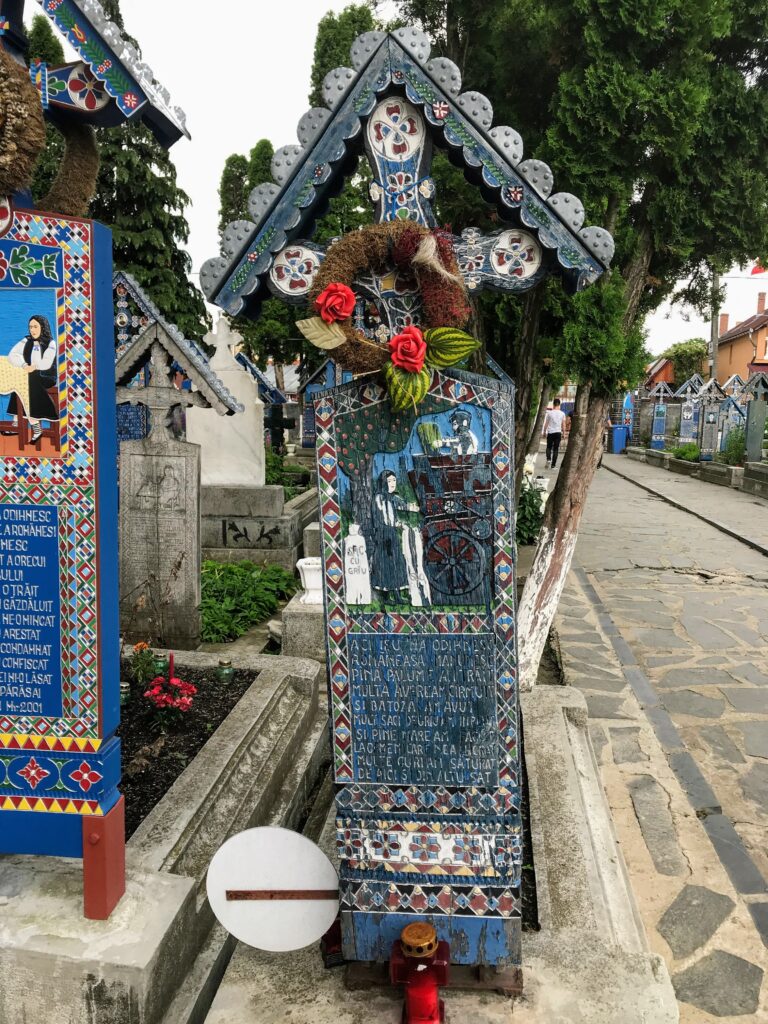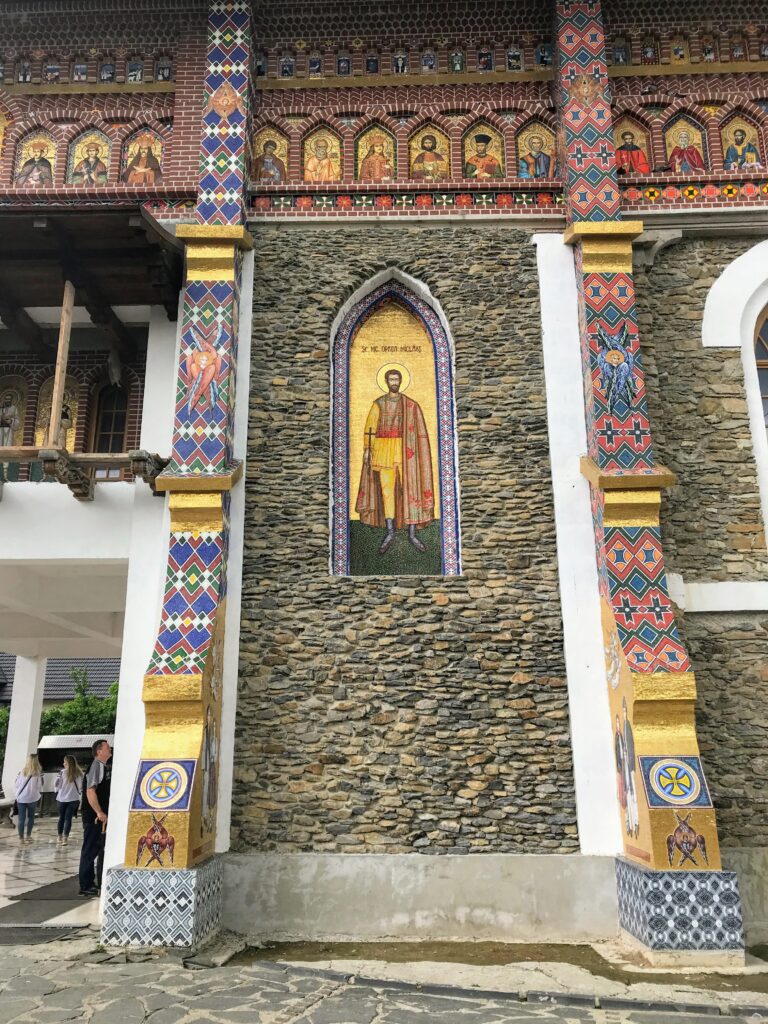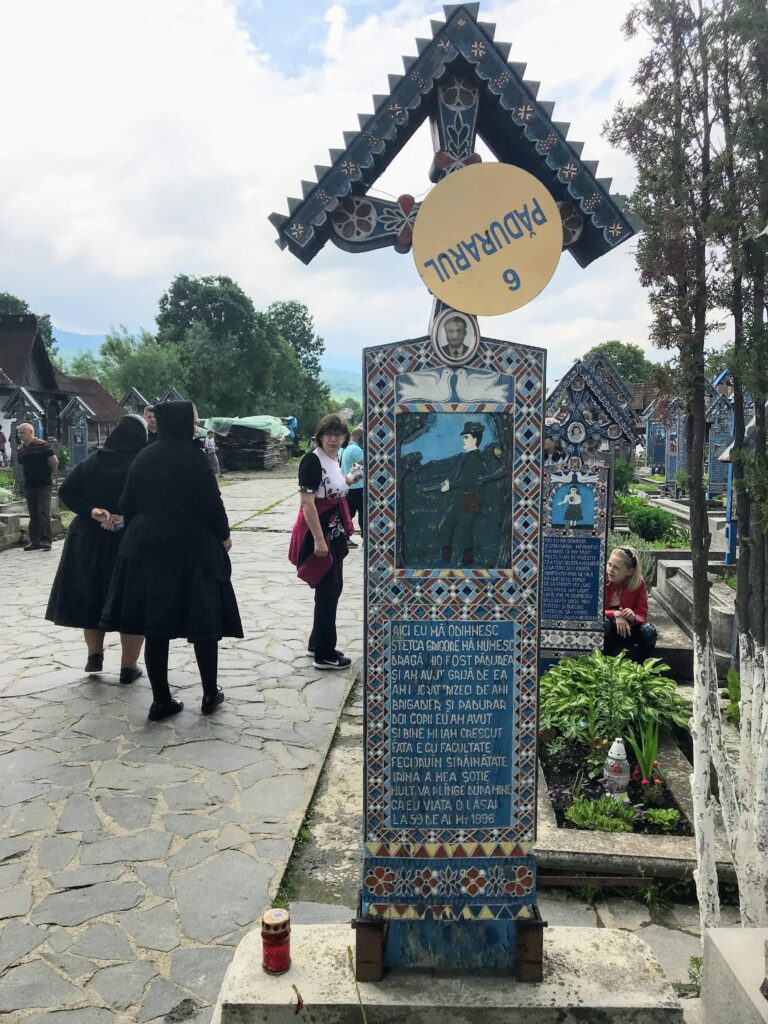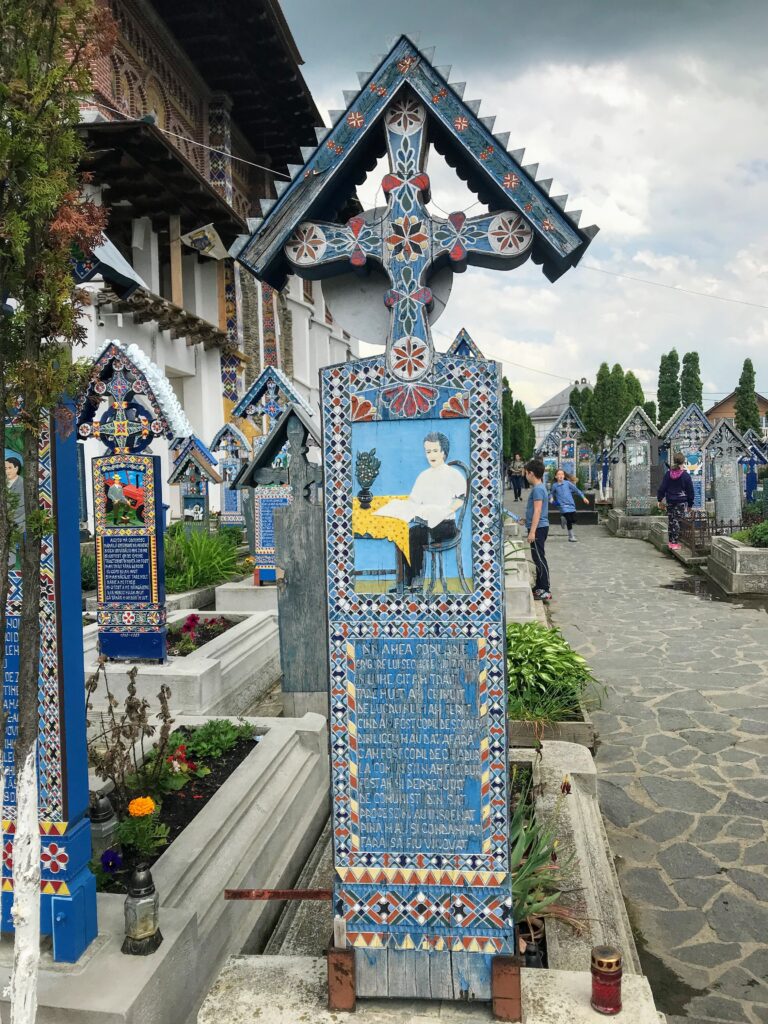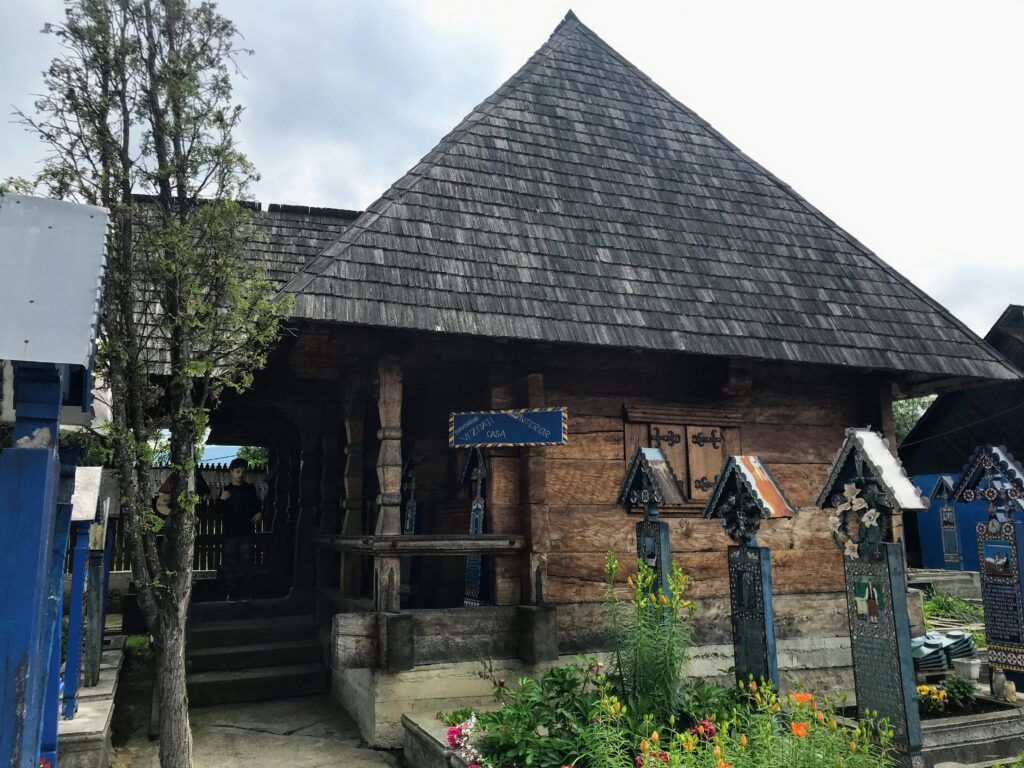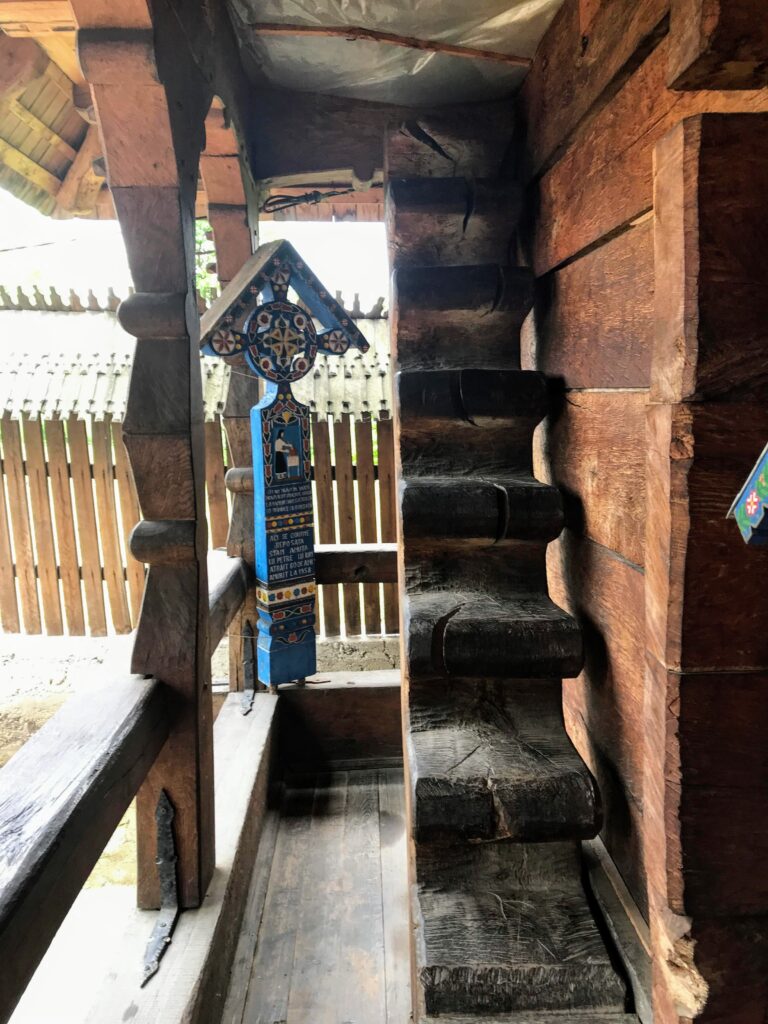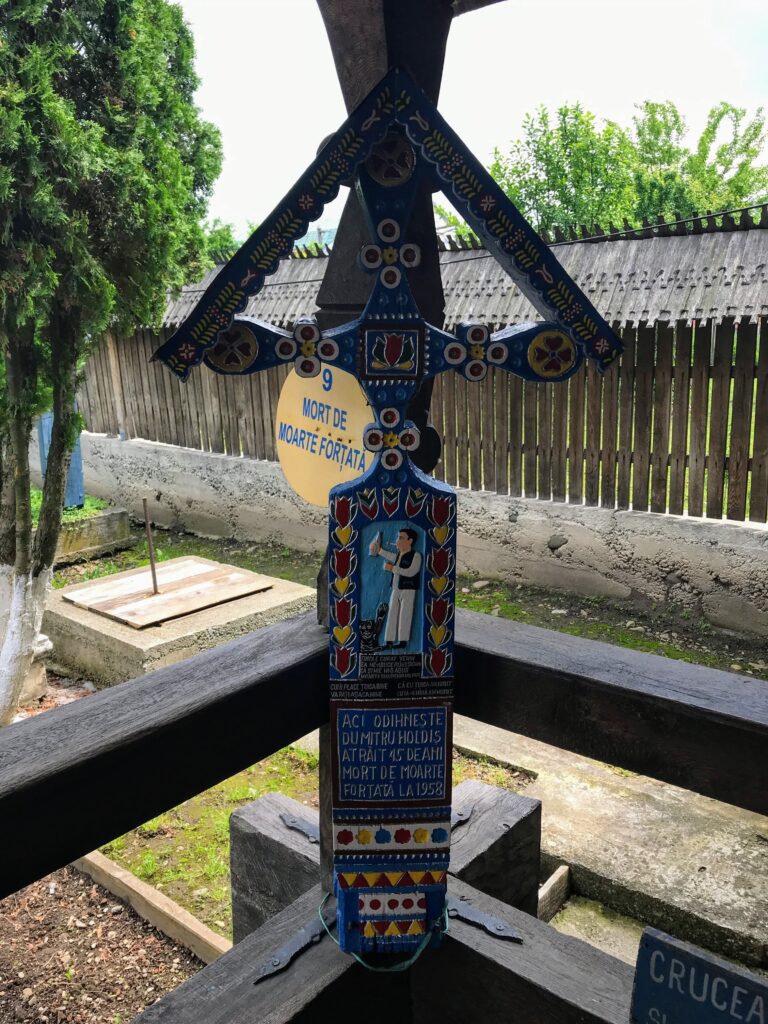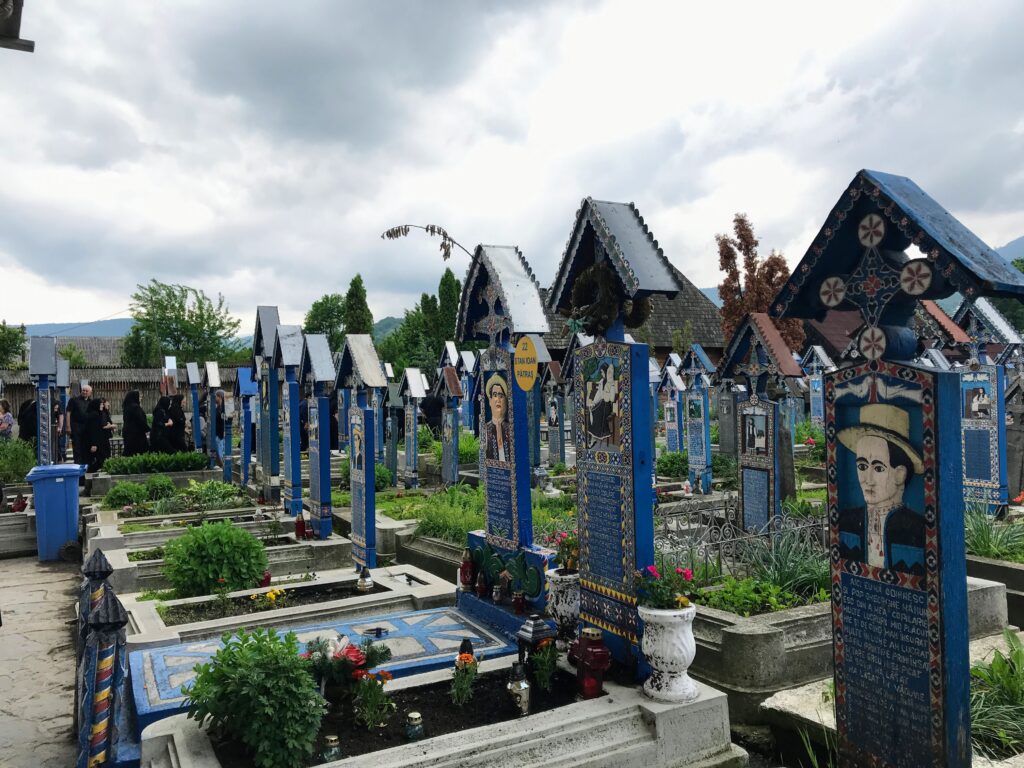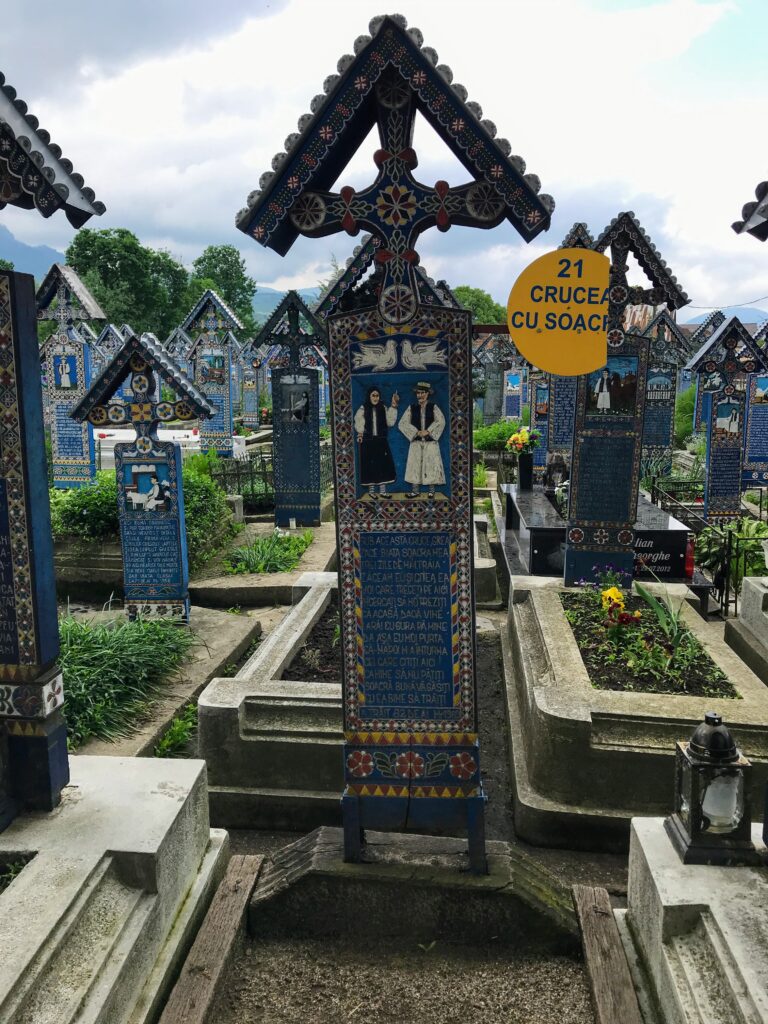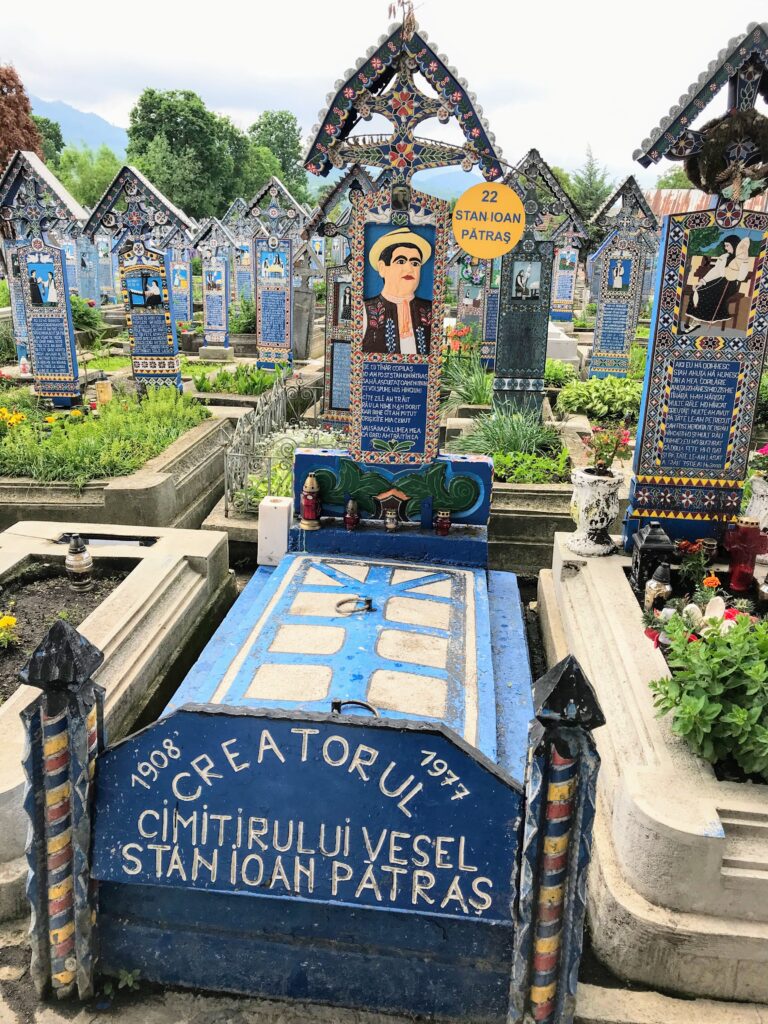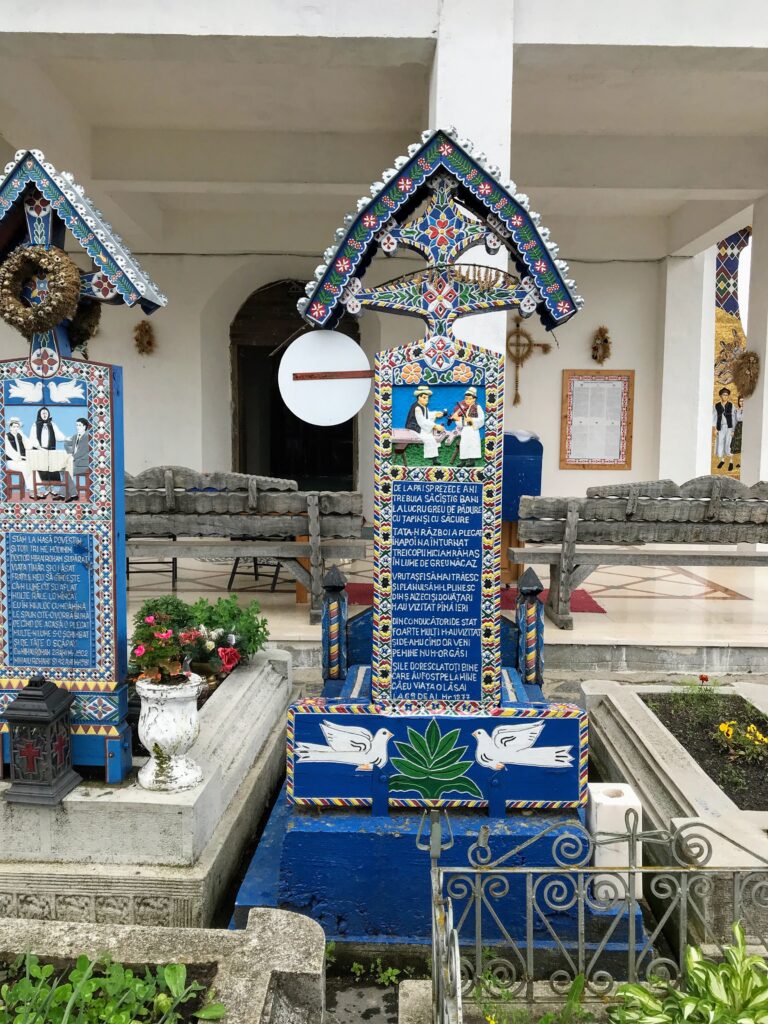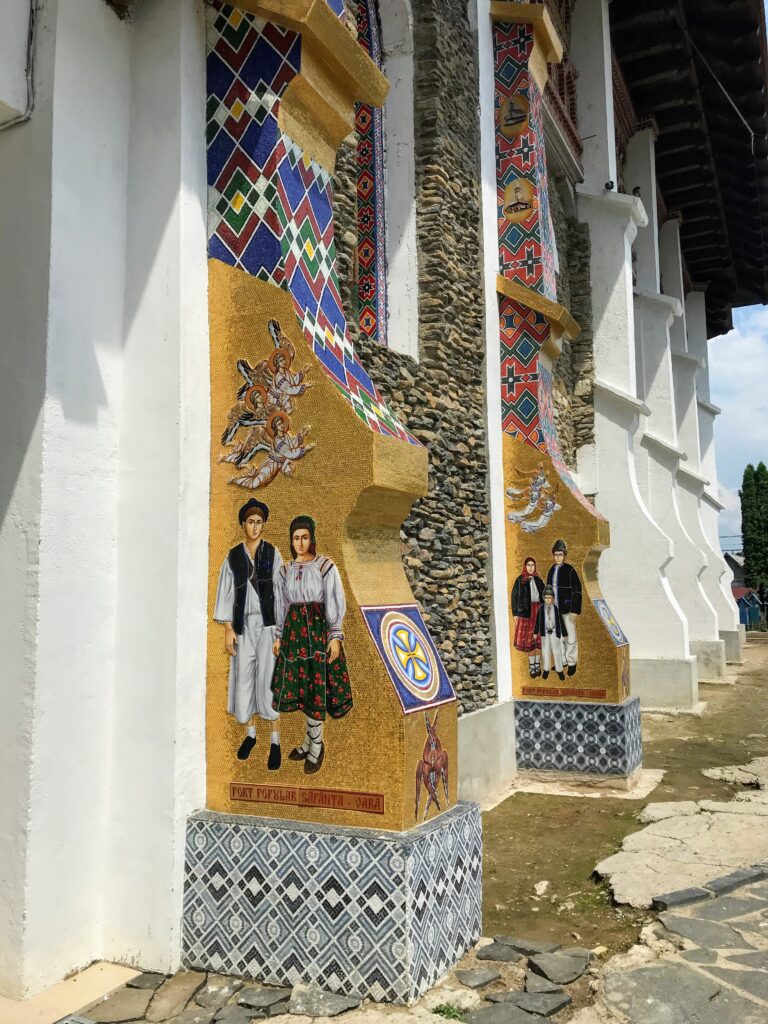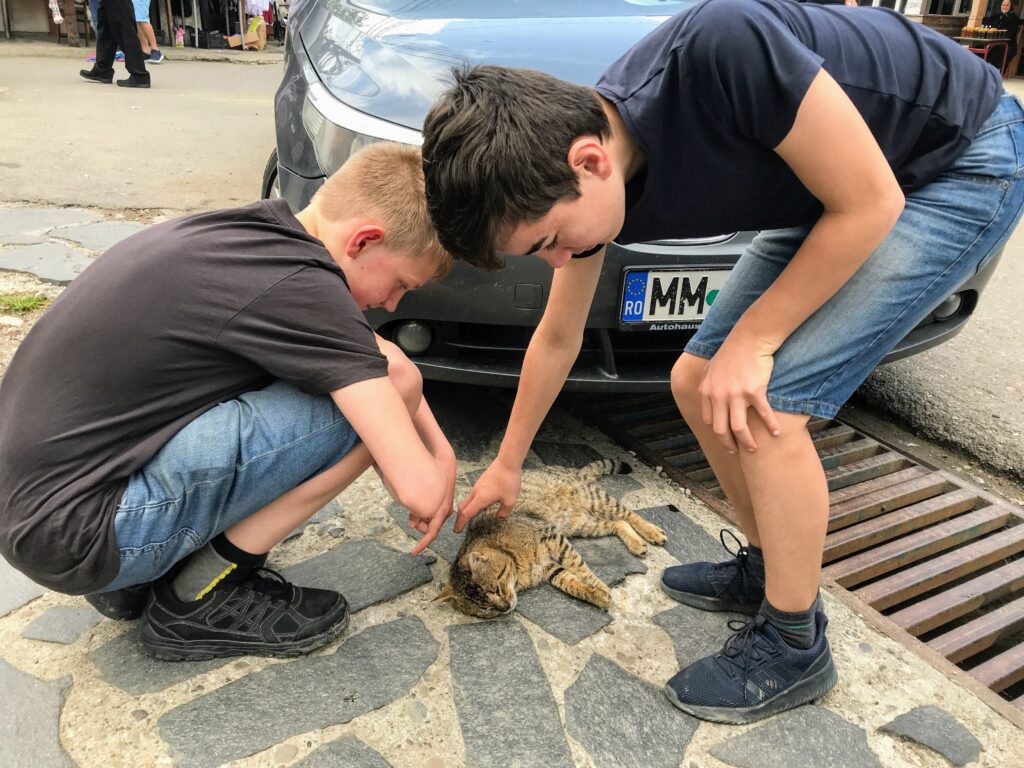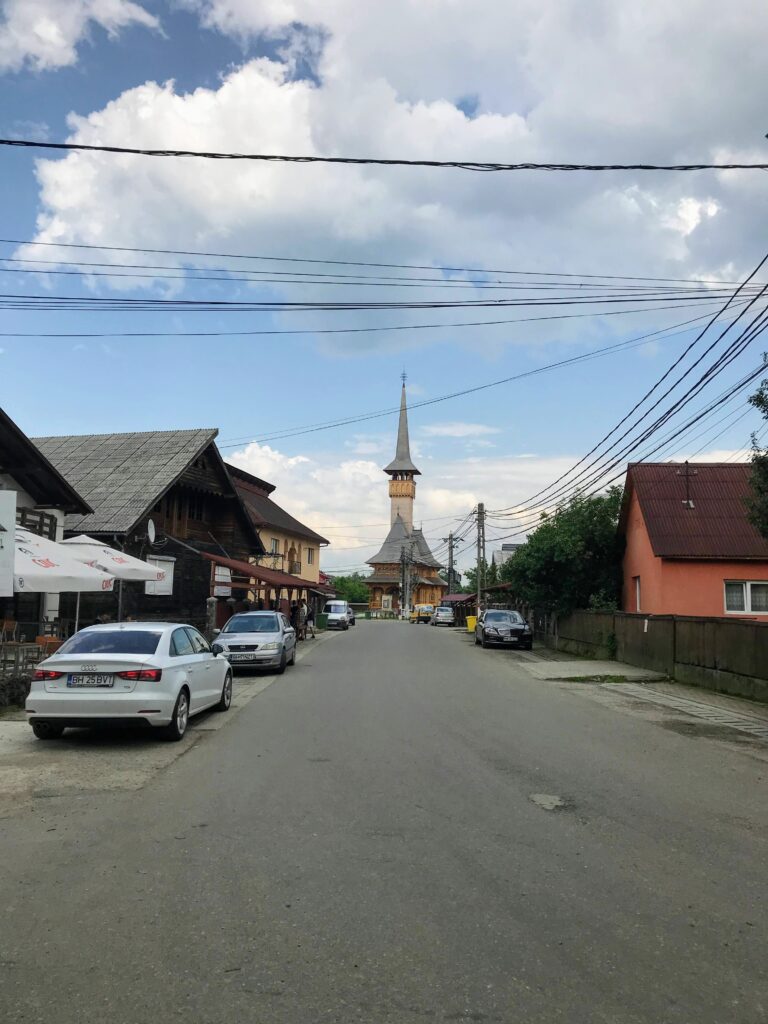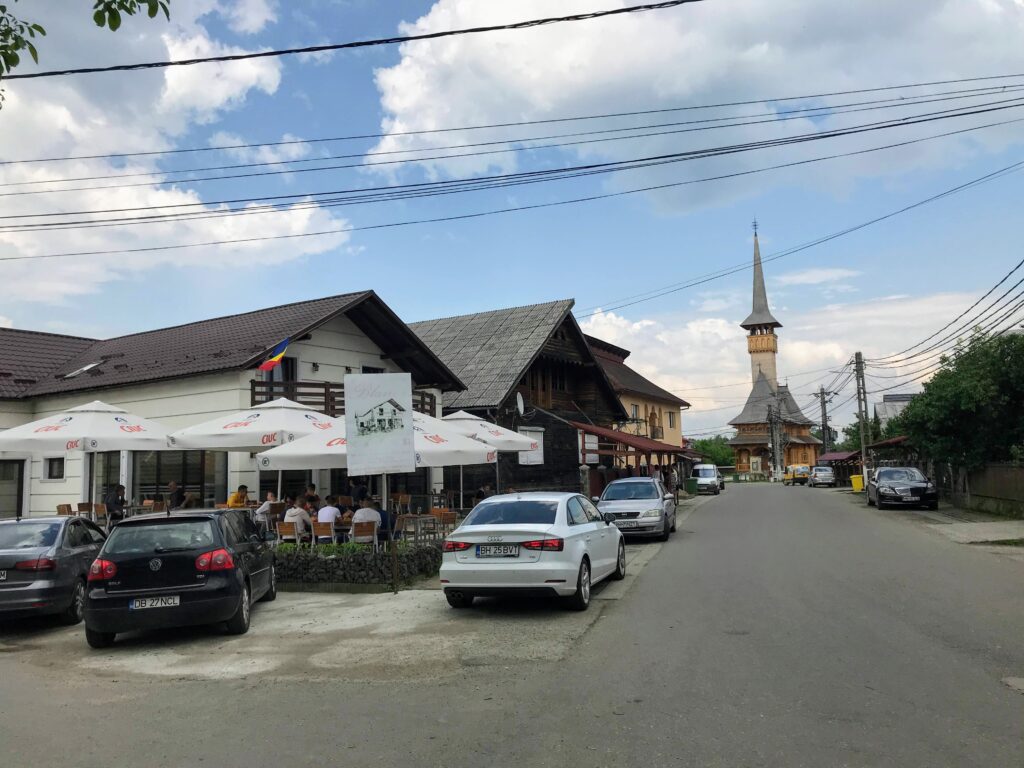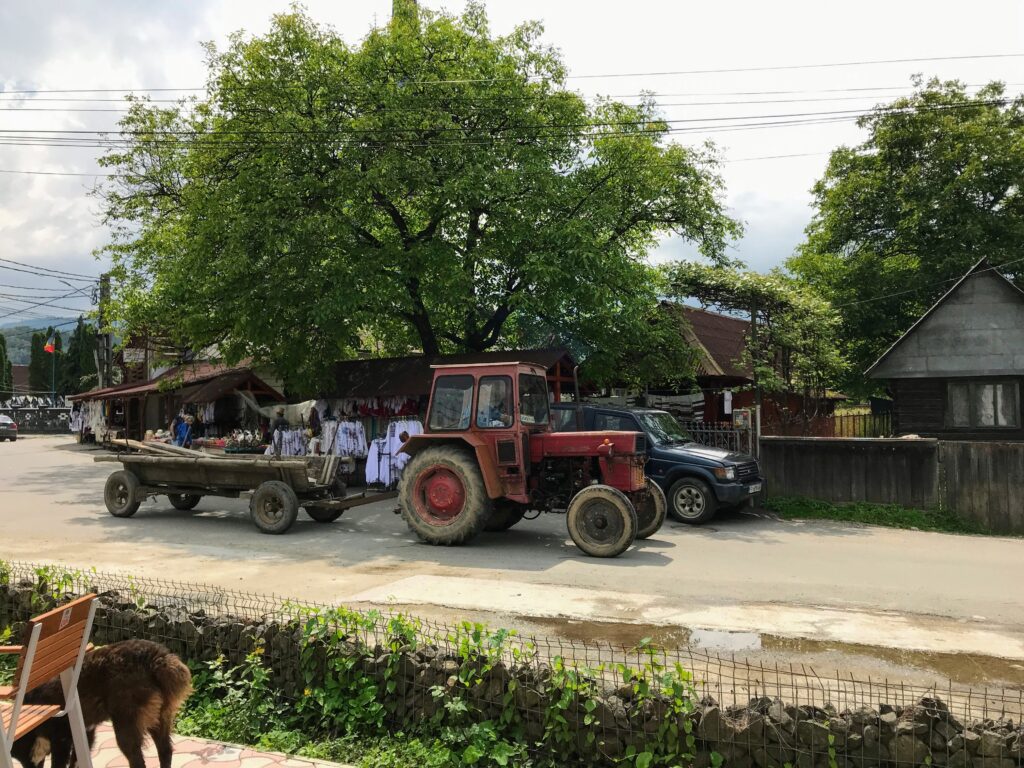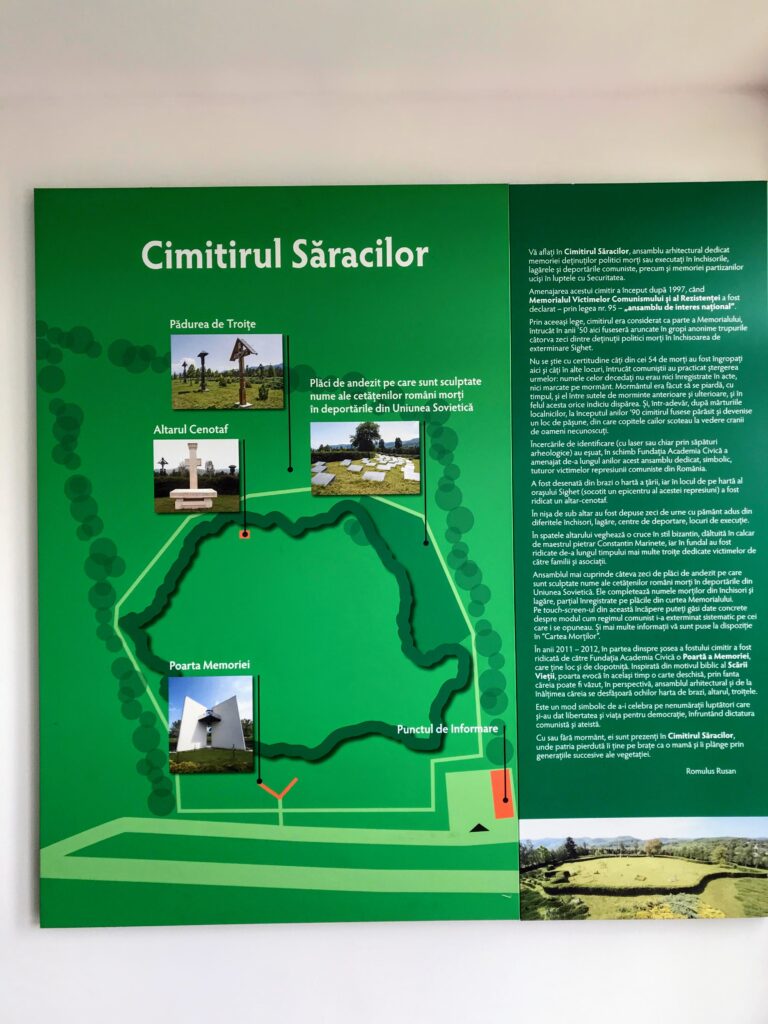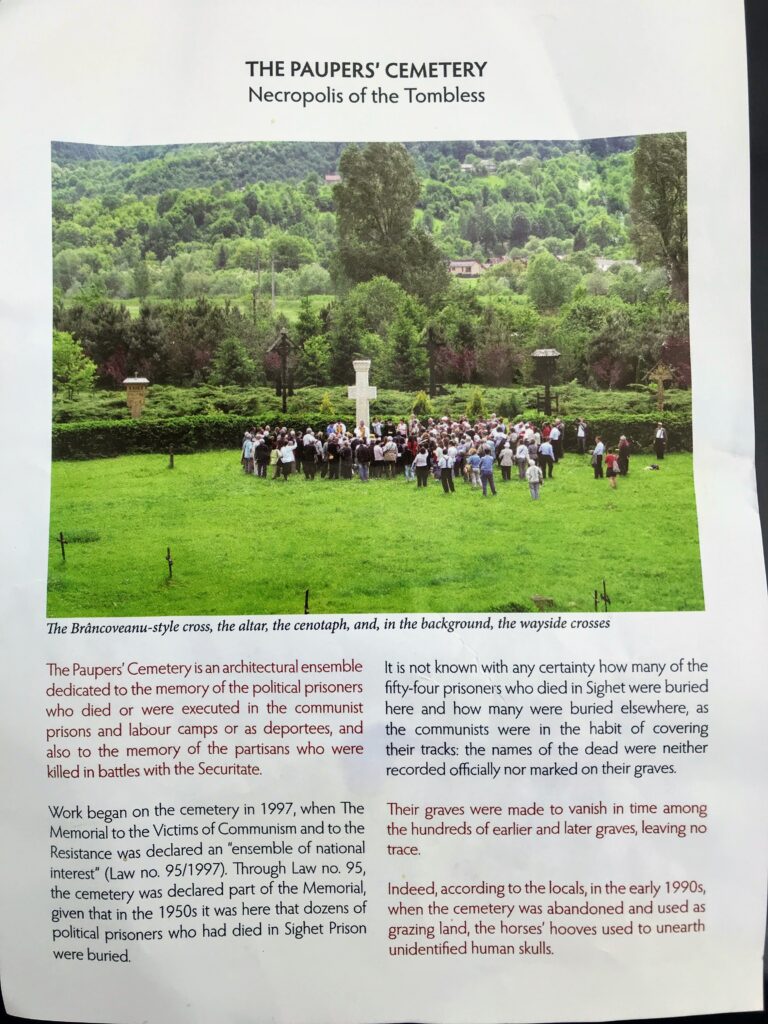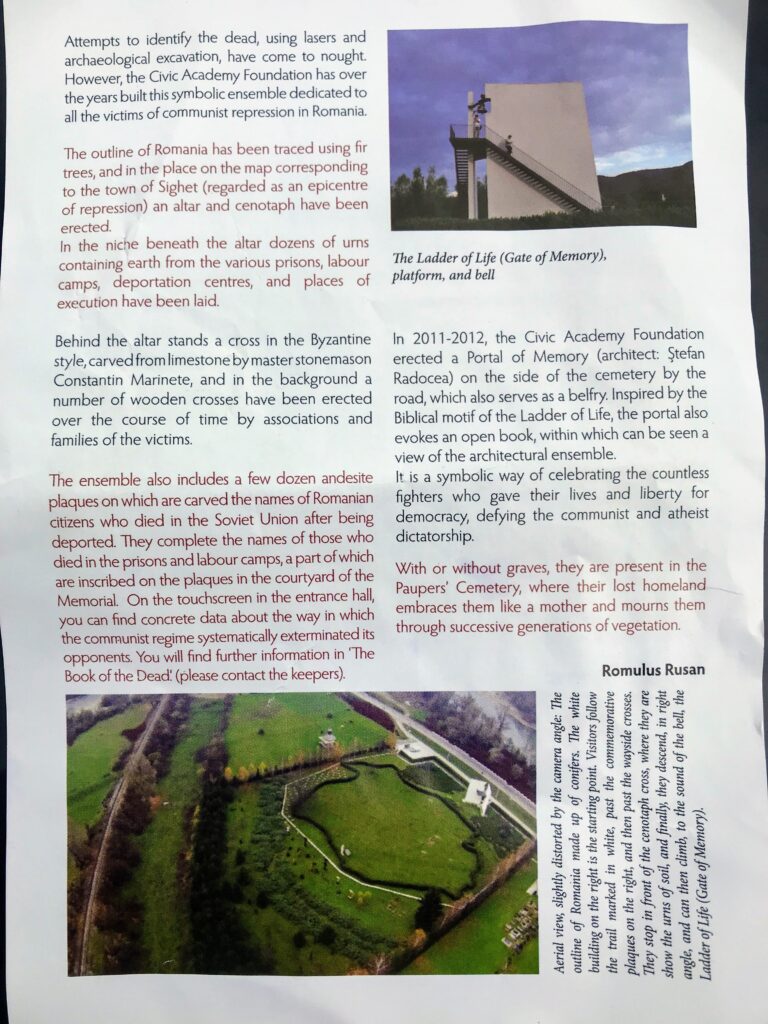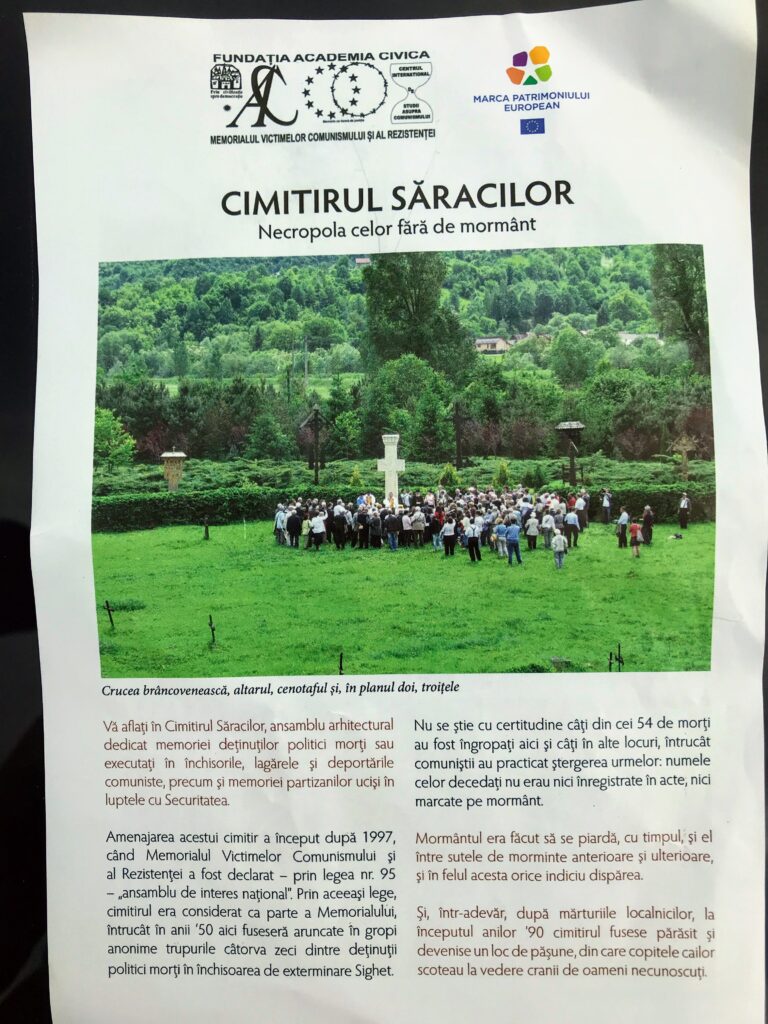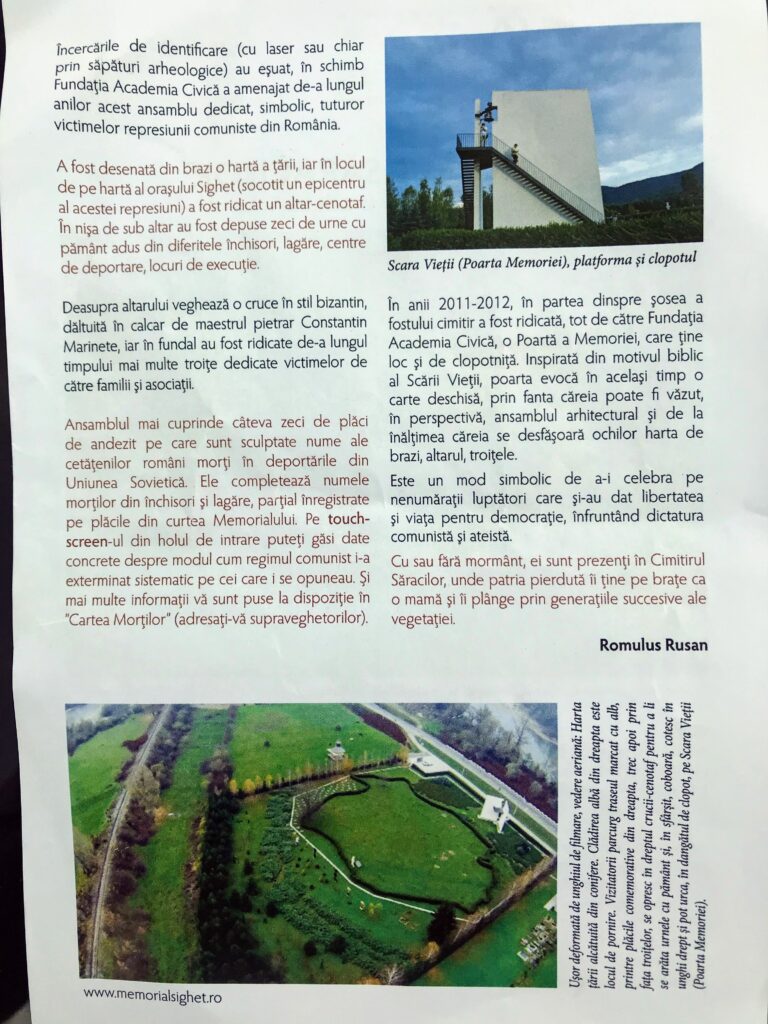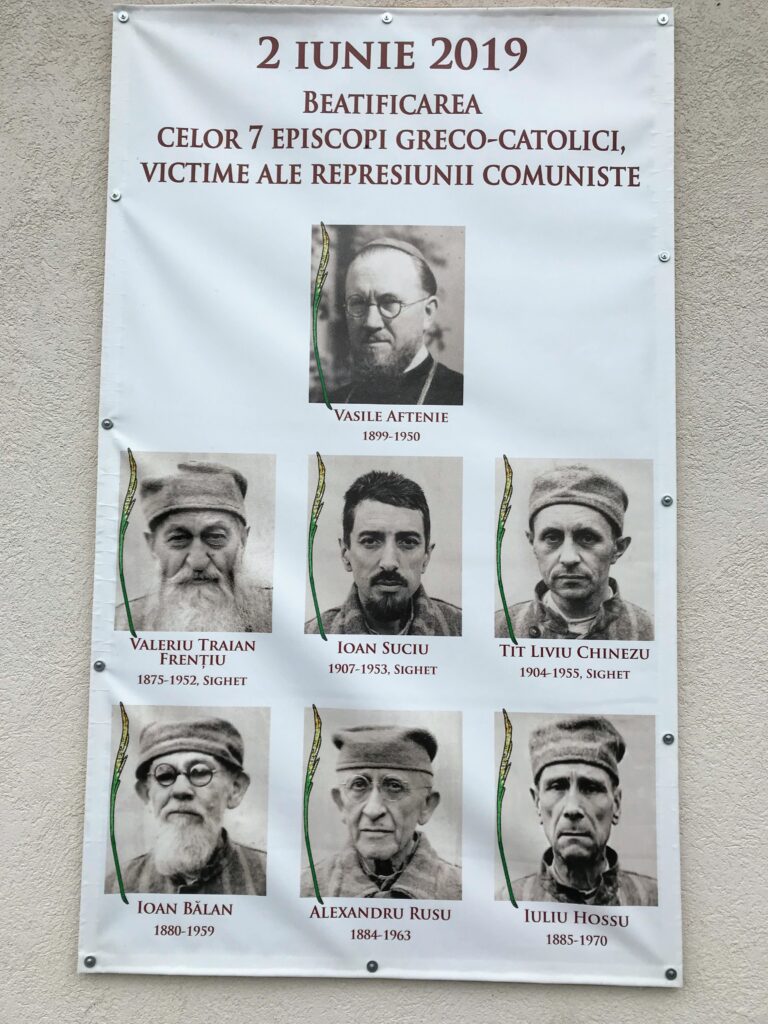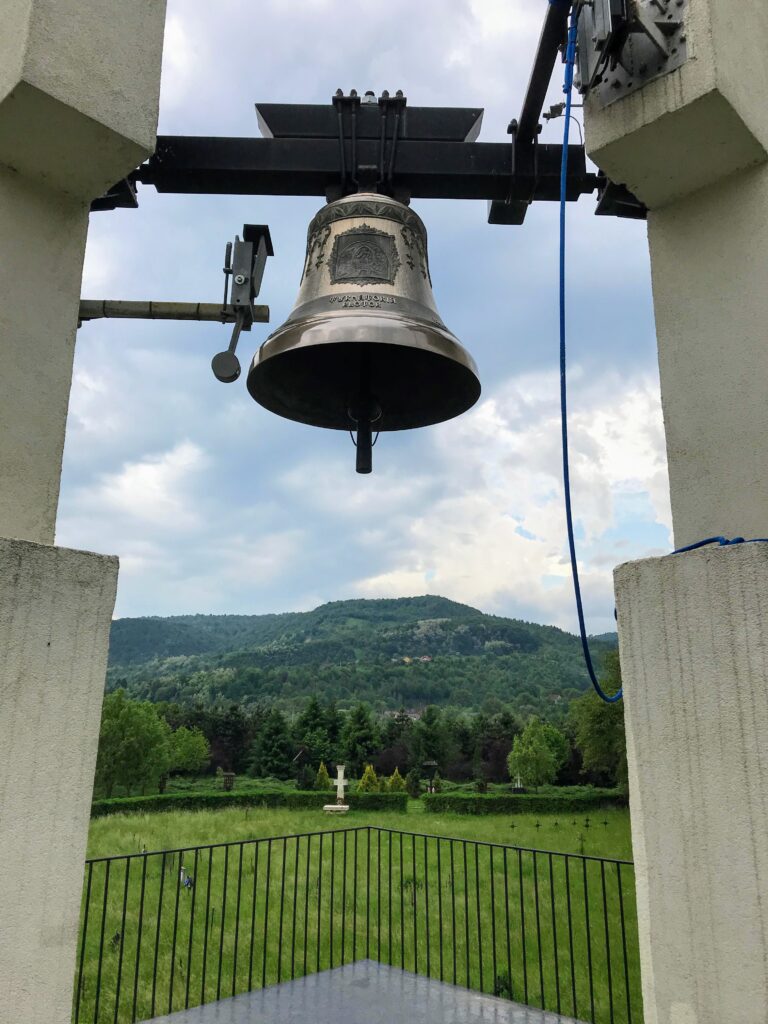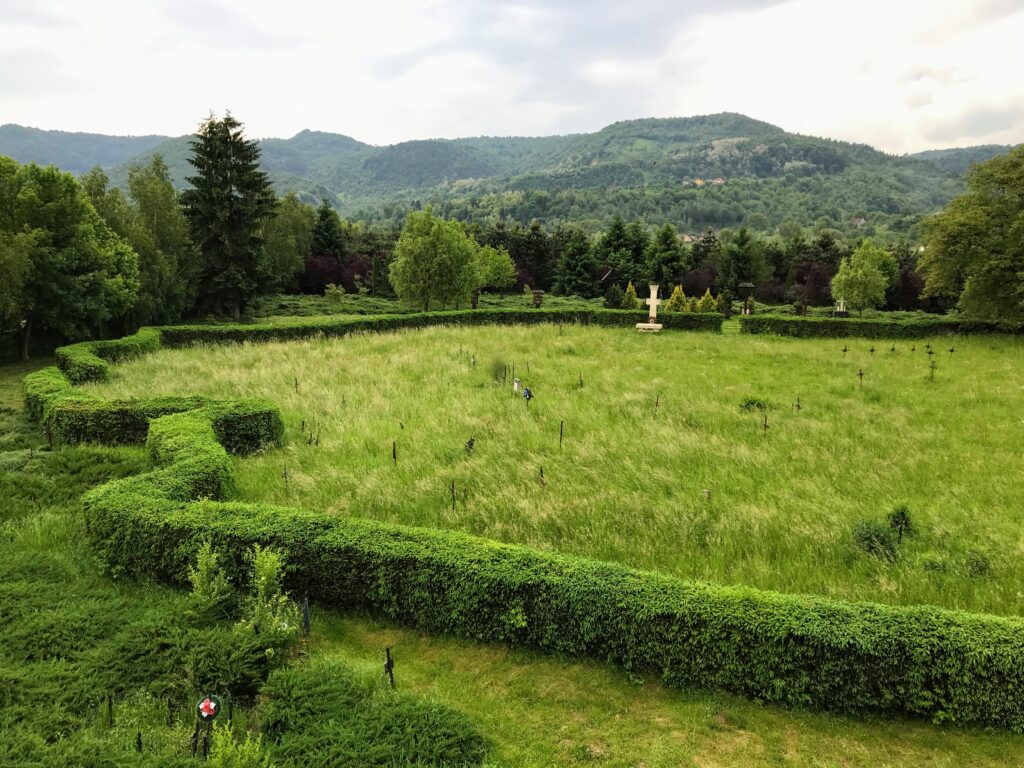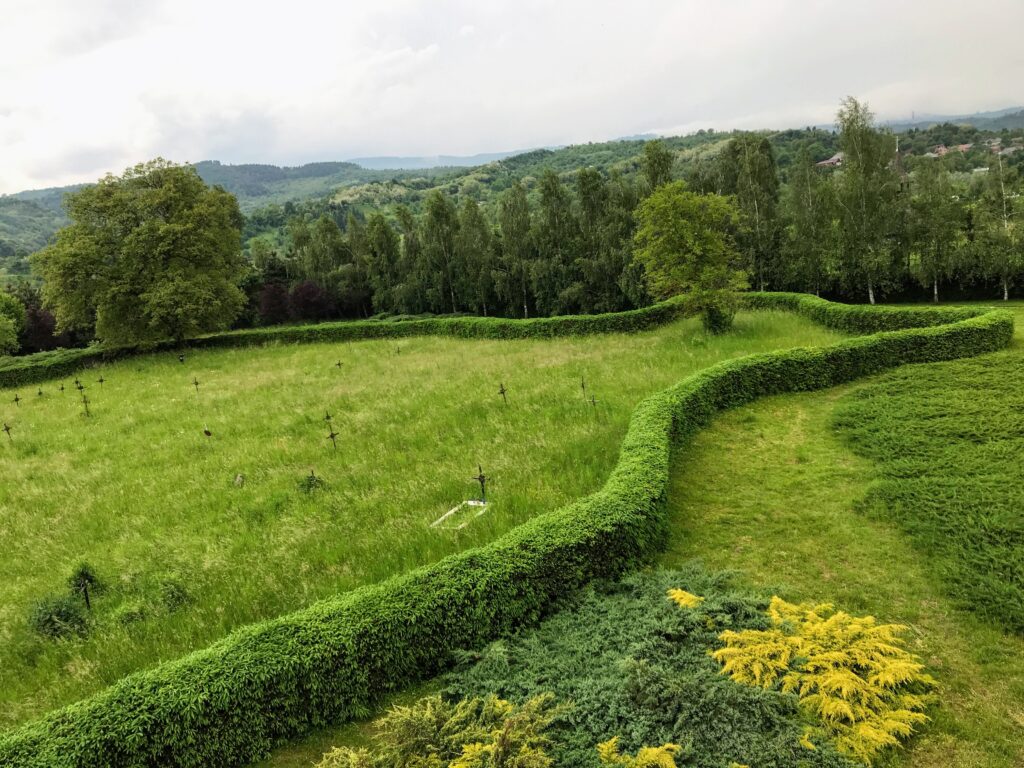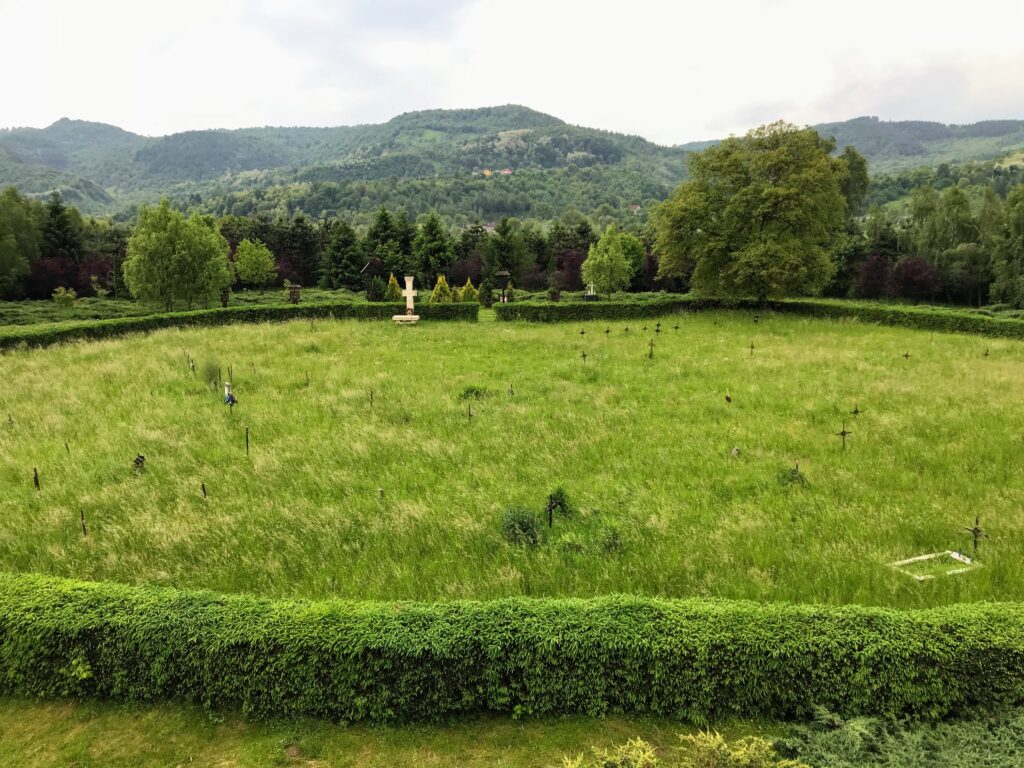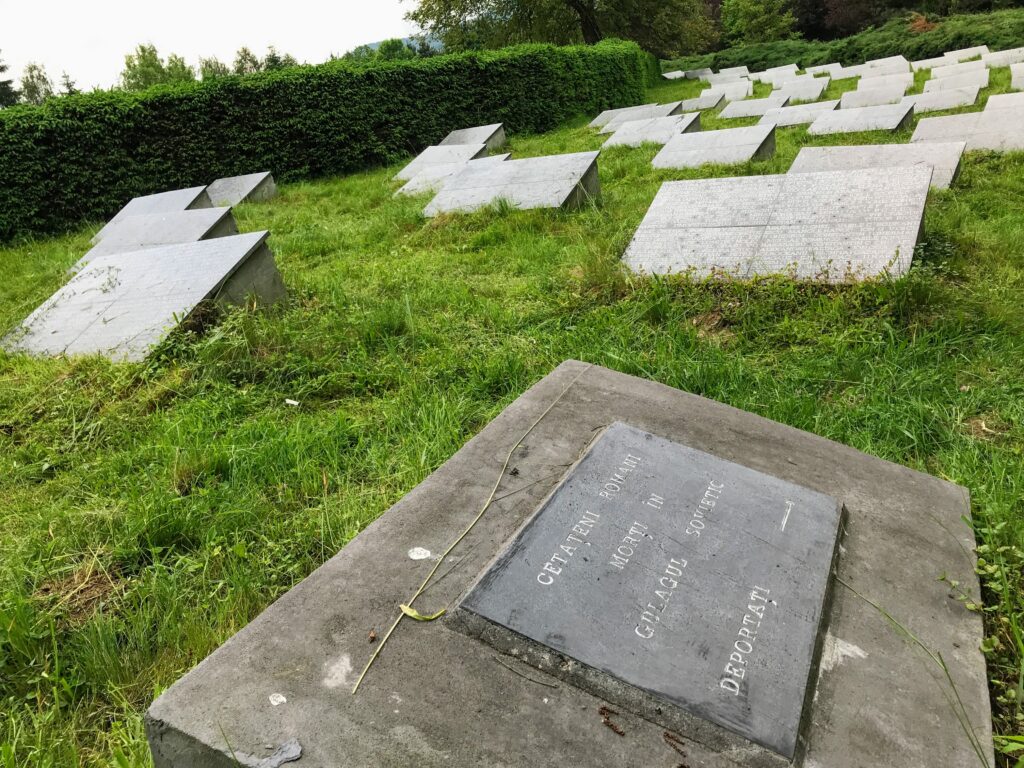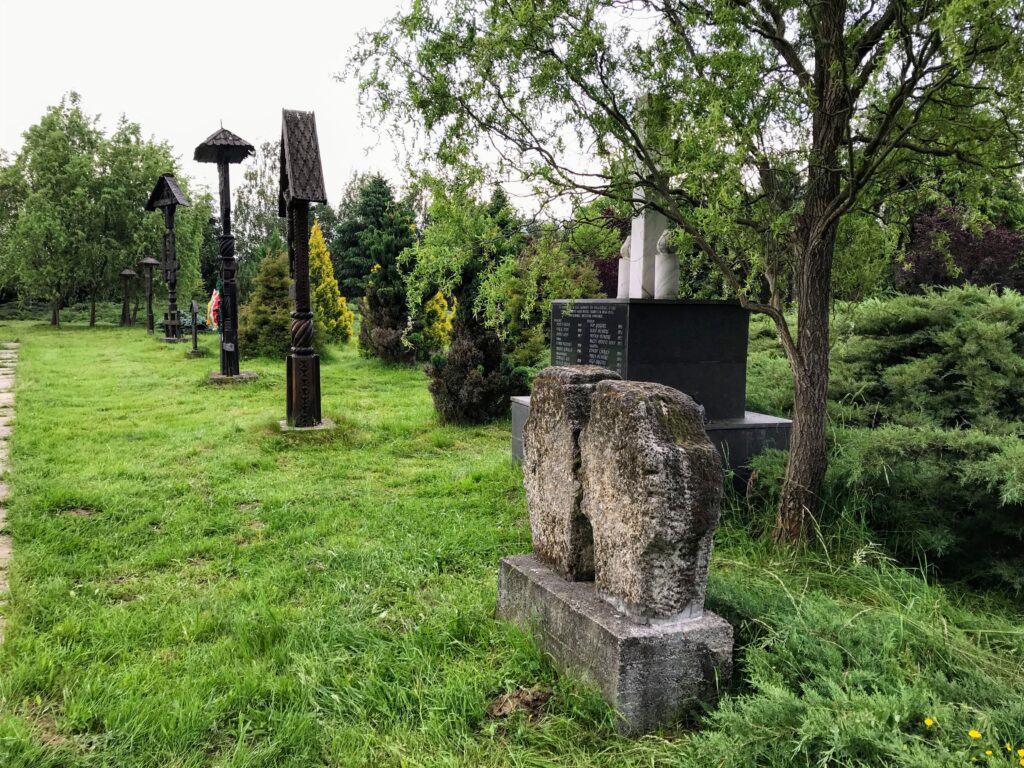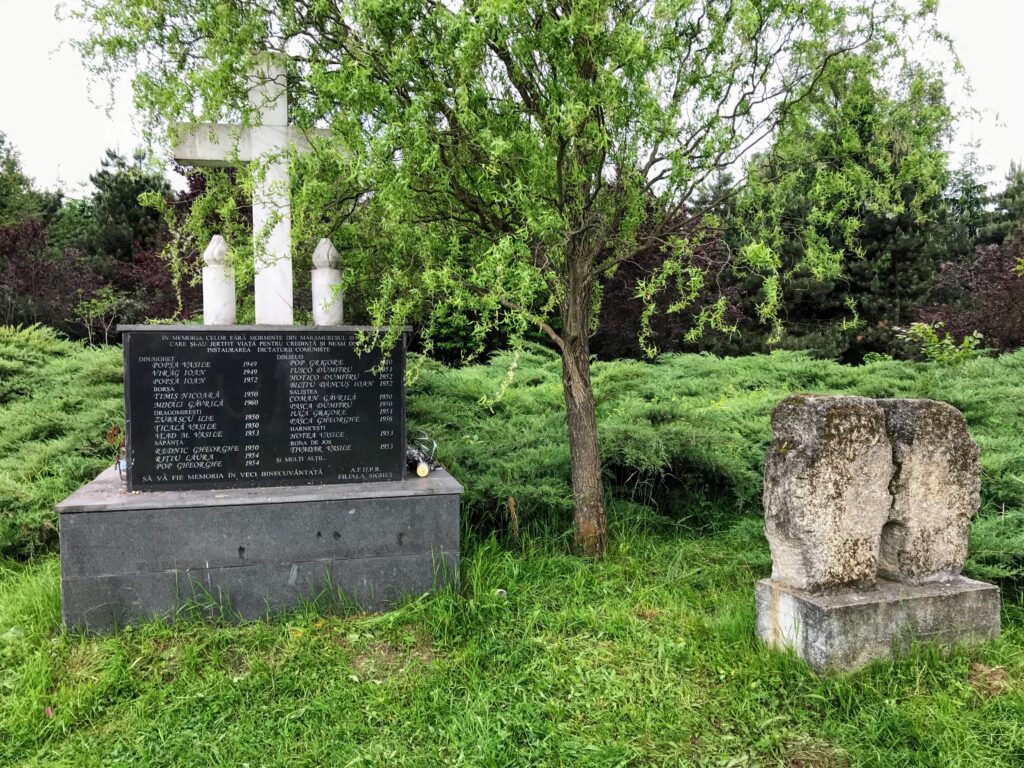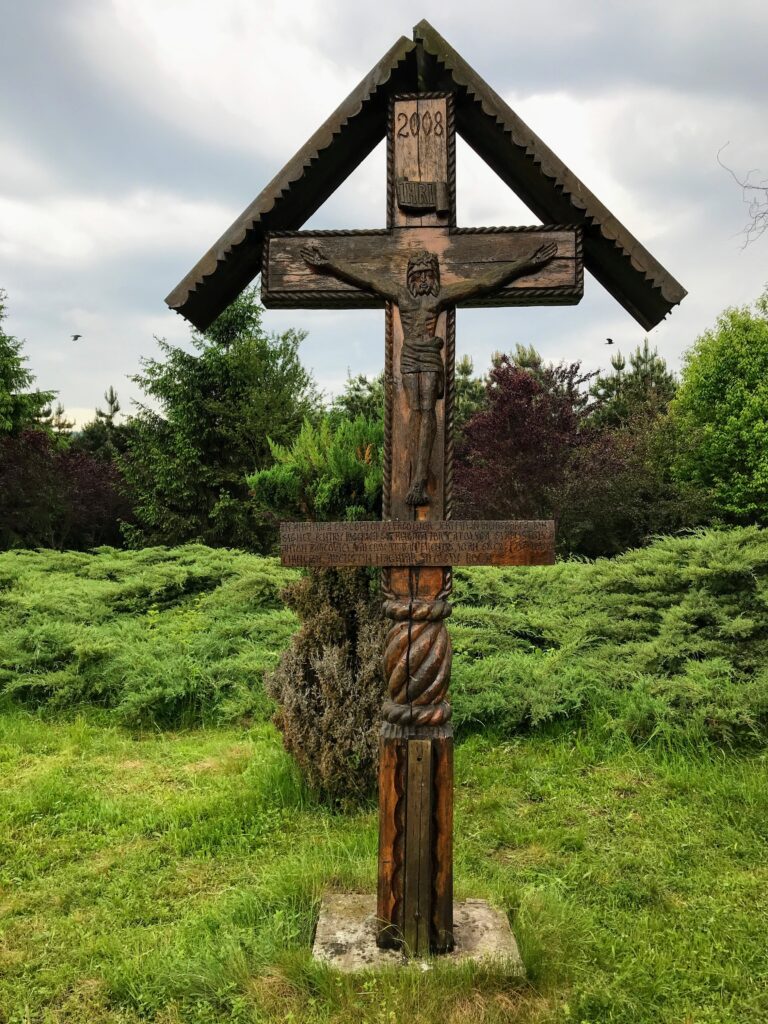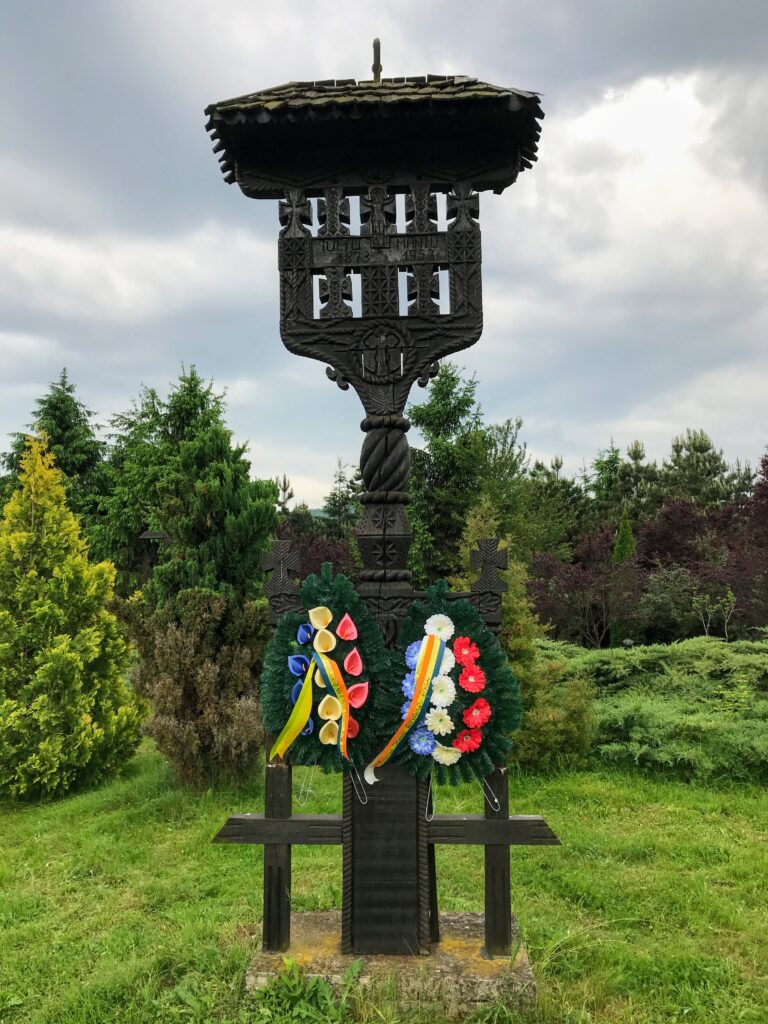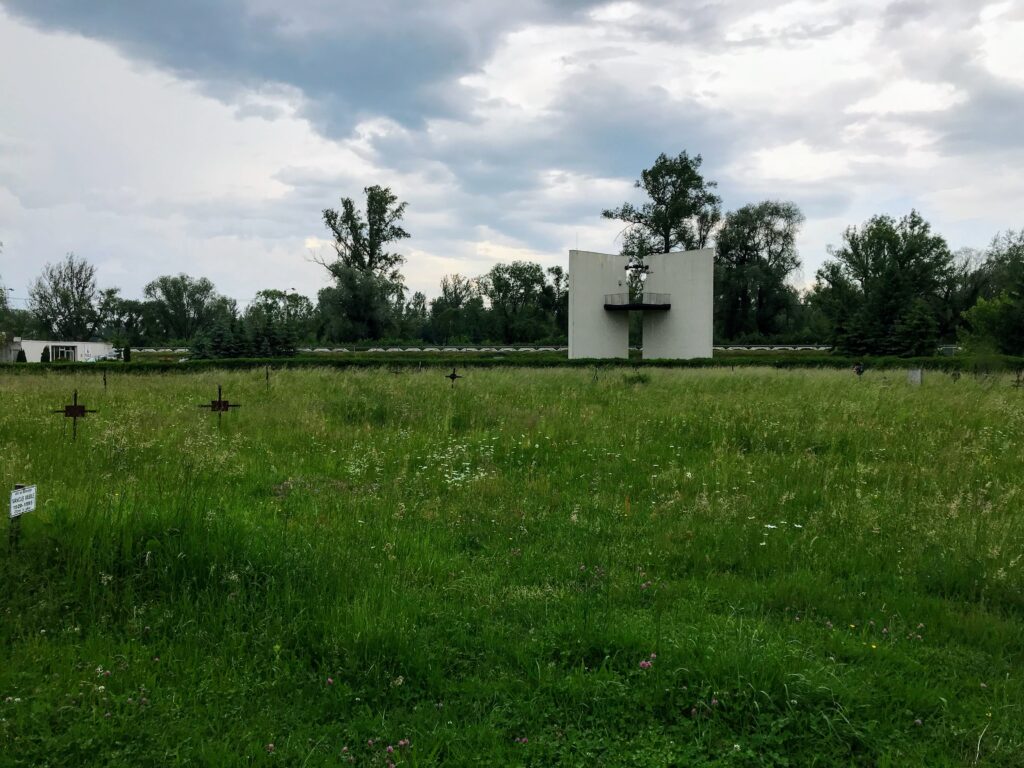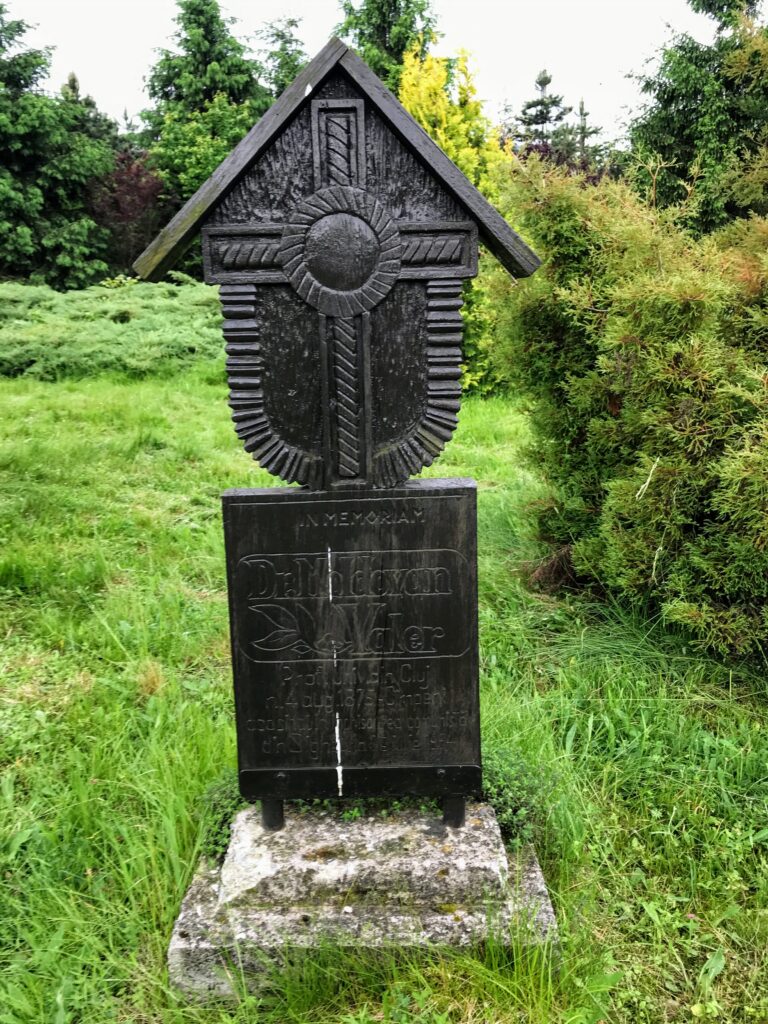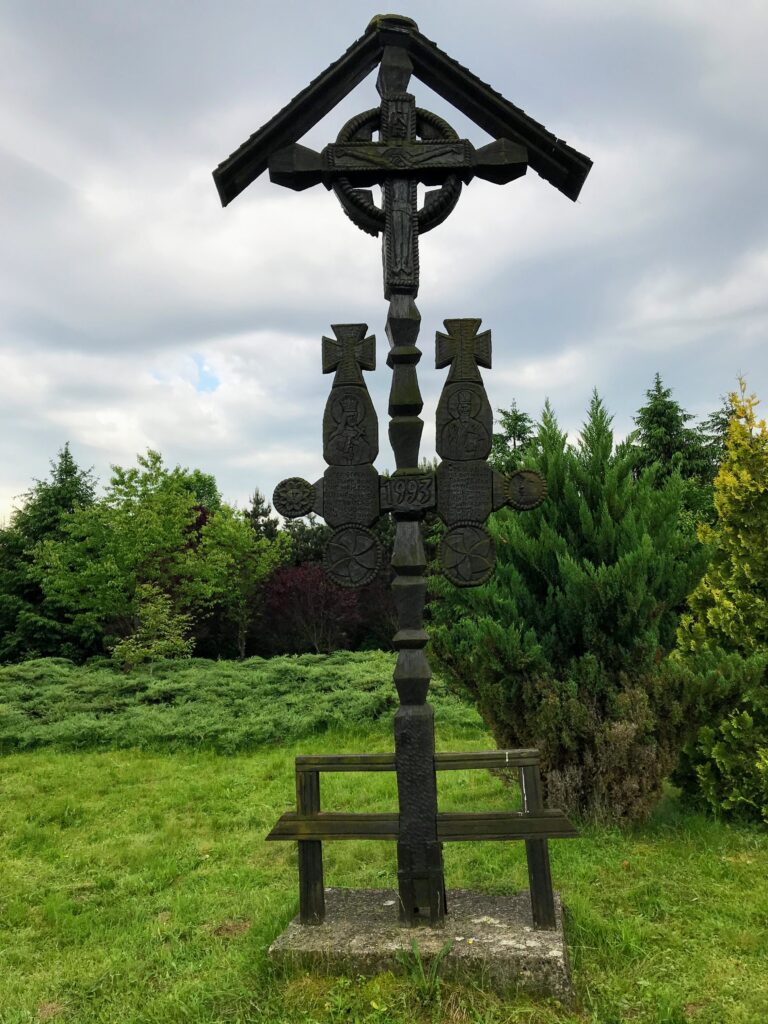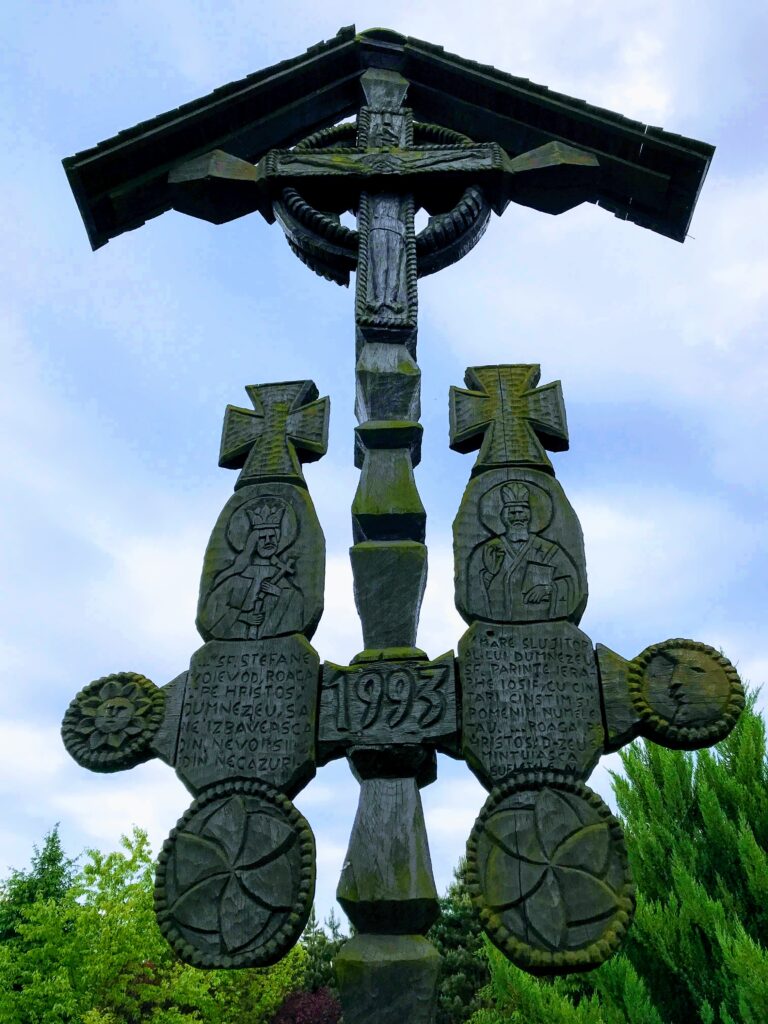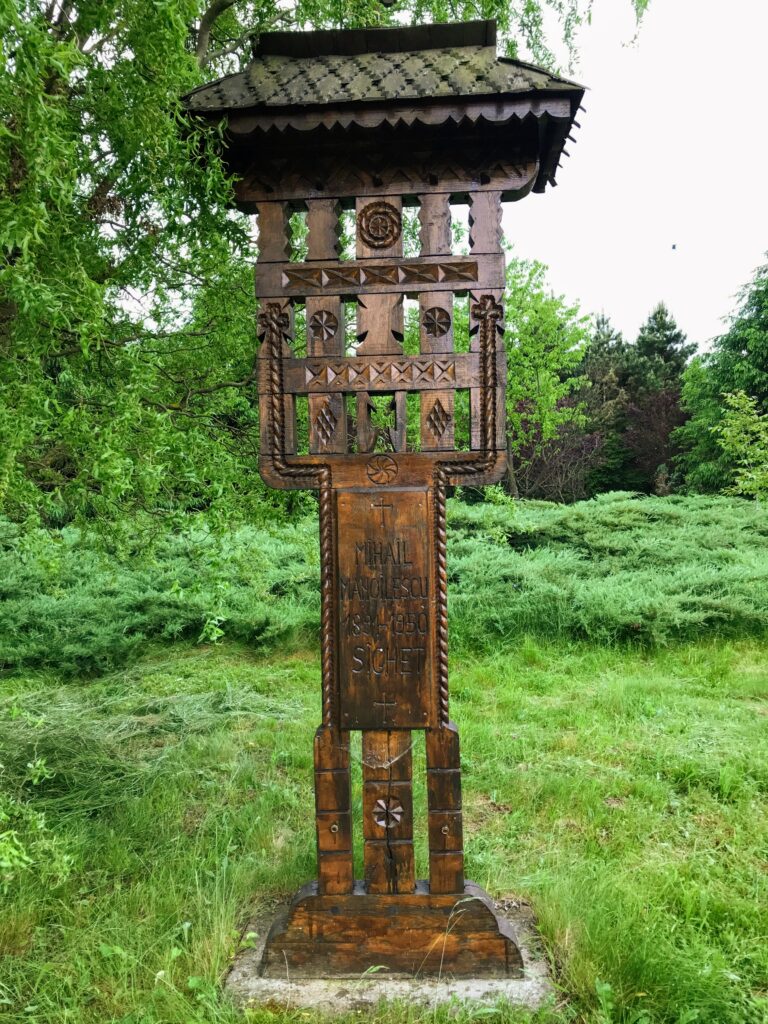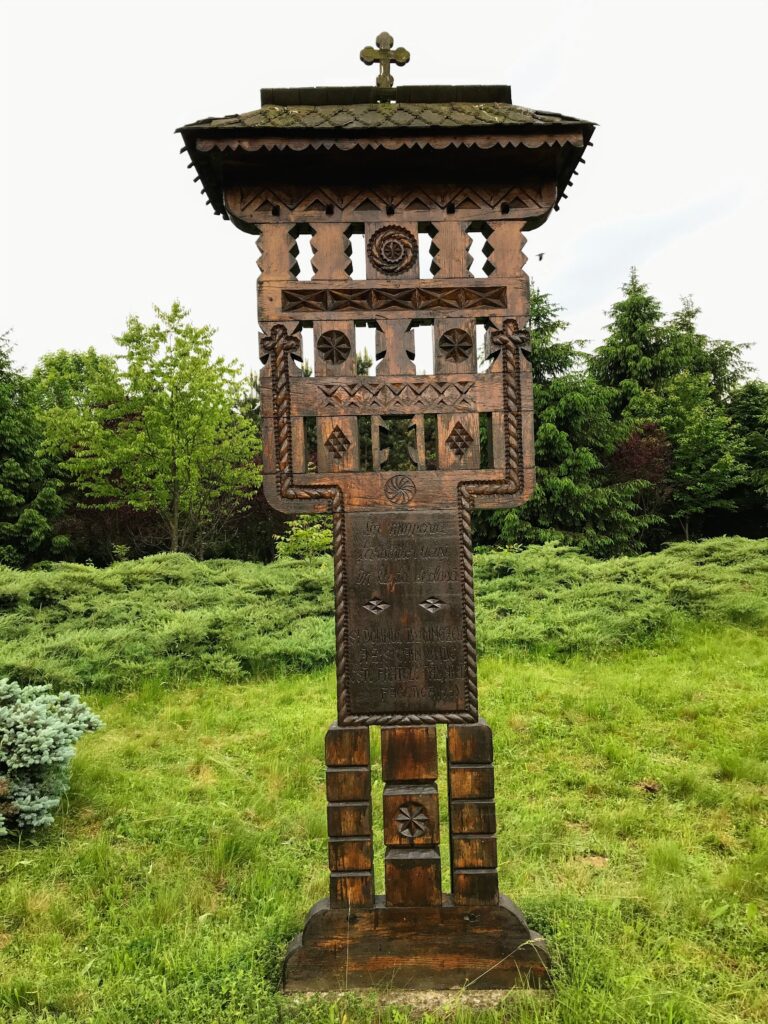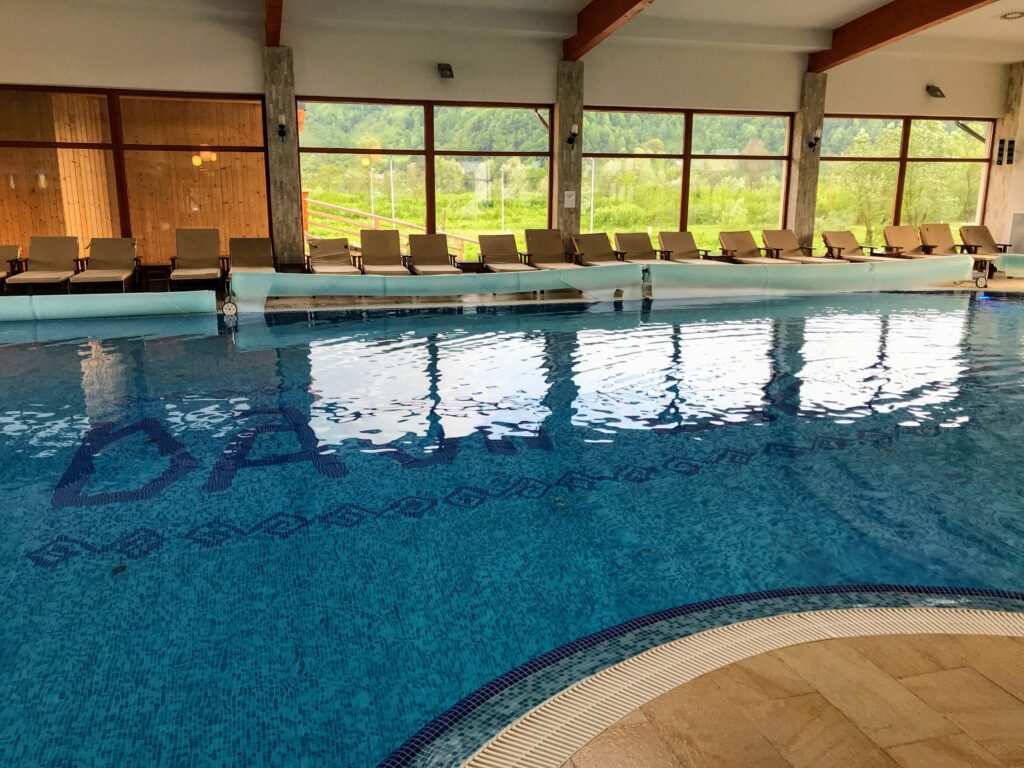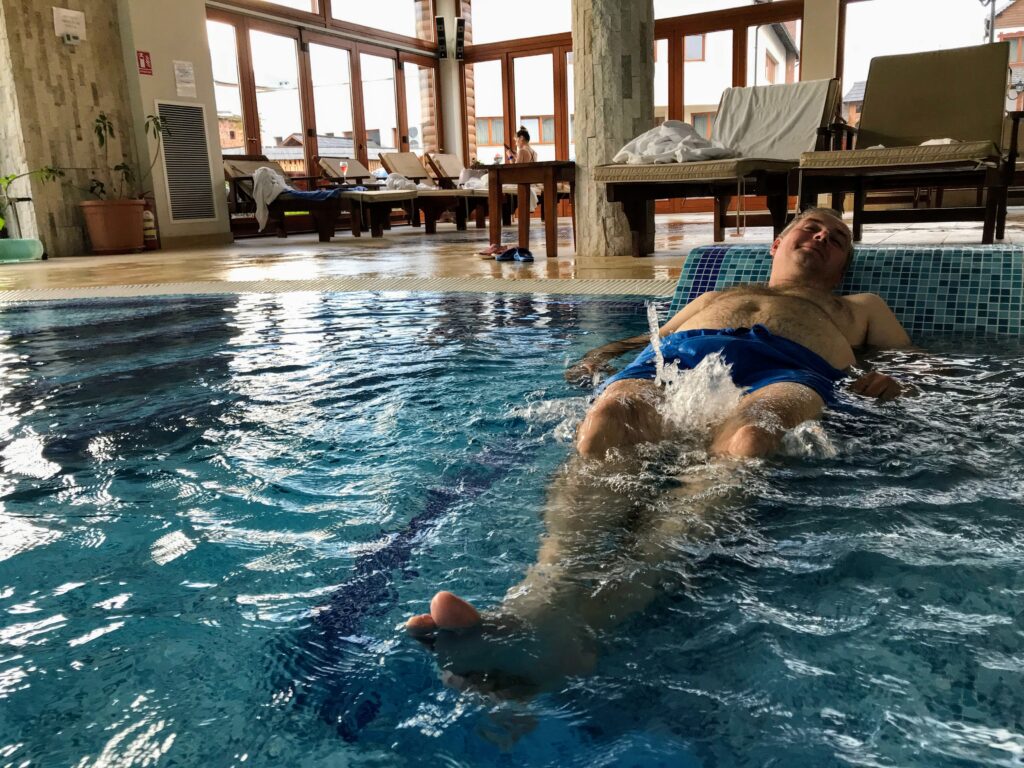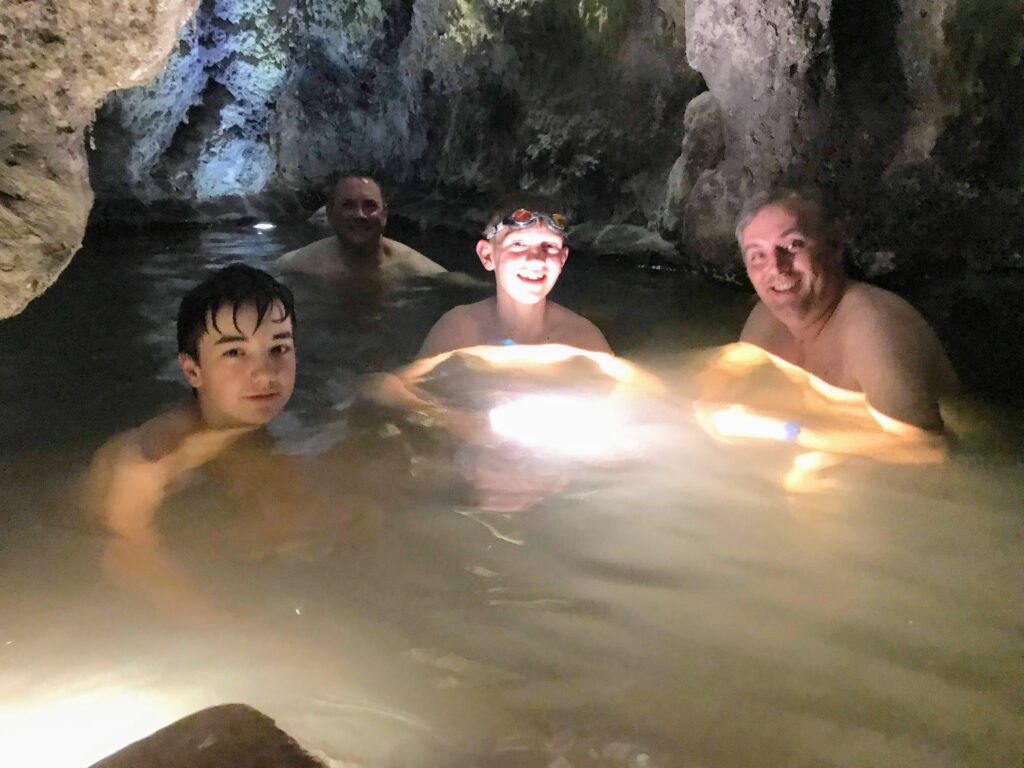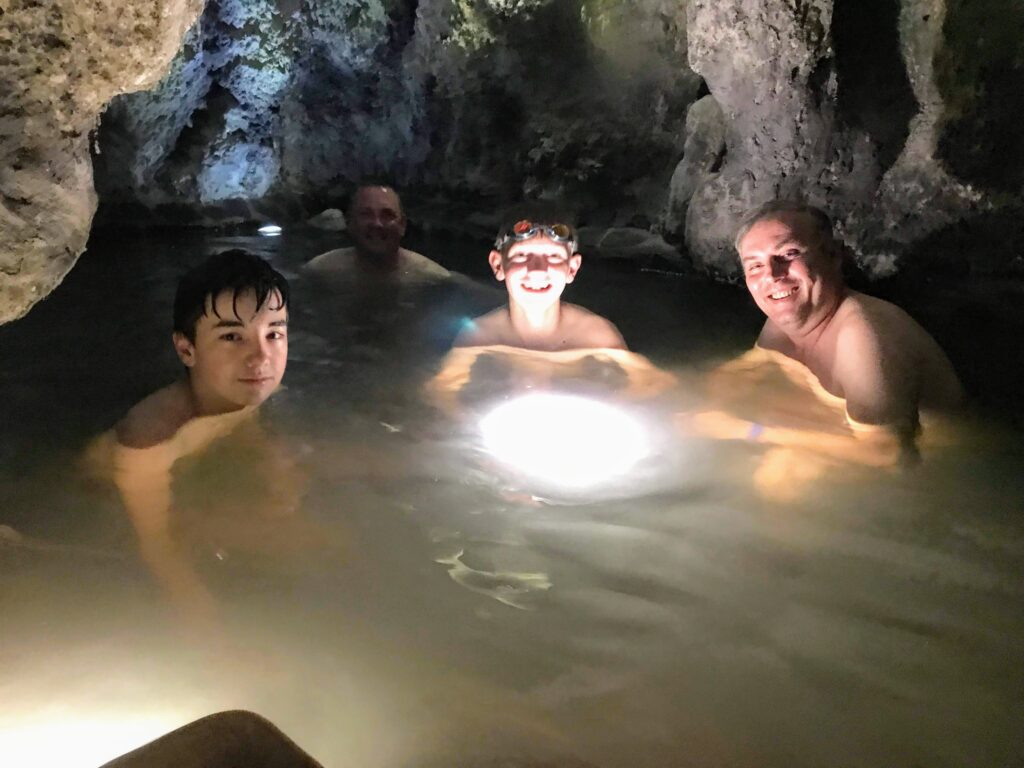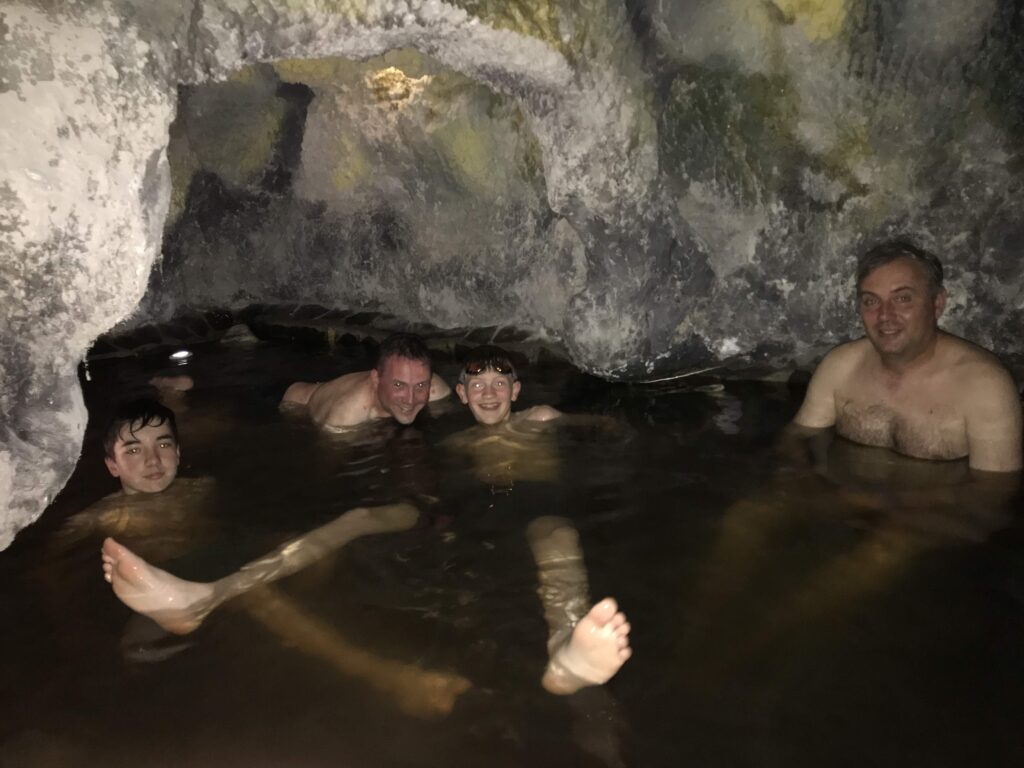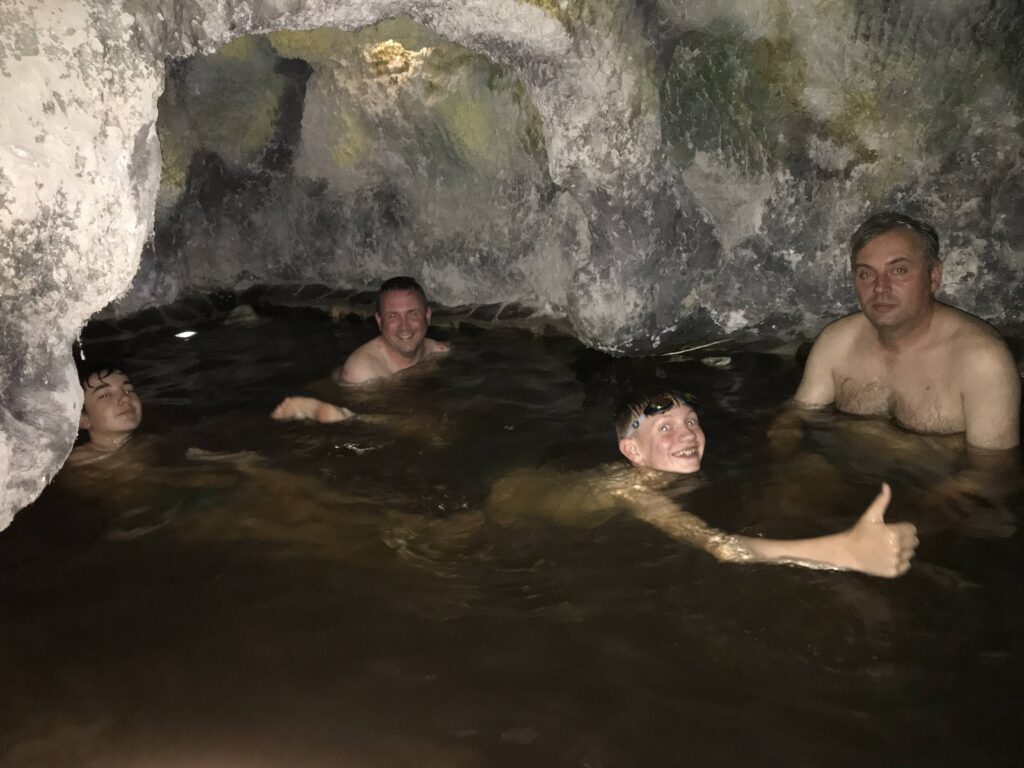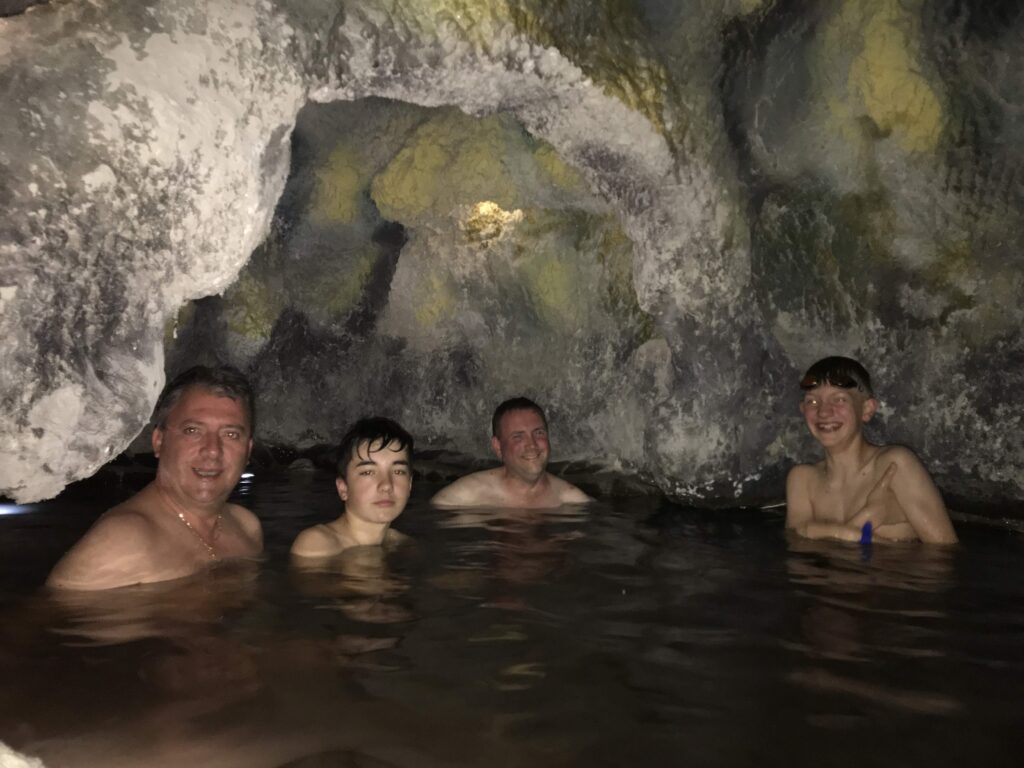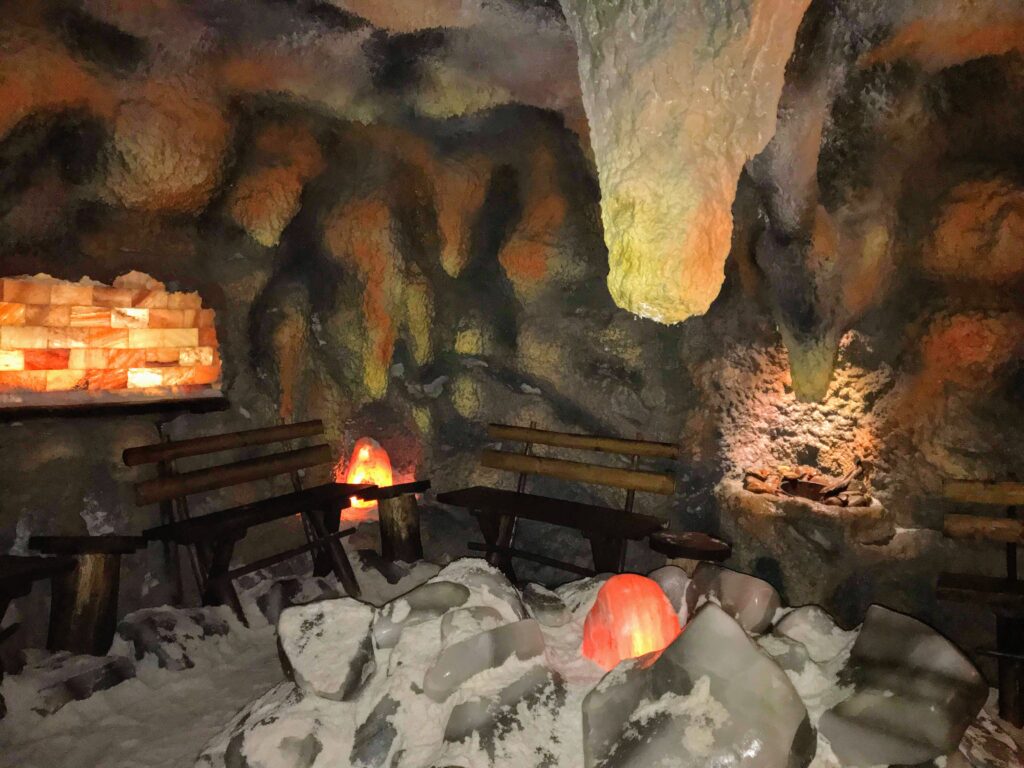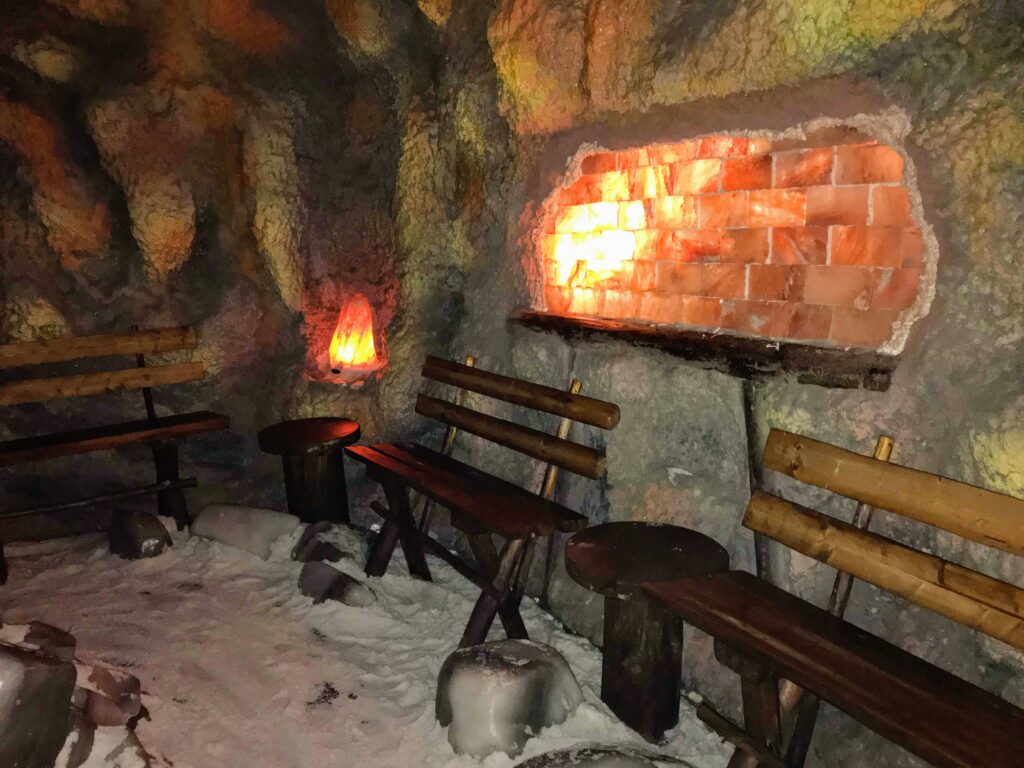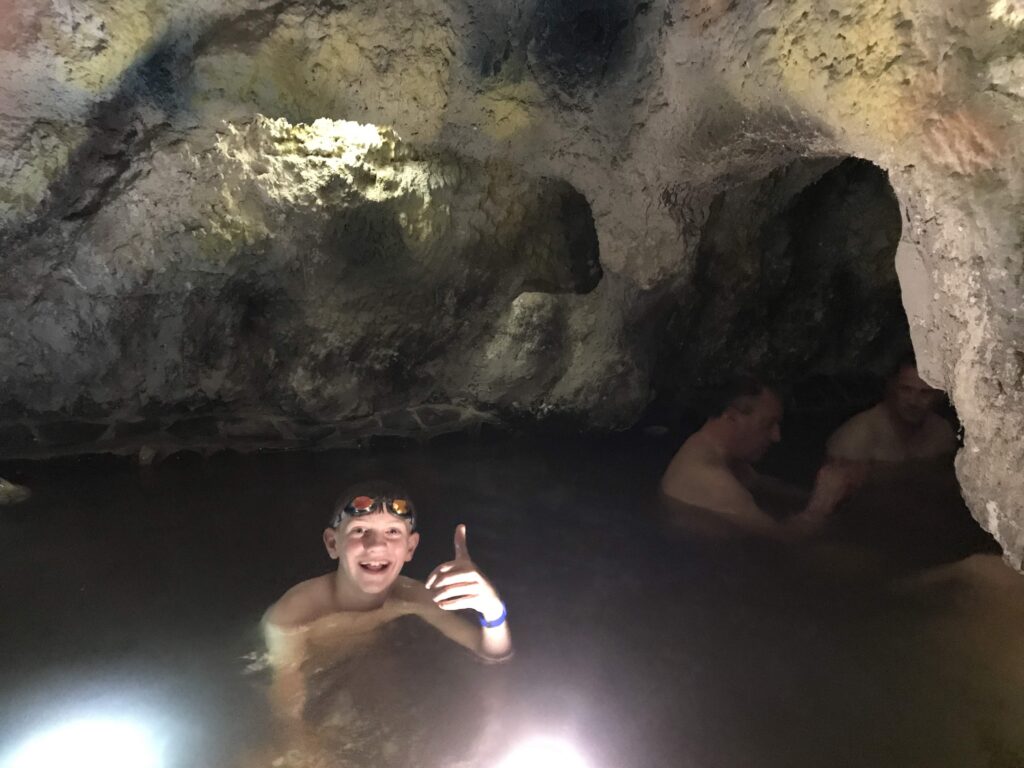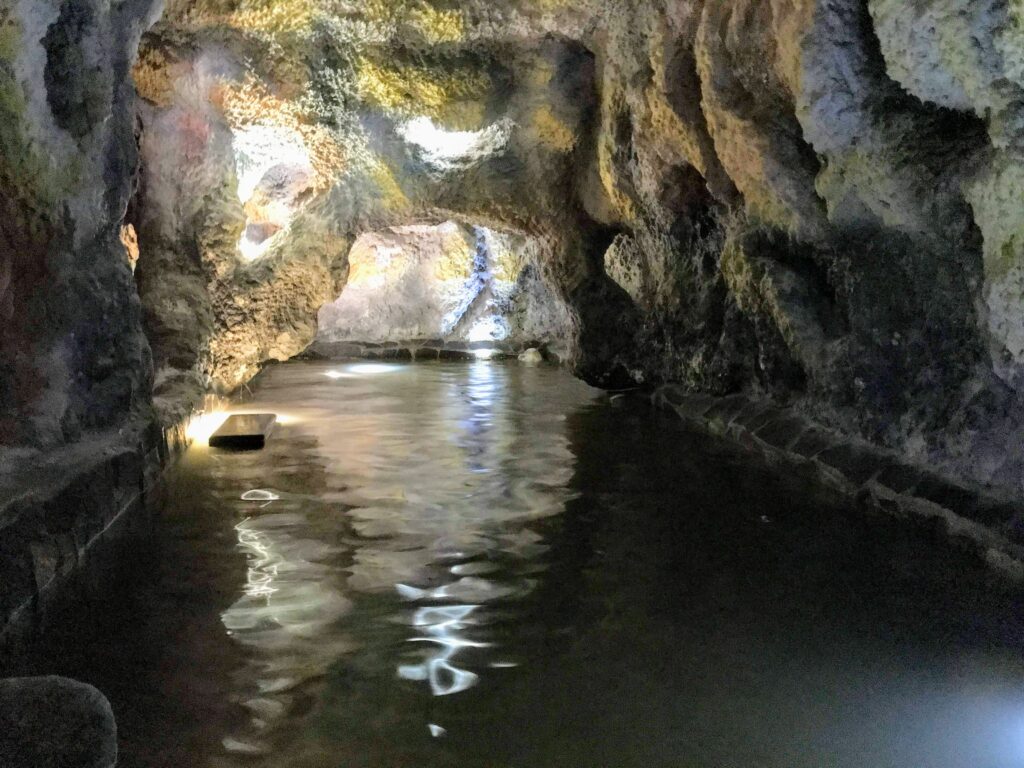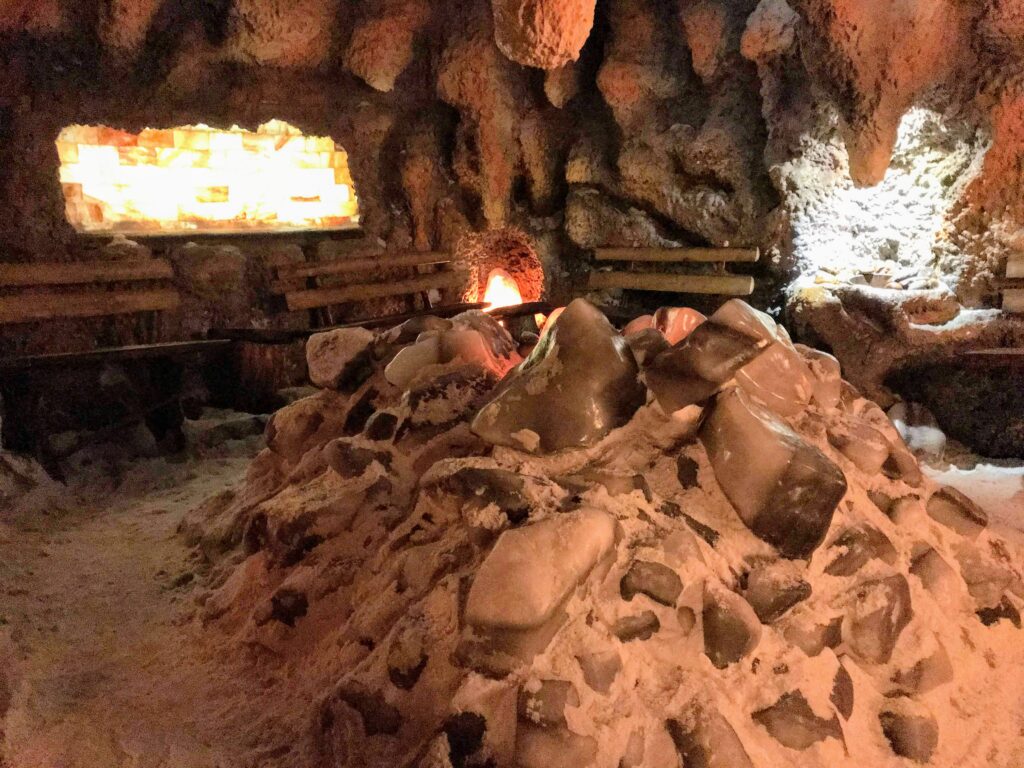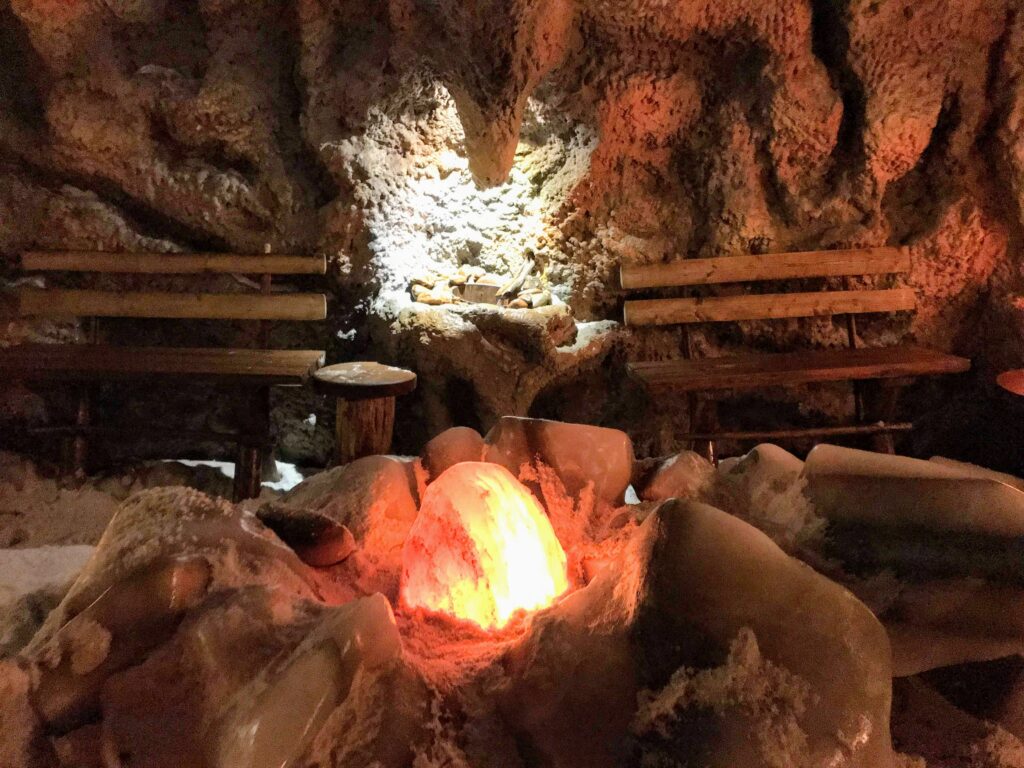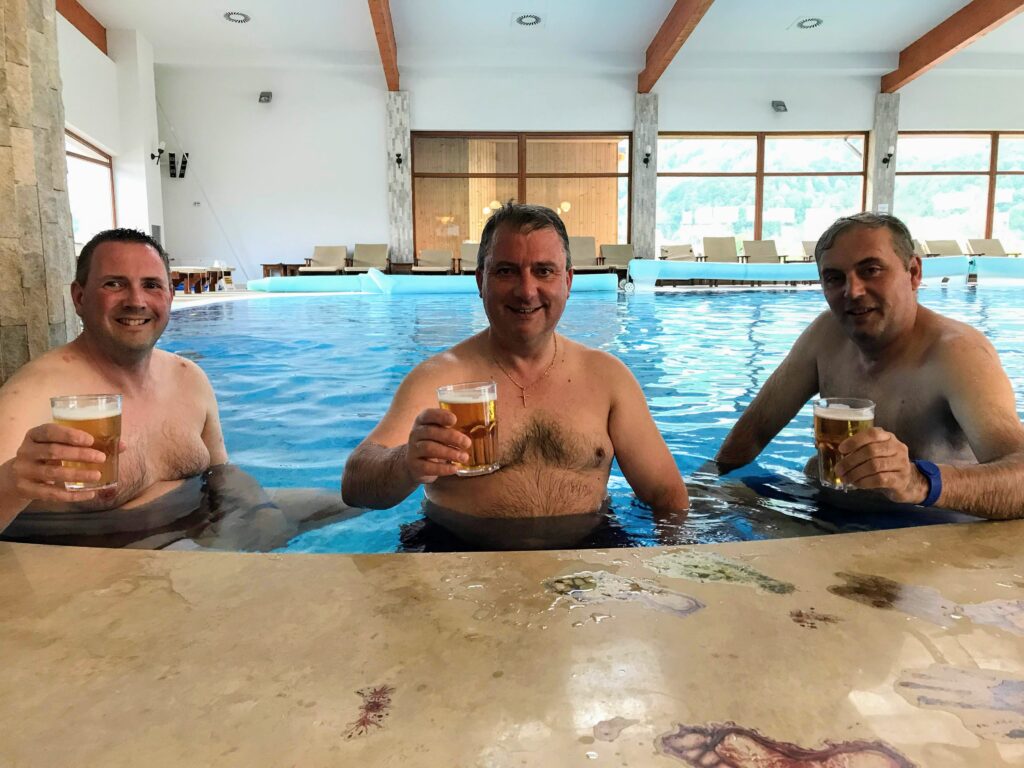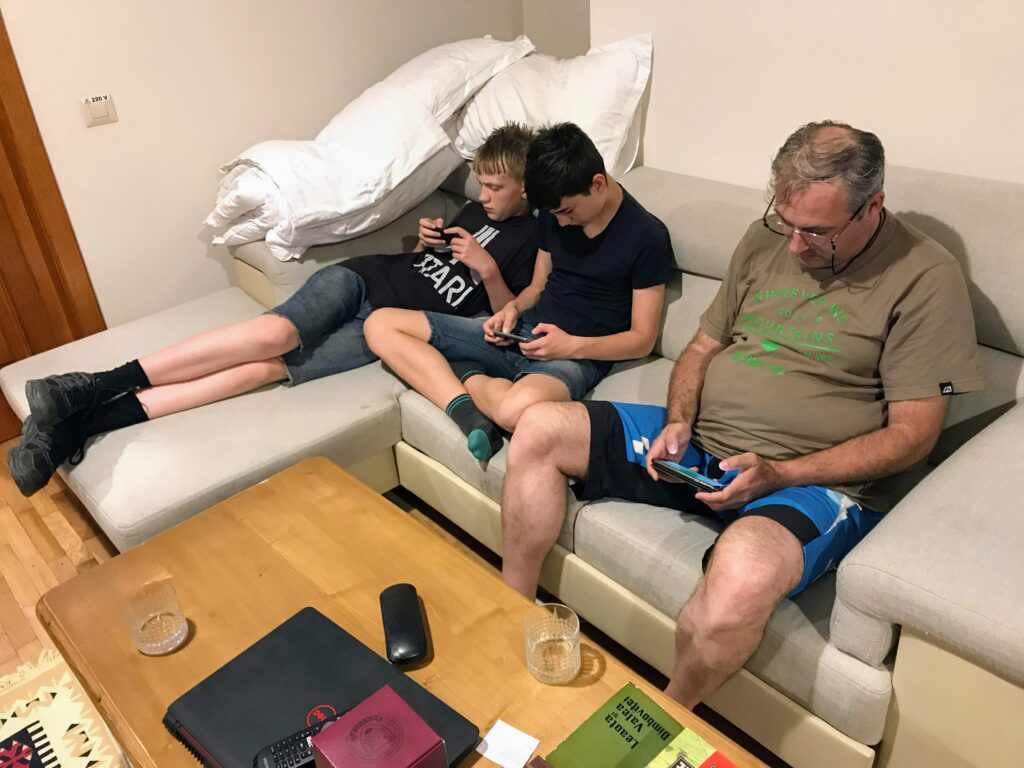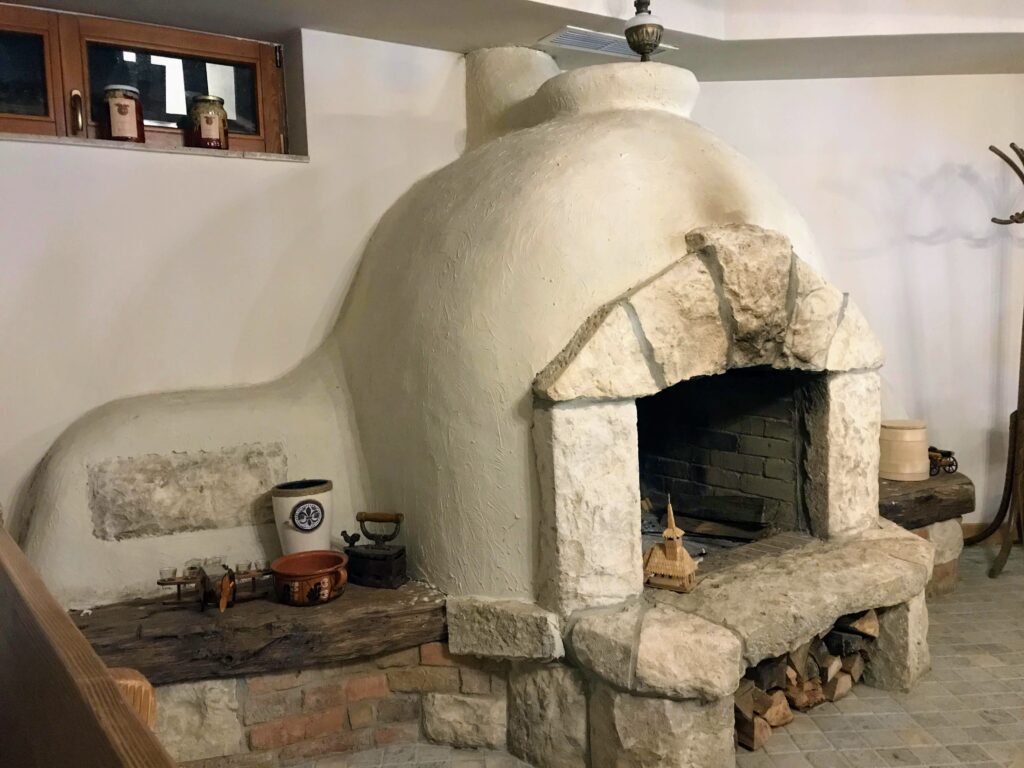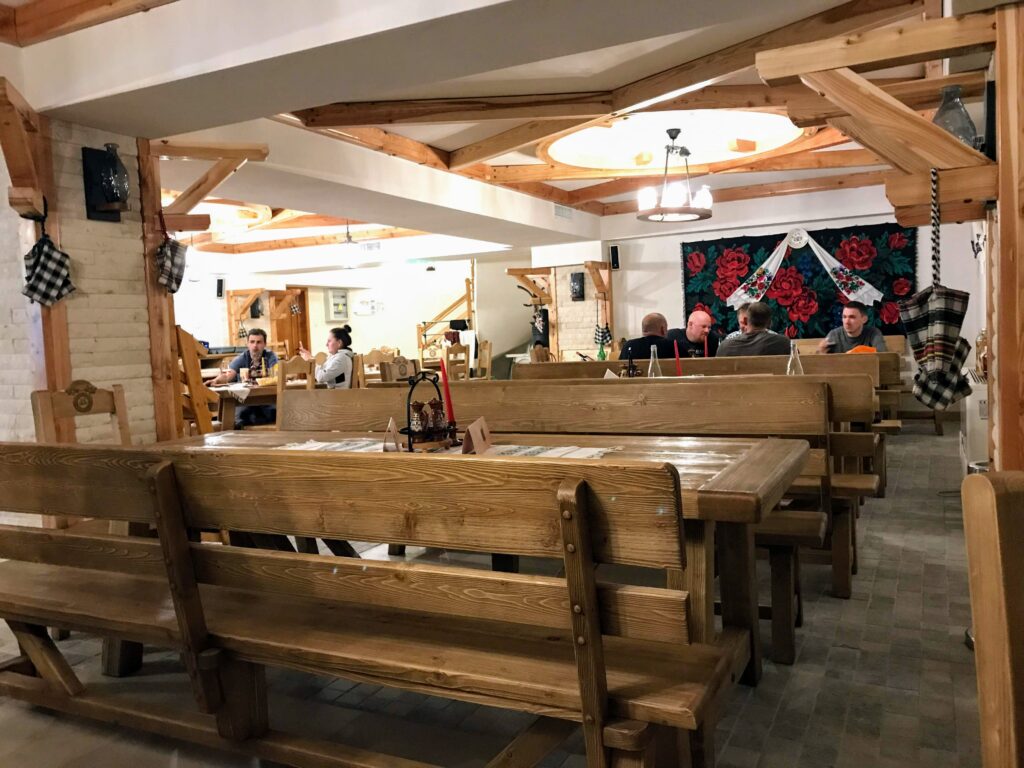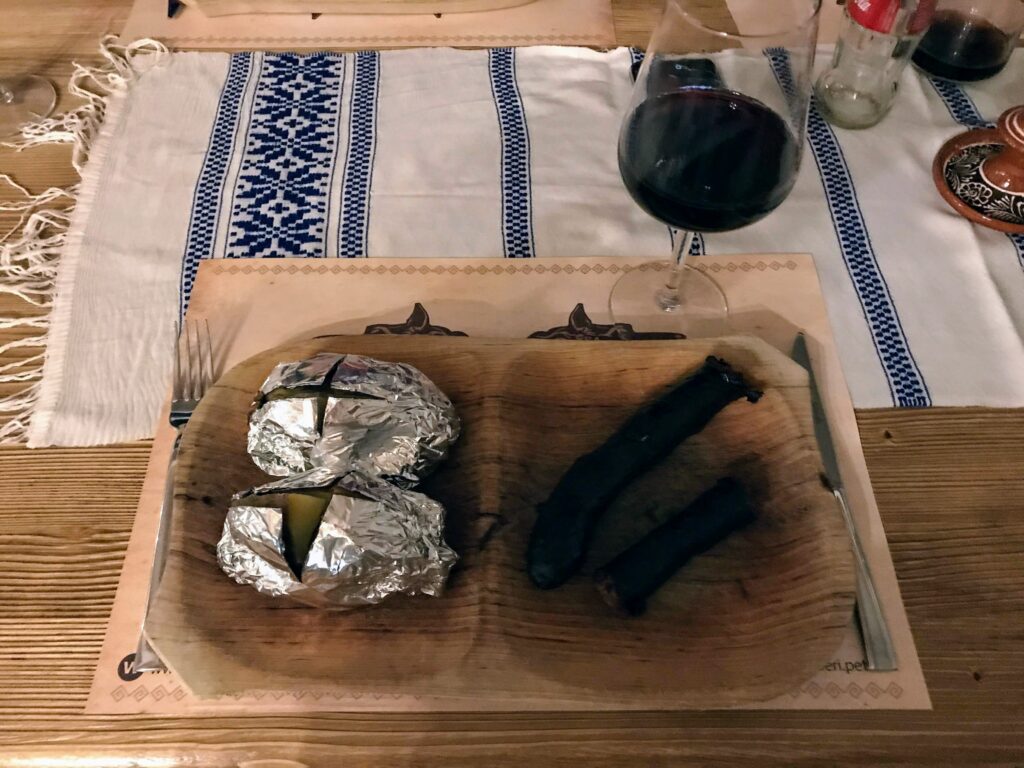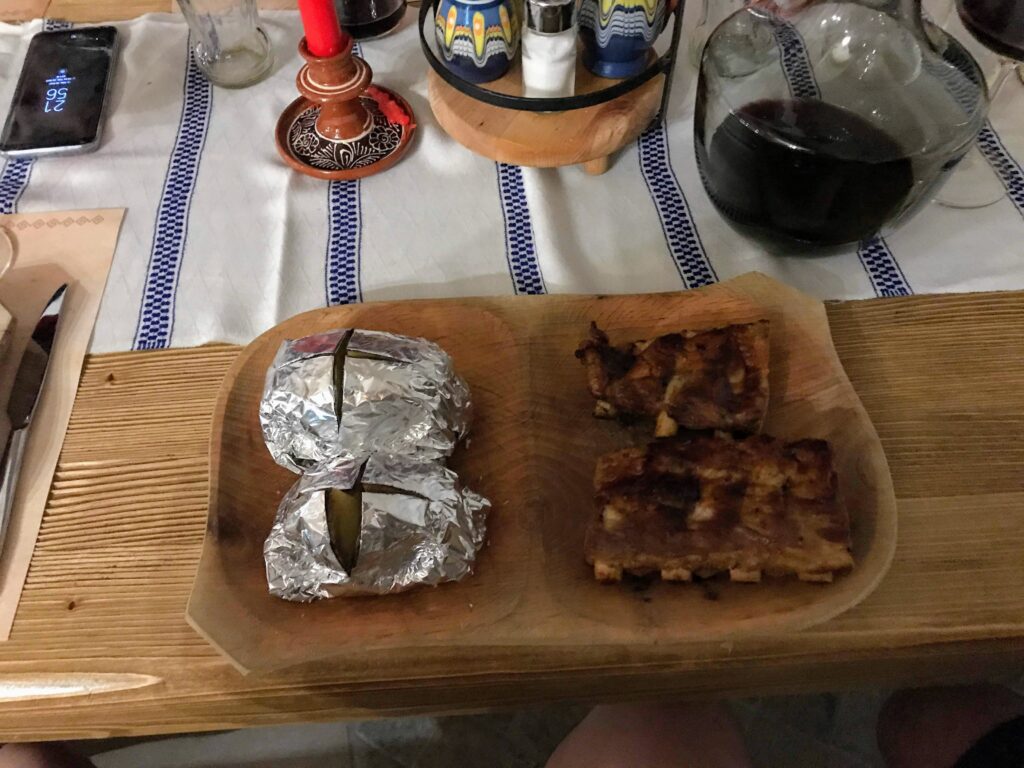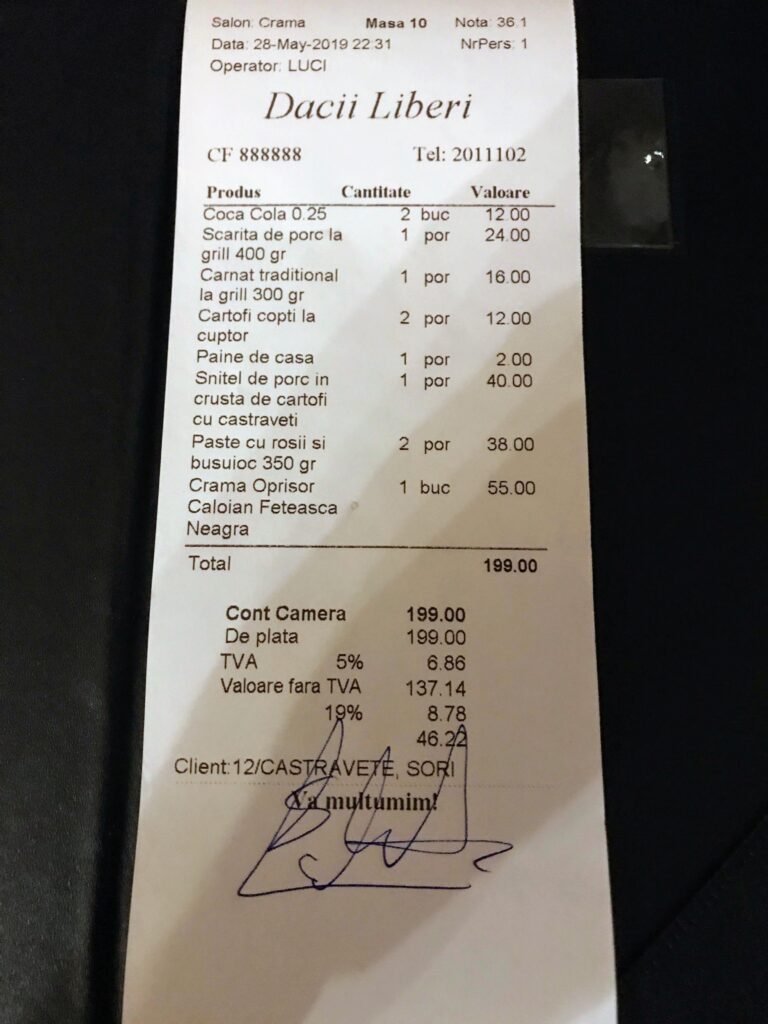Petrova, RO – Sighetu Marmației, RO – Săpânţa, RO – Sighetu Marmației, RO – Petrova, RO
Dacii Liberi Resort & Spa, Petrova
Travel Petrova– Sighetu Marmației
SNTFC R4135 CFR Class 60 1356 (60-1356-9) & Class 65 1300 (65-1300-6)
Petrova Dep. 10:33
Valea Vișeului Arr. 10:58
Valea Vișeului Railway Station
SNTFC R4135 CFR Class Class 65 1300 (65-1300-6)
Valea Vișeului Dep. 11:18
Sighetu Marmației Arr. 12:08
Travel Sighetu Marmației – Săpânța
The Merry Cemetery, Săpânța
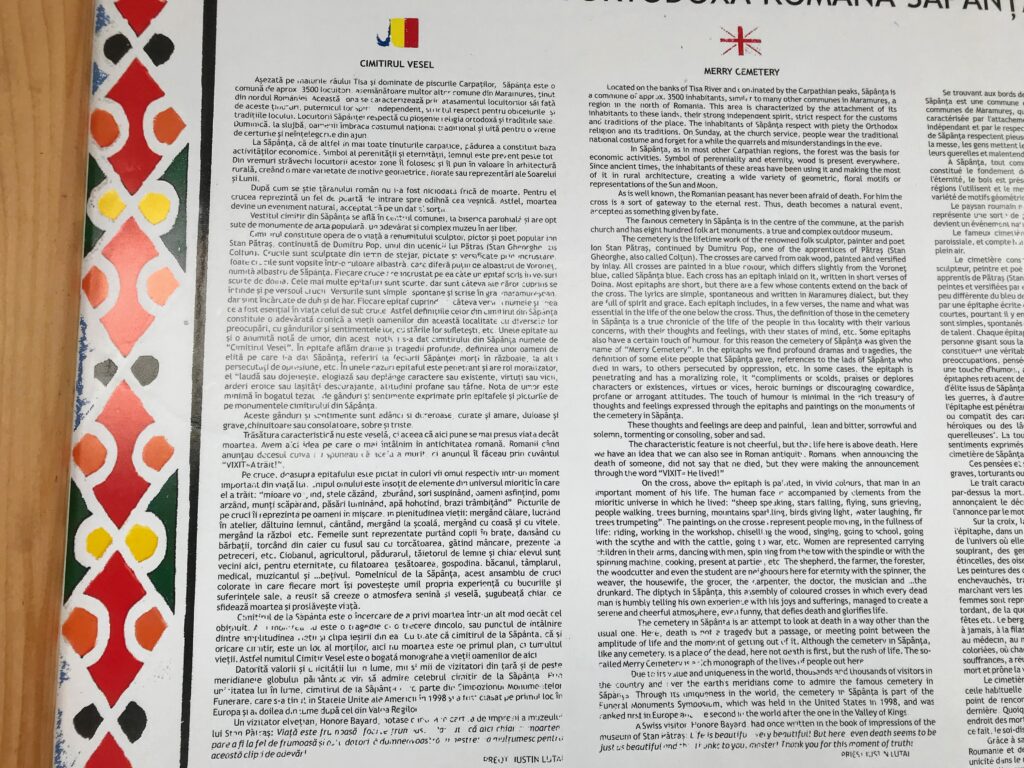
Located on the banks of Tisa River and dominated by the Carpathian peaks, Săpânța is a commune of approx. 3500 inhabitants, similar to many other communes in Maramureș, a region in the north of Romania. This area is characterized by the attachment of its inhabitants to these lands, their strong independent spirit, strict respect for the customs and traditions of the place. The inhabitants of Săpânța respect with piety the Orthodox religion and its traditions. On Sunday, at the church service, people wear the traditional national costume and forget for a while the quarrels and misunderstandings in the eve.
In Săpânța, as in most other Carpathian regions, the forest was the basis for economic activities. Symbol of perenniality and eternity, wood is present everywhere. Since ancient times, the inhabitants of these areas have been using it and making the most of it in rural architecture, creating a wide variety of geometric, floral motifs or representations of the Sun and Moon.
As is well known, the Romanian peasant has never been afraid of death. For him the cross is a sort of gateway to the eternal rest. Thus, death becomes a natural event, accepted as something given by fate.
The famous cemetery in Săpânța is in the centre of the commune, at the parish church and has eight hundred folk art monuments, a true and complex outdoor museum.
The cemetery is the lifetime work of the renowned folk sculptor, painter and poet Ion Stan Pătraș, continued by Dumitru Pop, one of the apprentices of Pătraș (Stan Gheorghe, also called Colțun). The crosses are carved from oak wood, painted and versified by inlay. All crosses are painted in a blue color, which differs slightly from the Voroneț blue, called Săpânța blue. Each cross has an epitaph inlaid on it, written in short verses of Doina. Most epitaphs are short, but there are a few whose contents extend on the back of the cross. The lyrics are simple, spontaneous and written in Maramureș dialect, but they are full of spirit and grace. Each epitaph includes, in a few verses, the name and what essential in the life of the one below the cross. Thus, the definition of those in the cemetery in Săpânța is a true chronicle of the life of the people in this locality with their various concerns, with their thoughts and feelings, with their states of mind, etc. Some epitaphs also have a certain touch of humour, for this reason the cemetery of Săpânța was given the name of “Merry Cemetery”. In the epitaphs we find profound dramas and tragedies, the definition of some elite people that Săpânța gave, references to the lads of Săpânța who died in wars, to others persecuted by oppression, etc. In some cases, the epitaph is penetrating and has a moralizing role, it “compliments or scolds, praises or deplores characters or existences, virtues or vices, heroic burnings or discouraging cowardice, profane or arrogant attitudes. The touch of humour is minimal in the rich treasury of thoughts and feelings expressed through the epitaphs and paintings on the monuments of the cemetery in Săpânța.
These thoughts and feelings are deep and painful, lean and bitter, sorrowful and solemn, tormenting and consoling, sober and sad.
The characteristic feature is not cheerful, but that life here is above death. Here we have an idea that we can also see in Roman antiquity. Romans, when announcing the death of someone, did not say that he died, but they were making the announcement through the word “VIXIT = He lived!”.
On the cross, above the epitaph is painted, in vivid colours, that man in an important moment of his life. The human face is accompanied by elements from the mioritic universe in which he lived: “sheep speaking, stars falling, flying, suns grieving, people walking, trees burning, mountains sparkling, birds giving light, water laughing, fir trees trumpeting”. The paintings on the crosses represent people moving, in the fullness of life: riding, working in the workshop, chiselling the wood, singing, going to school, going with the scythe and with the cattle, going to war, etc. The shepherd, the farmer, the forester, the woodcutter and even the student are neighbours here for eternity with the spinner, the weaver, the housewife, the grocer, the carpenter, the doctor, the musician and … the drunkard. The diptych in Săpânța, this assembly of coloured crosses in which every dead man is humbly telling his own experience with his joys and sufferings, managed to create a serene and cheerful atmosphere, even funny, that defies death and glorifies life.
The cemetery in Săpânța is an attempt to look at death in a way other than the usual one. here, death is not a tragedy but a passage, or meeting point between the amplitude of life and the moment of getting out of it. Although the cemetery in Săpânța, like any cemetery, is a place of the dead, here not death is first, but the rush of life. The so called Merry Cemetery is a rich monograph of the lives of people out here.
Due to its value and uniqueness in the world, thousands and thousands of visitors in the country and over the earth’s meridians come to admire the famous cemetery in Săpânța. Through its uniqueness in the world, the cemetery in Săpânța is part of the Funeral Monuments Symposium, which was held in the United States in 1998, and was ranked first in Europe and the second in the world after the one in the Valley of Kings.
A Swiss visitor Honore Bayard, had once written in the book of impressions if the museum of Stan Pătraș: Life is beautiful, very beautiful! But here even death seems to be just as beautiful and this thanks to you, master! Thank you for this moment of truth!
PRIEST IUSTIN LUTAI
Travel Săpânța – Sighetu Marmației
The Paupers’ Cemetery, Sighetu Marmației
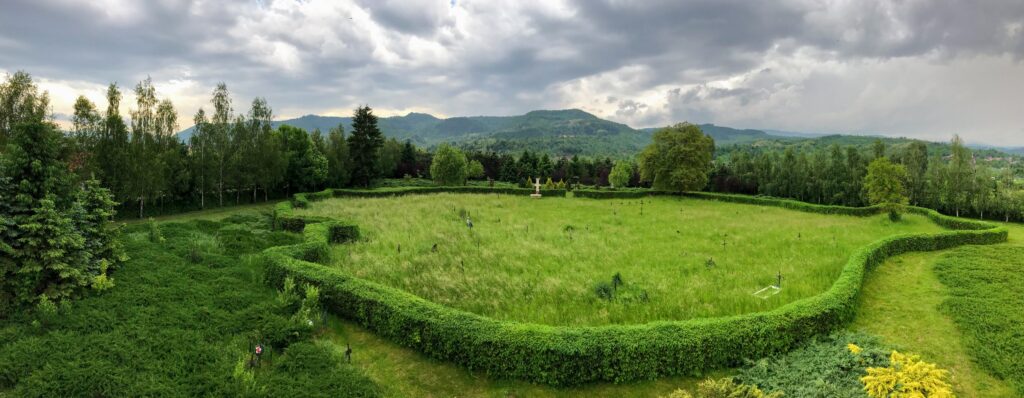
Necropolis of the Tombless
The Paupers’ Cemetery is an architectural ensemble dedicated to the memory of the political prisoners who died or were executed in the communist prisons and labour camps or as deportees, and also to the memory of the partisans who were killed in battles with the Securitate.
Work began on the cemetery in 1997, when The Memorial to the Victims of Communism and to the Resistance was declared an “ensemble of national interest” (Law no. 95/1997). Through Law no. 95, the cemetery was declared part of the Memorial, given that in the 1950s it was here that dozens of political prisoners who had died in Sighet Prison were buried.
It is not known with certainty how many of the fifty-four prisoners who died in Sighet were buried here and how many were buried elsewhere, as the communists were in the habit of covering their tracks: the names of the dead were neither recorded officially nor marked on their graves.
Their graves were made to vanish in time among the hundreds of earlier and later graves, leaving no trace.
Indeed, according to the locals, in the early 1990s, when the cemetery was abandoned and used as grazing land, the horses’ hooves used to unearth unidentified human skulls.
Attempts to identify the dead, using lasers and archaeological excavation, have come to nought. However, the Civic Academy Foundation has over the years built this symbolic ensemble dedicated to all the victims of communist repression in Romania.
The outline of Romania has been traced using fir trees, and in the place on the map corresponding to the town of Sighet (regarded as an epicentre of repression) an altar and cenotaph have been erected. In the niche beneath the altar dozens of urns containing earth from the various prisons, labour camps, deportation centres, and places of execution have been laid.
Behind the altar stands a cross in the Byzantine style, carved from limestone by master stonemason Constantin Marinete, and in the background a number of wooden crosses have been erected over the course of time by associations and families of the victims.
The ensemble also includes a few andesite plaques on which are carved the names of Romanian citizens who died in the Soviet Union after being deported. They complete the names of those who died in the prisons and labour camps, a part of which are inscribed on the plaques in the courtyard of the Memorial. On the touchscreen in the entrance hall, you can find concrete data about the way in which the communist regime systematically exterminated its opponents. You will find further information in ‘The Book of the Dead”. (please contact the keepers).
In 2011-12, the Civic Academy Foundation erected a Portal of Memory (architect: Ștefan Radocea) on the side of the cemetery by the road, which also serves as a belfry. Inspired by the Biblical motif of the Ladder of Life, the portal also evokes an open book, within which can be seen a view of the architectural ensemble. It is a symbolic way of celebrating the countless fighters who gave their lives and liberty for democracy, defying the communist and atheist dictatorship.
With or without graves, they are present in the Paupers’ Cemetery, where their lost homeland embraces them like a mother and mourns them through successive generations of vegetation.
Romulus Rusan




